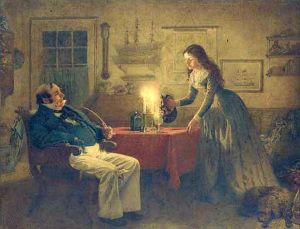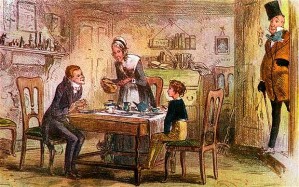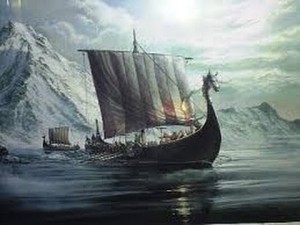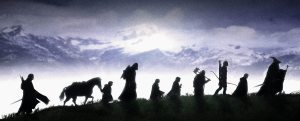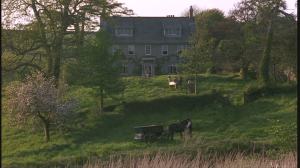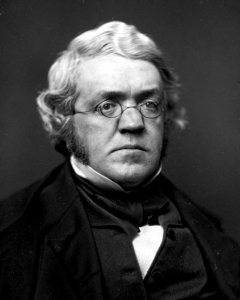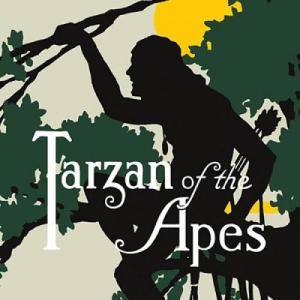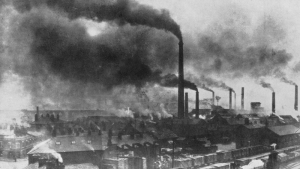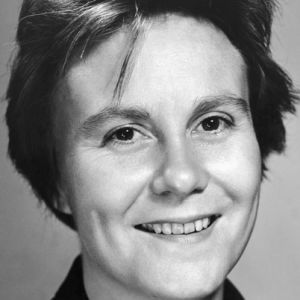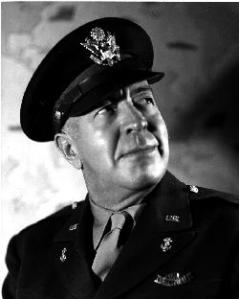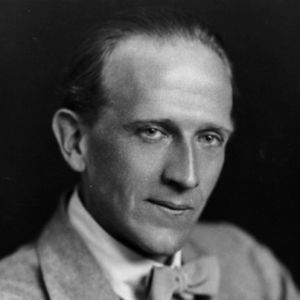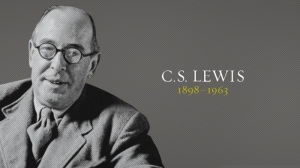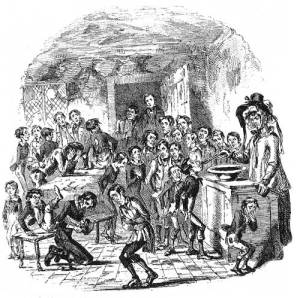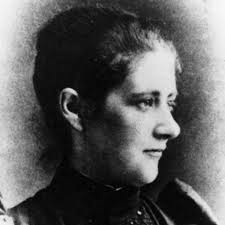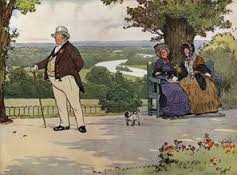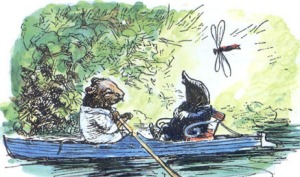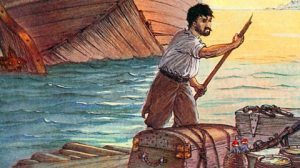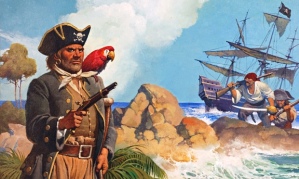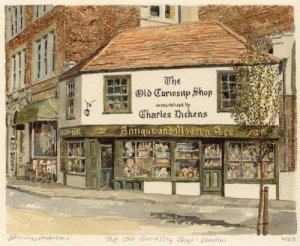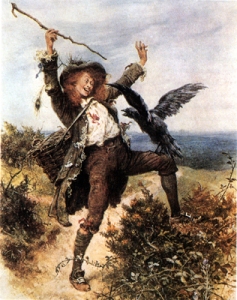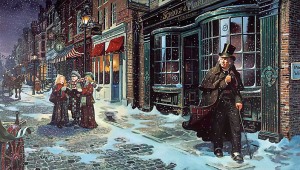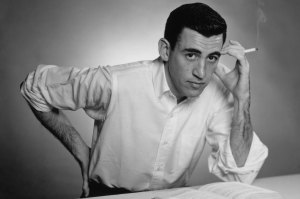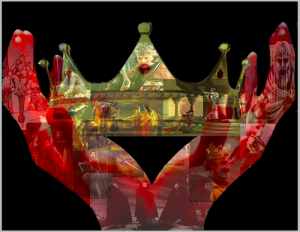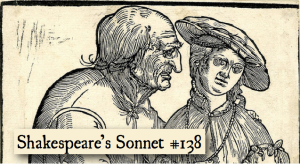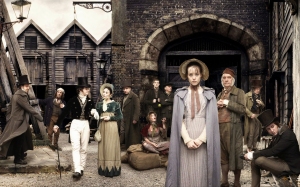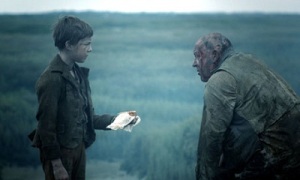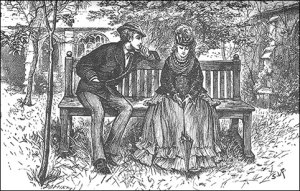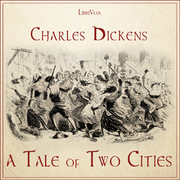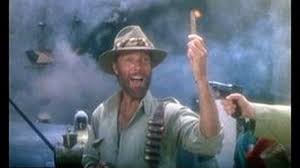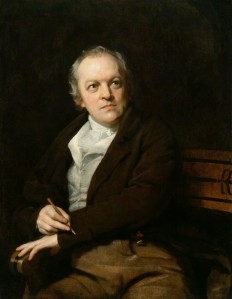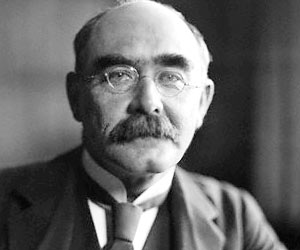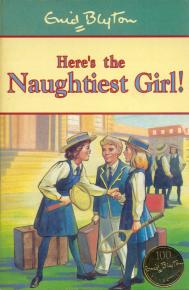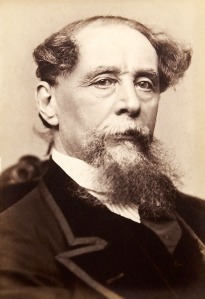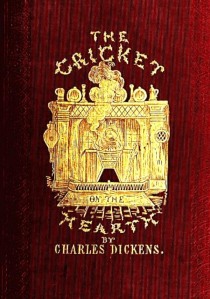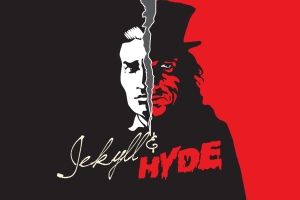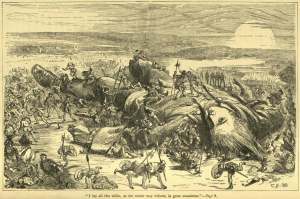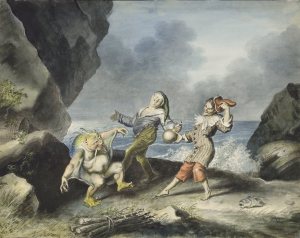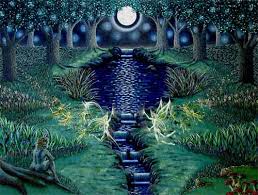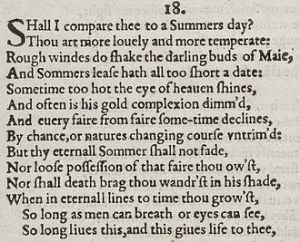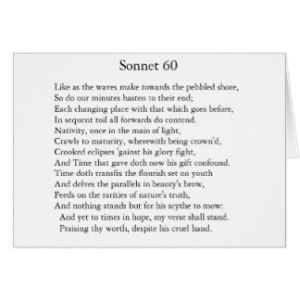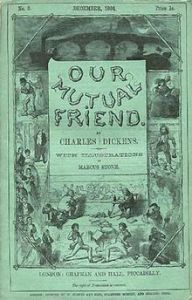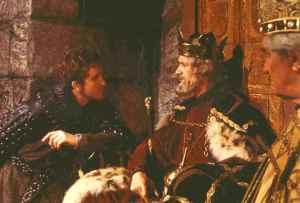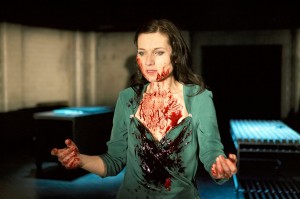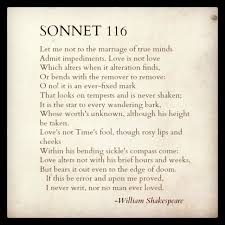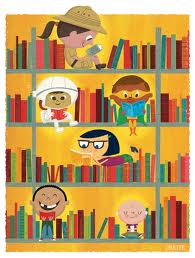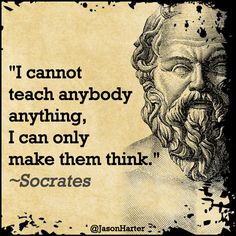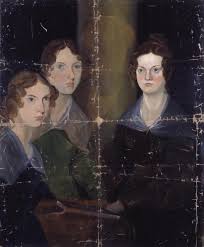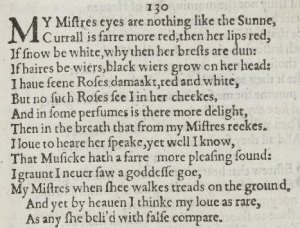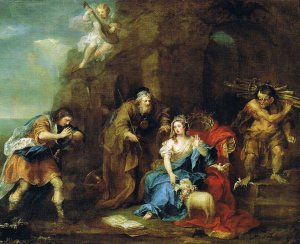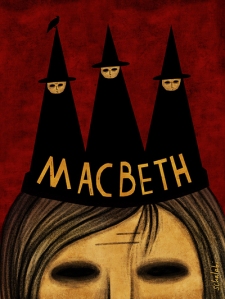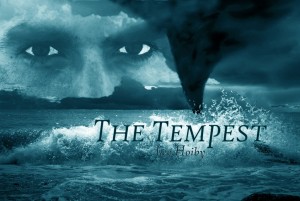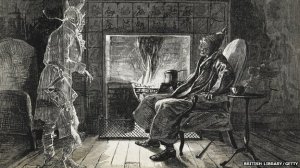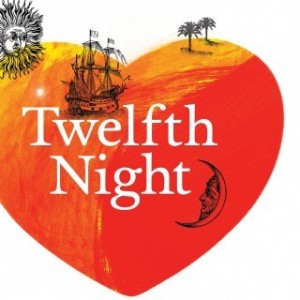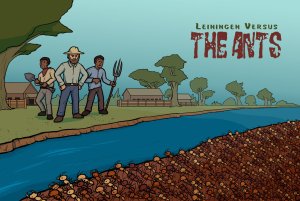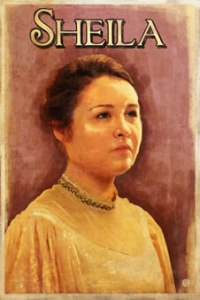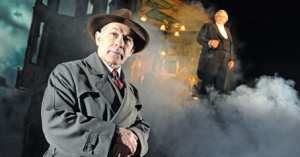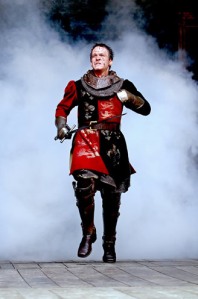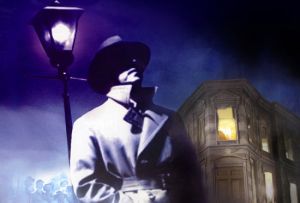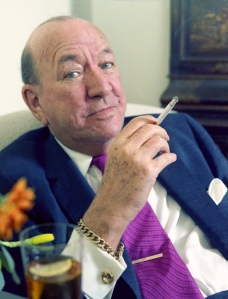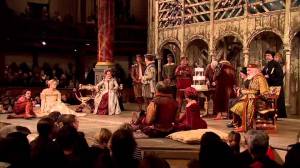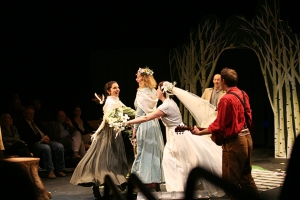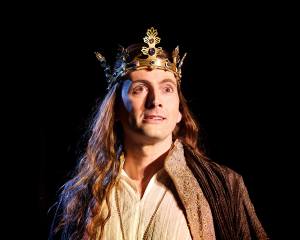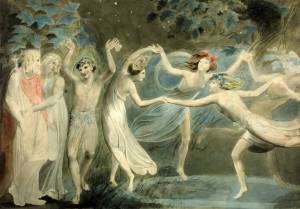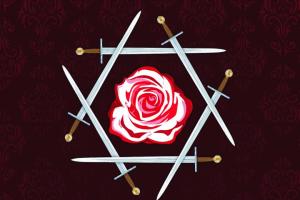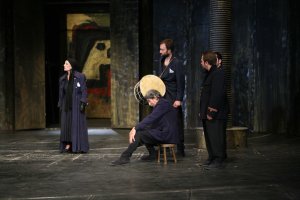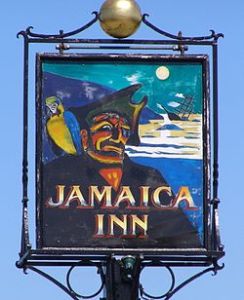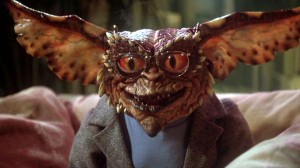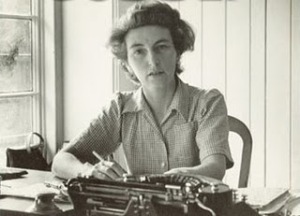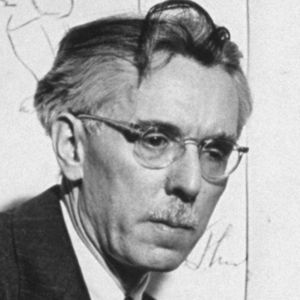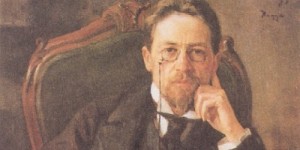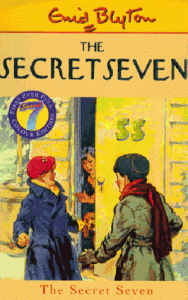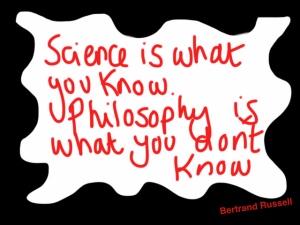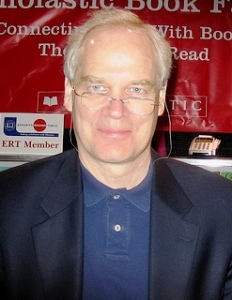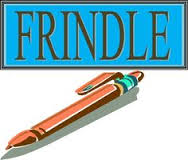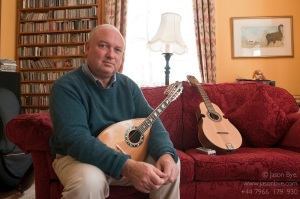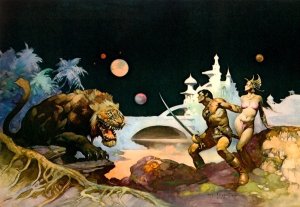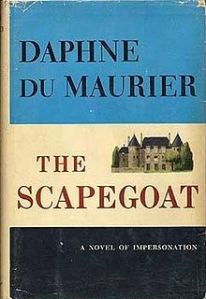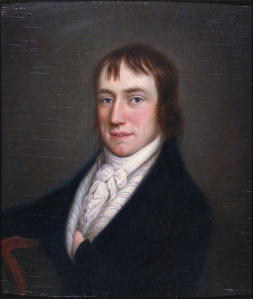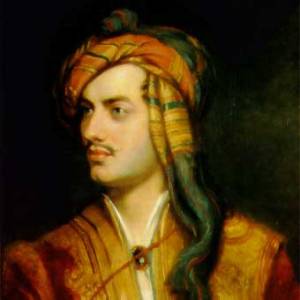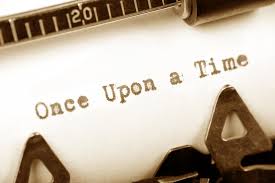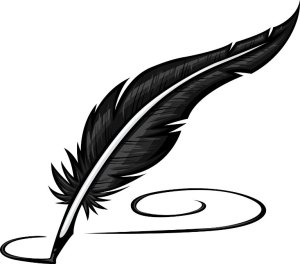Dombey and Son
Why Charles Dickens went to Switzerland
Dealings with the firm Dombey and Son: Wholesale, Retail and for Exportation, is the full title of this novel, written in Lausanne, Switzerland in 1848.
Paul Dombey owns a shipping company and dreams of having a son to continue the family business. His wife dies during childbirth and his son and namesake Paul then dies young at the age of 6. Both events devastate poor Mr Dombey and this is reflected in his unpleasant references to train journeys.
Having all kinds of family problems and then a failing business Dombey employs a wet nurse called Mrs Richards who has children of her own. The nurse is hired to care for Paul Dombey’s daughter Florence and son Paul because he has lost his wife.
Mrs Richards loses Florence when caring for her and she gets kidnapped by Good Mrs Brown who eventually returns her.
Walter, who works for Dombey’s shipping company is sent out to Barbados on business, though the boat is lost and he is presumed drowned. However Walter was saved by a passing ship when floating on some wreckage with two other sailors
After a visit to Leamington Spa, Dombey returns to London and marries a second time. He ties the knot with Edith Granger, though this is short lived as his wife leaves him for Mr Carker and they run away to Dijon in France together. For this Dombey blames his daughter, even though Edith stayed far longer with Dombey because of Florence. He hits Florence and she runs away to the Midshipman.
Having survived and back safely, Walter marries Florence when he returns home from the high seas. She was all alone having been rejected by her father for not being a boy and siding with her new step mother.
Walter and Florence sail to China on Walters new ship while Dombey and Son goes bankrupt. Paul loses everything and sits around depressed, now with regret, worrying about where his daughter is. Then all of a sudden Florence returns with her own son called Paul and the family is lovingly reunited.
Charles Dickens gained world wide recognition after this novel was published, massively out selling his great rival, William Makepeace Thackeray with the serialisation.
Destruction is reflected with railways as Charles Dickens was in a train crash himself and always has a morbid view of trains. For example, industrialisation destroying parts of London and degrading people with slave labour is reflected in Dombey and Son by the new railway built through lovely Camden Town. It is thought to represent the London and Birmingham Railway built in the years leading up to the novel.
David Copperfield
David Copperfield. The Personal History, Adventures, Experience and Observation of David Copperfield the Younger of Blunderstone Rookery (which he never meant to publish on any account).
This story is a journey through life of a boy growing up the hard way who was born at Blunderstone Rookery.
David’s father dies before he is born and his mother marries Mr Murdstone when David is in Yarmouth. When receiving a beating from Murdstone David Copperfield bites him and is sent away to boarding school as punishment.
Salem House is a horrible place like Dotheboys’ in Nicholas Nickleby.
Edward Murdstone is David Copperfield’s cruel stepfather who beats him for falling behind in his studies. It is thought he kills Clara and her baby, hence the name ‘Murd’ and he is a cold person reflected in the ‘stone’ part of his memorable name, so typical of Charles Dickens. He was only interested in the inheritance and marries for this reason alone.
Clara Copperfield, David’s mother, and her new born baby, both die so David returns home from boarding school immediately. Murdstone sends him to work in the factory and Micawber, the factory owner goes bankrupt, then to debtors prison, reflecting events from Charles Dickens own childhood.
David runs away so to speak and walks all the way to Dover from London, where his aunty lives – Miss Betsey – who renames him Trotwood Copperfield.
Little Emily Gummidge and the Micawbers go to Australia. They are very happy where Micawber becomes a successful sheep farmer and then a magistrate.
Miss Betsey sends David to school in Canterbury where he meets Uriah Heep. Uriah is “umble” ugly, repulsive and like many of Dickens villains, motivated by greed. He goes to jail for stealing money from the business and is sent to a penal colony it is implied, probably transported to Australia for life.
David goes to work for the Doctors Commons which is where lawyers practice civil law, though he cannot afford to continue in law and learns shorthand instead. He becomes a parliamentary reporter and writes articles as a journalist getting his stories published locally.
David marries Spenlow who miscarries then dies. Then he marries Agnes and has many children. David is optimistic and diligent in spite of all his tragedy.
David Copperfield is written in the first person, which means it tells the story from this boy’s point of view. He narrates the novel, basically instead of saying “you did this” or “you did that”, or “he did this” and “they did that”, Charles Dickens uses, “I did this” or “we did that”.
This is the most autobiographical of all his novels and the story of Charles Dicken’s favourite child. Dickens had ten children with wife Catherine Thompson Hogarth and David Copperfield was his favourite piece of work.
The Chimes
The Chimes: a goblin story of some bells that rang the old year out and the new year in. This Christmas story came after A Christmas Carol and before Cricket on the Hearth and is Charles Dickens second full Christmas book of five.
Written in Italy when the Genoese Bells were audible from his villa, Charles Dickens divided this short novel into four parts relating to the chimes of a clock every quarter of an hour, the same way A Christmas Carol had five staves (parts) and Cricket on the Hearth had “chirps” as chapters.
When reading music those five lines where the notes sit are called staves, reflecting the song – Christmas Carol – element and of course a tiny cricket, chirps all day long.
Similar to A Christmas Carol, which happens on Christmas Eve, this story is set on New Years Eve, in a world ridden with crime. It features a ticket porter named Trotty, who thinks working class people are wicked.
Trotty Veck’s daughter marries Richard though Trotty is none too pleased about this, trying to prevent the marriage. Trotty owes a few shillings and doom and gloom follows with alcoholism, prostitution, prison, murder and suicide.
The Chimes intention is to teach Trotty that far from being naturally wicked, mankind has been formed to strive for nobler things. Trotty begs the chimes to save pregnant Meg from jumping into the river, murdering her baby at the same time.
The bells of the church seem to call Trotty, so he climbs into the bell chamber where the spirits of the bells stay with their goblin attendants. They reprimand Trotty for losing faith in mans destiny to improve and progress. In the bell chamber the goblins provide a vision of all the horrible things that can happen.
There are three wrongs of Trotty; harking back to a golden age that never was instead of striving to improve conditions here and now, believing that individual human joys and sorrows do not matter to a higher power and condemning unfortunate people offering them no help.
It is all too much for Trotty who breaks down when he sees Meg nearly jump into the river while pregnant and begs forgiveness for his outlook on human nature. Touching her he wakes up from this dream or NIGHTMARE on new years day with the bells ringing in the new year. A changed man he gives his blessing to Meg and Richard who are now a married couple in another Charles Dickens happy ending.
There is a moral message here like in A Christmas Carol when Scrooge wakes up on Christmas Day a reformed character. The Chimes here represent time and given time, Trotty comes round!
The Battle of Life: A Love Story, is the fourth Christmas book of five by Charles Dickens and unlike the others, has no supernatural elements. It is resolved with a romantic twist and happy ending.
The Great Exhibition
Queen Victoria was responsible for many countries attached to the British Empire and in 1851 the Great Exhibition organised by her husband displayed artefacts, inventions and machines from all of these places across the world.
Prince Albert, who was born in Germany, took a special interest in helping people learn. He was responsible for the Great Exhibition Committee, thus he made the decision that Hyde Park (belonging to the Queen) was to host the greatest show on Earth.
Designed by Joseph Paxton, the building for this wonderful celebration was to be only temporary and nicknamed the Crystal Palace because of the amount of glass used. Paxton was the royal architect partly responsible for the gardens, buildings and greenhouses belonging to the Duke of Devonshire; this gave him the experience and ideas required for these wonderful shards of glass.
100,000 exhibits from 50 countries arrived in London: steam powered machines, tiny glass buttons and a vase made from lard were but a few. Queen Victoria herself officially opened the extravaganza, where reusable tickets cost £3 each or as little as one shilling for the day.
After 6 months, this amazing palace made of glass was moved to Sydenham where it sadly burned to the ground in 1936. However, the huge financial success of the wonderful Great Exhibition paid towards other museums in London and children continue to learn – even today – about Victorian England’s most symbolic display.
Queen Victoria described her husband’s festival of artefacts as “beautiful and fairy like” in her diary. It took 2000 people over a year to build the magnificent palace which eventually had 6 million visitors and it was Thomas Cook who organised trips from all over England to the Great Exhibition making his company very successful.
When the Crystal Palace fell into disrepair it was converted to HMS Victory and used for naval training in the First World War before becoming the very first Imperial War Museum.
Crystal Palace has its own railway station and has become successful once again having brought many visitors back for all types of entertainment: concerts, firework displays, fairground attractions, fishing, the museum and many children’s facilities are available.
Having a football club, athletics stadium and sports complex named after it, Crystal Palace attracts people from all over the world who still travel to this geographical high point in London that is identifiable by the tower used to transmit television signals and to direct aircraft from the top of Sydenham Hill.
Crystal Palace will truly remain one of London’s great open spaces because it also has very diverse horticulture and ornithology stretching right across the park.
Bread
Bread is our most IMPORTANT food with the nutritional value in wheat and flour; though the sale of white bread used to be banned. It is significant to our HISTORY because it transcends the boundaries of economics, religion and geography.
Bread wheat originated in Persia and spread to Europe, China and India. The earliest milling devices date back some 75,000 years and the pestle and mortar followed later.
Fermentation is attributed to the Egyptians, their method was similar to those followed today and bread plays a notable part in every country’s economy, since it was often used in payment of wages.
The Romans used two circular stones to grind with and Vitruvius invented an early water-mill with a vertical wheel, shortly followed by a horizontal wheel version laid directly in the stream.
Beginning as a domestic operation, watermills of the Vitruvian pattern did not reach Britain until after the Romans and in the twelfth century the windmill appeared, partnering rather than rivalling the water mill.
In the towns and cities the bakers baked the flour ground by the millers in the country and rye was the predominant crop of medieval England.
In 1834, a Swiss miller invented the rollers driven by steam power. The bread made from the rollers was superior and hard wheat could more easily be milled, thus, in the 1880’s the water mills and windmills were either pulled down or converted.
Bakers and millers were largely unaffected by the industrial revolution. Wheat is the most important of the worlds cereals when judged by the quantity grown and is cultivated from the equator to the artic circle and from high altitudes to sea level; it is the most adaptable of all grains.
Firstly, when milling the wheat must be sifted. Magnets would extract iron and steel fragments, then the bran must be separated from the endosperm and the milling begins when the wheat has been cleaned and conditioned.
It is then ground and the baker is chiefly concerned with two qualities in the flour that he receives from the miller; its strength and its colour. Strength is elasticity and stability of the dough which can be done by blending weak flour with strong ones. The colour is important because most of the customers would prefer a loaf whose crumb is white.
The three other essential ingredients are water, yeast, and salt to form dough. The proportion of water added is a little more than half the weight of the flour on average and strong flours have a higher capacity for absorbing water than weak flours, thus giving a greater yield of bread.
Yeast is added to make it ferment with the production of carbon dioxide which gives the bread its light porous structure and then salt is added for flavour.
It is these bread making techniques developed through history that are important to a country and its identity. For example, flat-breads in Lebanon, pitta-breads in Greece, sliced bread in the west and tortillas in Mexico are but a few things which are culturally relative and an important part of the culinary history of those countries.
Queen Victoria
Queen Victoria was born in 1819 and the British Empire was within sight of its brief domination of the world.
The Duchess of Kent was expected to return to Germany taking the Duke with her. However, he wanted to stay for his daughter’s destiny and Victoria was to be brought up as an English child, in England.
The aim of the ‘Kensington System’ was to bring up the little princess to be utterly dependent on her mother largely because her father died when she was eight months old. She didn’t learn to speak English until she was 3 years old because German was her first language.
The marriage of Queen Victoria and Prince Albert (her German cousin) took place on the 10th February 1840 in St James’s Palace though she outlived him by 40 years wearing mainly black for the rest of her life to mourn his early death.
Queen Vic was the first monarch to actually live in Buckingham Palace, her official residence and is now buried in Windsor.
At just 18 when she came to the throne, her reign spanned sixty-four years; she had 9 children and 40 grandchildren and died in Osborne House on the Isle of Wight when she was 81.
Whilst Victoria was Queen there was a tremendous change in the lives of British people: Britain became the most powerful country in the world, with the largest empire that had ever existed, ruling a quarter of the world’s population.
Napolean’s defeat at Waterloo meant Britain was the leading country in Europe. France was exhausted, Germany and Austria were quarrelling with each other, Spain was barely a third-rate power and mighty Russia was still too far away. Britain was the mistress of the seas – uninvaded and undefeated; she was rapidly acquiring territory and riches unsurpassed by even the Roman Empire and it was this Queens reign particularly which was responsible for one of the great periods of world exploration and exploitation.
Explorers and the Royal Navy with traders that followed in search of profits were mainly British. Asia, Africa, America and Australia – all four corners of the globe were turning British crimson red.
The number of people living in Britain more than doubled, causing a huge demand for food, clothes and housing. Factories and machines were built to meet this demand and new towns grew up, changing the landscape and the ways people lived and worked.
Railways, originally built to transport goods, meant people could travel easily around the country for the first time while British factories imported materials and exported goods with its own ships, generating huge profits for Queen Victoria and her yacht Britannia truly did rule the waves.
Carrying to the world her goods; Victoria enjoyed this revenue with all her palaces kept in security and peace, just making it to see in the twentieth-century and sadly passing away in 1901 as the longest reigning Queen of England.
Viking Age
The word Viking often refers to explorers, warriors, merchants and pirates who settled in Europe, Asia and the North Atlantic between 700 AD and 1100 AD.
Also known as Norsemen their famous longships took them to Russia, Canada, Iceland and Greenland, thus, the Viking Age forms a major part of medieval history and the Viking myth as a bunch of rapacious savages has long since vanished.
Viking means sea robber from Norway, Sweden and Denmark a thousand years ago. Settling in Britain their best remains are carved out of stones with interesting patterns. Beginning as fishermen, the Vikings ventured further and further into the open sea, eventually raiding new lands and bringing treasure home.
Searching for a warmer climate with richer, more fertile soil the Viking Age began and the evidence is still here for every one to see. Camps, houses, ships and graves left by the Vikings show a treasure trove of archaeology.
The first raid took place in 793 AD in the North East of England. With their quintessential square sails these long ships were wooden, strong enough to cross the North Sea but light and narrow enough to sail up rivers or beach on the coast easily.
Robbing Lindisfarne Church of its gold and silver and finding it such an easy target full of undefended treasure, the Vikings were to return many times. In 865 they arrived to set up shop permanently, fighting inland in the summer and retiring during the winter.
They dug a D-shaped ditch and used the River Trent as defence to survive in English territory and most of their losses were due to illness from overcrowded, disease ridden camps.
Having conquered most of the North of England the Great Army made York their capital city renaming it Jorvik. They occupied Lincoln, Leicester, Stamford and Derby too.
These towns were centres for trade and craft with special workshops and the Vikings were great traders, sailing the seas and rivers of Europe in ships loaded for business taking furs, soapstone and walrus ivory then returning with cheese and wine.
They buried their money and treasure troves some of which has been recovered accidentally quite recently. For example, in the sand dunes of the Bay of Skaill, Orkney, 7 kg of silver was found buried for safe keeping when fighting the Scots in 950 AD.
The Vikings had their religion, believing in their three important gods; Frey, god of wealth and farming; Freva, goddess of love and marriage and Thor, god of thunder. They learned Christianity when settled in England and many converted, thus, Christian Vikings carved “hog bearers” in stone because of their arched backs shaped like pigs. These stone carvings were found in churches suggesting that they were grave markers and other beasts were carved out to stand guard.
The original Viking settlers, really were a race of people, way ahead of their time!
Lord or the Rings
The first part of Lord of the Rings is Fellowship of the Ring which told how wizard Gandalf the Grey (later known as Gandalf the White) realised Frodo Baggins the Hobbit – and main protagonist in the tale – had a ring which was the One Ring and ruler of all the Rings of Power.
Fellowship followed Frodo et al, from their quiet Shire to the Elven outpost in Middle-earth, Rivendell, where Frodo was chosen as Ring-bearer. Destruction of the Ring was paramount. With his companions Frodo’s ring could be unmaid at the Mountain of Fire in Mordor.
Being spied upon on their journey and Gandalf missing after fighting with an underworld spirit this quest seemed doomed for disaster.
The Two Towers is the middle part and saw them victorious at the Battle of the Hornberg and Gandalf led them to Isengard where the great fortress lay in ruins. Frodo tames Gollum who led them through the Dead Marshes to the Black Gate. Seeking a secret entrance in the Mountain of Shadow toward the Spiders Pass and the last stage of their journey where Gollum fell back into evil and attempts to betray them. Only drugged by the orcs, Frodo’s body is then dumped.
The Return of the King is the last part and tells the story of the opposing strategies of Gandalf and Sauron – who is the primary antagonist and titular character – until they find CATASTROPHE and the end of the great darkness.
Armies of the Dark Land are massing. Dwarves and Elves unite to stop his evil shadow spread even wider, while Frodo and Sam head further into Mordor to destroy the One Ring. Aragorn has been revealed as the heir of ancient kings of the West. Aragorn joins with the Riders of Rohan (a grassland to the northwest of Mordor) against Isengard claiming victory at Hornberg.
Merry and Pippin escape from the orcs to Fangorn Forest and Gandalf returns to defeat Saruman. Smeagol – Gollum is obsessed by his ‘precious’ and Sam leaves Frodo for dead after fighting the giant spider Shelob but miraculously Frodo lives under guard of the orcs.
The devastating conclusion to Tolkein’s classic tale Return of the King has a triumphant close. It is a GRAND PIECE OF WORK in conception and execution and the third part of an epic adventure where the companions of the Ring have become involved in separate adventures as the quest continues.
Phenomenolgy
In the general scheme of things, Socrates began western philosophy the way we understand it today. He is responsible for this benchmark in this time-line, before which was Pre-Socratic Philosophy.
Before Socrates on the fringes of Ancient Greece, pre-dating the 6th century BC the pre-Socratics had begun to reject mythology as the given passed down to them, and started to look for something else as an explanation of our world; something with more reason.
Ancient Philosophy, sometimes called Classical or Greek Philosophy is when Socrates appeared 450 years BC. He was the founder of Western Philosophy and is responsible for the Socratic Method which is basically deduction, thus detectives still use it today as an interrogative technique using a series of questions to draw individual answers and encourage a fundamental insight into the issue at hand. Socrates was executed with a hemlock plant for corrupting the young, though this was probably a stitch up because of his outspoken political views and he never wrote anything down.
Plato was Socrates student and documented everything his mentor did. He taught Aristotle and founded the Academy in Athens, though where his own work takes over from his master is one of the great philosophical debates.
Aristotle was a student of Plato in the world’s first university. Called the Academy in Athens, Aristotle was teacher to Alexander the Great and he did the earliest known formal study of logic which has since been called Formal Logic. His work on science was eventually replaced by Newton and Aristotle was the first meta-physician which basically means our being or existence of a non empirical or scientific nature for the human race as a whole, kind of like the opposite to Darwin’s Origin of Species. Existentialism is existence of an individual person with his or her emotions, feelings and actions whereas metaphysics is the existence or reality of all of us.
Medieval Philosophy came during the middle ages and post Roman Empire up to the Renaissance in the 16th century. It rediscovered the classical philosophy of Ancient Greece and Rome and addressed theology, with the existence of God being a fundamental question.
Renaissance philosophy mirrored renaissance art beginning in Italy, included English renaissance like Shakespeare and then the reformation and Counter Reformation. The occult became popular in this period with some philosophers.
Modern Philosophy began with Rene Descartes as the earliest modern philosopher. He invented the Cartesian co-ordinate system reflecting his name “Des carte” and analytical Cartesian geometry. He is also famous for: “I think therefore I am” which according to him, proves we must exist if we are thinking. Descartes was a key figure in the Scientific Revolution in the 17th century, thus being dubbed “the father of modern philosophy” and his Meditations plus Discourse of Method are his most famous books. Mind/Body Dualism was his idea in the huge area of philosophy of the mind.
Thomas Hobbes is a 17th century philosopher from England and his book Leviathan laid the foundation of western political philosophy with his social contract theory. Hobbes viewed political power as needing to be representative, that individuals had rights and should have equality in society, leaving people to do whatever the law doesn’t forbid. Social contract theory basically gives up some of our freedom to gain the benefits of political order, like an agreement of a set of rules by which we are governed, basically the rule of law. For example, a caveman may well think it acceptable to just take food and eat it. Our civil rights have basically been documented and we would be entitled to these in return for abiding by the law. Thus, the caveman is not allowed to just take food the way he used to, he must grow it himself under guidelines laid down by the state, or buy it paying the required tax on it.
John Locke was a 17th century English philosopher who basically wrote the Declaration of Independence, well his ideas are reflected in it with its liberal theory and he was the Father of Liberalism. One of the first empiricists, he believed the mind was a blank slate and we were born without innate ideas, thus, knowledge according to Lock was gained by experience and sense perception.
Francis Bacon worked in the late sixteenth and early seventeenth centuries as an English philosopher; he was also Attorney General and Lord Chancellor. Famous for his scientific method he was a pioneer of the scientific revolution and was the father of empiricism, hence being knighted for his services, though unfortunately he died conducting one of his own experiments.
Baruch Spinoza was a Dutch Jewish rationalist philosopher from the 17th century who opposed the mind and body dualism of Rene Descartes. Rationalism is where epistemology uses reason as its source of knowledge or justification, thus, the truth is not sensory but deductive and is a good example of one philosopher building on the ideas of a predecessor.
Blaise Pascal invented the mechanical calculator. He was a 17th century French philosopher and mathematician famous for Pascal’s Wager which means you are better off believing in God than not; that way you have everything to gain and nothing to lose even if you are not religious. For example, if God does exist you were right to believe and won’t go to hell when you die. If he doesn’t exist, you have just used up a bit of time believing in something that is not there, and were essentially wrong, but haven’t necessarily wasted that time because you have probably learned a great deal anyway about the bible and religion and many other things in general. If you don’t believe and he is there, you were wrong and will suffer far more – or so it was believed and still often is – you will have lost out to everyone that did believe. If you don’t believe and he is not there, then you were right but it is really not worth that risk, hence the wager being a gamble worth taking, it is therefore wise to believe in God and a great way of explaining philosophy as this thinking process is typical of the philosophical approach to many other fundamental issues faced by us. The existence of God is on huge part of philosophy, as is morality, science, art and epistemology, thus, Pascal’s Wager is an interesting, reasoned approach to resolving a problem.
Gottfried Leibniz mass produced the mechanical calculator. A rationalism philosopher like Descartes and Spinoza he invented the binary number system which is the foundation of all digital computers and Leibniz was a German seventeenth-century mathematician who developed the idea of infinitesimal calculus.
David Hume was a Scottish philosopher known for his empiricism and scepticism in the 18th century. In his Treatise of Human Nature he argued against innate ideas, that only experience was knowledge and this bulldozer of metaphysics is known because of his challenge to abstract thought. Hume is often grouped with Locke and Berkeley as one of the great British empiricists.
George Berkeley was a Bishop and Anglo-Irish philosopher from the 18th century, who was famous for immaterial-ism which means that individuals can only know sensations or ideas and not matter. He said that ideas depend on perceiving minds for their very existence, thus, “to be, is to be perceived” and he thought that proper objects of sight were merely just light and colour.
Jean Jacques Rousseau was an eighteenth-century Swiss philosopher, big on the social contract and democracy. His political philosophy was heavily influenced by the French Revolution and the American Revolution and his book Confessions initiated the modern auto-biography. Rousseau was also a composer of Romanticism which opposed Enlightenment.
Immanuel Kant was an 18th century German philosopher with his investigation into the structure of reason. He was big on the debate between rationalism and empiricism which relies on experience as evidence, testing science with experiments by observation of the natural world. Rationalism of course requires reason and can incorporate innate knowledge which was present at, if not before birth. A-priori reasoning is in the soul. It is with Kant that epistemology becomes a formal discipline and paved the way for what have become psychology and the understanding of the mind. His Critique of Pure Reason gives a compromise between empiricism and rationalism and he invented idealism which is objects as we perceive them and not something the object possess in itself. Rationalism to me is: if we were born with innate ideas then Einstein for example was born with lets say “more” innate ideas than me. It is this power of deduction that the rationalist believes to be how we gain knowledge. Empiricists believe we learn through observation.
Friedrich Hegel was an 18th century German philosopher responsible for dialectic logic and idealism. The history of art approach we use today came from the philosophical framework which he developed and it was a system with an integrated and developmental relation to knowledge.
Fredrick Nietzsche thought we should progress forwards to become better. A late 19th century German, Nietzsche was an existentialist believing in the death of god (meaning that Christian moral principles were really out of date) and Ubermensch which is the superman concept of superiority and Nazi ideology. Nihilism means that life has no purpose and often associated with Nietzsche’s philosophy.
John Stuart Mill was an MP. He was taught Greek at school aged three and read 6 of Plato’s dialogues by the age of 8. A 19th century philosopher, Mill refused to study at Oxford or Cambridge because he wouldn’t take Anglican orders. A proponent of utilitarianism with Jeremy Bentham, he was also famous for falsification in the scientific method often associated with Karl Popper. Intensive study gave him a breakdown having suppressed normal feelings he may have developed in childhood devoting all his time to education.
Karl Marx was a 19th century German socialist philosopher and founder of Marxism. In the Communist Manifesto he argued that capitalism would lead to internal tension and its destruction. He believed socialism would replace capitalism and lead to a classless society of pure communism. Das Kapital is a critical analysis of capitalism believing that it exploits the labour force in order to achieve output by continuously reproducing labour.
Soren Kierkegaard was the father of existentialism and influenced heavily by the life of Jesus Christ, he wrote extensively on theology. A 19th century philosopher, he was Danish with an interest in psychology regarding individual feelings and emotions which lends itself to individual existence and existential philosophy.
Ludwig Wittgenstein is perhaps the last modern philosopher and held the position of Professor of Philosophy at Cambridge. Austrian, he inspired logical positivism and was part of the Vienna Circle. He gave away his massive inheritance, originally working as a gardener and teacher as well as having fought on the front lines in the First World War. He was gay as was one other brother and three others committed suicide. A 20th century philosopher, the vast majority of his work was published posthumously and voted the most important philosophical work of the twentieth century. He was not a happy soul, contemplating suicide continuously himself, he took out his self loathing on everyone he met. He was concerned with the use of language and the meaning of words and the use of philosophy in correcting their misconceptions.
Bertrand Russell spent most of his life in England but was born in Wales and died there age 97. He went to prison for being a pacifist at 90 years old. In 1950 he won the Nobel Prize for Literature for his History of Western Philosophy and is responsible for beginning the era known as Contemporary Philosophy. His grandfather John Russell was twice Prime Minister for Queen Victoria, thus, the Russell’s were a very aristocratic family. A 20th century philosopher he campaigned against Adolph Hitler and nuclear disarmament. A mathematician and fellow at Cambridge he also taught at Harvard. Russell famously said in his autobiography that there were three things in his life: “the search for love, knowledge and the unbearable suffering of mankind“. Russell’s teapot is used to argue for the existence of God and is his paradox. A paradox is like an oxymoron where something seems contradictory and here are some common examples: Catch 22 by Joseph Heller says you’d be mad to fly, but if you’re mad you can’t. Or: “we are all unique, same as everybody else”. Or: Don’t go near water until you can swim. CS Lewis said: “some day you’ll be old enough to read fairy tales again”. Freedom is not free and Damned if you do, damned if you don’t are but a few interesting examples.
A J Ayer promoted logical positivism. He was a spurs fan and his mother’s family founded the Citroen car company in France even though he was English. Ayer, worked as a spy for MI6 in the Second World War and nearly had a fight with Mike Tyson over Naomi Campbell. Ayer popularised the verification principle and visited the Vienna Circle shortly before publishing Language, Truth and Logic (his most famous book). He continued British Empiricism on from Locke, Hume and more recently Russell.
Karl Popper was one of the greatest philosophers of science ever. Austrian, he was a professor at the LSE and his scientific method using falsification was his thing. The scientific method is gathering observable, empirical, measurable evidence and doing experiments while testing the hypothesis and is thought by many to be the most unbiased and most objective way of gaining knowledge. A null hypothesis is connected to this falsification theory where we say there is no relationship between two things and by negating the outcome we work towards it trying to prove it not to be true and coming up with certain results which are true.
Edmund Husserl founded phenomenology which is the study of conscious experience and that is knowledge from logic in the perceptive world. Late 19th and early 20th century philosopher, Husserl believed that empiricism was the source of all knowledge.
Martin Heidegger was an existentialist philosopher who studied what “Being” really is. He became a Nazi, something which he apologised for later and it is through him we realise the deep divisions between politics and philosophy. He thought we had to go backwards into our roots to become better. A 20th century philosopher Heidegger’s most important book is Being and Time.
Jean-Paul Sartre was a twentieth-century existentialist and Marxist philosopher from France who refused the 1964 Nobel Prize for Literature because he didn‘t want to be recognised by a western organisation at a time with struggles between east and west. He was also a meta-physician who sympathized with the left and supported the French Communist Party.
As with most other things, philosophy became increasingly professionalised in the twentieth-century. John Rawls, the American philosopher won the Schock prize and has an asteroid named after him, Rawls really has carried the philosophy into the twenty-first-century seeing academia’s greatest discipline into its fourth millennium and beyond.
Philosophy really is here to stay!
Sense and Sensibility
Jane Austen was one of eight children born to an English clergyman in 1775 and Anne Hathaway played Austen in the 2007 film Becoming Jane.
Romantic fiction set among the gentry, the work of Jane Austen highlights women’s dependence on marriage for social hierarchy.
Largely taught at home and self studied, Jane was from a big family in Hampshire and is probably Bath‘s best loved resident from history who always read her work aloud to her family.
Jane Austen was part of a select few, famous for her juvenelia – that is children’s literature written when she was actually a child and did this to amuse her brothers and sisters which clearly paid off.
Like so many women, Austen was largely unrecognised for her achievements during her lifetime and it wasn’t until the 20th century that scholars really accepted her into academia as the great English writer she has become.
Now there is even Janeite – the term used by devotees of the ever expanding fan culture of Jane Austen. Janeiteism really only began after 1870, when the literary elite felt they had to separate the work of Jane Austen from the masses. Rudyard Kipling even published a short story entitled Janeites about a group of World War I soldiers who were fans of Austen’s novels.
Sense and Sensibility (1811) was Jane’s first novel and her brother Henry helped her negotiate with a publisher. The first draft was completed in1795 and originally entitled Eleanor and Marianne. It is about two sisters growing up and their journey through life and love in the 18th century. Eleanor is the practical/sensible one and Marianne the emotional/romantic sister.
Pride and Prejudice (1813) is about Elizabeth Bennett and Mr Darcy, one of the most famous couples anywhere in literature from early 19th century England, set among high society and landed gentry.
Mansfield Park (1814) is about Fanny Price who falls for Edmund Bertram.
Emma (1816) is about Emma Woodhouse, a rich, pretty and spoilt girl. This novel was dedicated to the Prince Regent who was an admirer of Jane Austen’s work.
Mansfield Park and Emma were the last two novels published during Austen’s lifetime, though she had two more published posthumously, Northanger Abbey which is a gothic romance and Persuasion. Both were published after her death in 1817 and brother Henry put in a eulogy identifying his sister for the first time, as the author of the novels. Sanditon was the unfinished novel.
Jane Austen’s resting place is Winchester Cathedral having died in her sister’s arms, possibly from Addison’s disease, at just 41 years of age.
Martin Chuzzlewit
The Life and Adventures of Martin Chuzzlewit is the last of Charles Dickens picaresque novels which means the main character is a loveable rogue like Jack Falstaff in Shakespeare, though this novel was not popular when it was published.
To improve sales and tap in to the American market Dickens changed the plot, sending two characters on an excursion to the US.
Seth Pecksnith claims to be an architect who lives in Salisbury in Wiltshire and takes Martin Chuzzlewit junior on, thinking he may be able to muscle in on the Old Martin’s will.
Pecksnith exploits Martin because he is a conman and makes a pass at Mary, Martin’s girlfriend as well as plagiarizing all his students work and passing it off as his own.
Young Martin Chuzzlewit was raised by his grandfather and namesake, who also raises an orphan girl called Mary, a nursemaid to be thrown out penniless when he dies.
Chuzzlewit senior is paranoid everyone is after his money, wanting him to die so they will be rich therefore Mary is employed to care for him. The longer he lives the safer she is but when he dies she gets nothing, so she is the only one who doesn’t want him dead as she can live in comfort for longer.
The last thing Mary wants is for grandfather Chuzzlewit to die and the complete opposite to everyone else, who want him out of the way so they can spend all the inheritance.
Martin junior falls in love with Mary and Martin senior disinherits junior because he wishes him to give up the engagement as it interferes with his original plan. Clearly, Mary all of a sudden will have a vested interest in all this lovely money.
Charles Dickens often ties inheritance into his stories, especially in Bleak House where the chancery case went on for thirty years and all the wealth was eaten up on legal costs.
Mark Tapley goes with young Martin go to America where they make fun off the Americans. Unfortunately, while in the States Martin catches malaria and nearly dies, though he comes home humbled and a changed man from the experience.
Senior Martin Chuzzlewit who moves in with Pecksnith is now completely under his evil control and shuns his grandson when he returns from the States.
Tigg Montague dresses to impress and sets up an insurance scam which ends up in blackmail and murder. Jonas is driven (it is implied) to murder Montague Tigg when he loses money in the scam.
Martin and Mary marry in a typical happy ending, with Chuzzlewit senior finally approving, though we learn that Martin senior had planned this all along and was only really annoyed that the couple had gone ahead without his say so – he wanted to officially plan this introduction between Mary and his grandson.
They all live happily ever after, presumably getting the inheritance with a blessing, when grand old Martin Chuzzlewit dies.
Peter Pan
This play by J. M. Barrie became Peter and Wendy seven years later. It is the story of a boy who can fly and his adventures with Wendy Darling, Tinker Bell, The Lost Boys, Captain Hook and Tiger Lilly on the Island of Neverland.
Wendy is “beginning to grow up,” but Peter refuses to do so. Basically she is Peter’s girlfriend and the name was unheard of until this play arrived.
Tinker Bell is a fairy who mended pots like a real tinker and always sounds like a bell, tinkling away. The Lost Boys fell out of their prams in Kensington Gardens and have been lost by their nannies ever since. There are no lost girls because girls are much too clever to get lost in such a way!
Tiger Lilly is a princess in charge of a tribe of Indians on the Island of Neverland. She is nearly kidnapped and killed by Captain Hook, but Peter Pan saves her.
Captain James Hook is the antagonist and the villainous pirate captain of the Jolly Roger. He is the arch enemy of Peter Pan, who cut off his hand. This hand was eaten by a crocodile that follows Hook around but has also eaten a clock which is continuously ticking inside him, so Hook knows the crocodile is there.
Listening to Wendy being read her bedtime stories in Kensington, Peter is caught and loses his shadow. She helps him find it and he invites her to Neverland with her brothers. When they fly over, Wendy is blown out of the sky by a cannon ball fired by a Lost Boy. She recuperates in a small house Peter builds for her called a Wendy House, as it has now become known.
After their adventures, Peter and Wendy return to her mother’s, where she adopts the Lost Boys. Peter refuses to be adopted and flies away, while Wendy is at her window asking him to remember and come back for her. He promises to return every spring.
- M. Barrie wrote a final chapter some years later, when Wendy is grown up with a daughter of her own. Peter returns and takes Wendy’s daughter Margaret to Neverland on a similar adventure. This additional scene is not often performed in the play.
Sir James Matthew Barrie was a Scottish writer and dramatist who left the royalties of Peter and Wendy to Great Ormond Street Children’s Hospital. One of his brothers, David, died as a young boy – never to grow old – and gave Barrie the idea for his fictional character, Peter Pan.
Jane Eyre
Jane Eyre. An Autobiography. This is the full title which was originally published under the pen name Currer Bell in 1847.
At a time when women were treated as second class citizens and expected to do as their men folk wished,Jane Eyre must have seemed like an impressively resolute and independent figure.
Beginning in Gateshead, Jane is an orphan living with the Reeds when she is ten. She doesn’t get on with her cousins and is locked in the red room. Finally, arrangements are made for her to go to Lowood School as she is so unhappy in Gateshead.
In Lowood the school is filthy and the children are sick with typhus, while the family who run it live in luxury, though eventually this put right. Lowood is a school for children who have lost one or both parents.
Jane eventually teaches at her school Lowood, before applying for a job as a governess at Thornfield Hall where Edward Rochester falls from his horse calling her a witch.
Rochester has adopted a French girl on his travels and Jane Eyre is her governess. Rochester wants Jane to go with him to the South of France but she refuses and vanishes in the middle of the night. She falls in love with Rochester but her morality means she won’t be his mistress and won’t return to him until his insane wife is dead.
Jane moves on and gives a false name when John Rivers takes her in so that Rochester cannot find her. When her uncle dies, Jane inherits the Reed fortune and very nearly goes with St John to India who wants to marry her too.
Jane instead returns to Thornfield where the place has been razed to the ground by Mrs Rochester – the mad wife has burnt the place down. Edward Rochester lost a hand and an eye trying to rescue his wife, who died jumping from the roof.
In this happy ending Jane marries Mr Rochester and Edward regains enough sight to see their first born child. Lightening strikes the tree the night before Jane’s wedding and this is one of many gothic motifs in the book reflecting a scene from Mary Shelley’s Frankenstein.
The Bronte family moved to Haworth in 1820 when Mrs Bronte died and her sister Elizabeth took charge of the six children.
John Reed, Jane’s cousin who bullies her is compared to Caligula, the Roman Emperor and tyrant who ruled with such cruelty.
Rebecca, written by Daphne Du Maurier, directed by Alfred Hitchcock and for which Laurence Olivier won an Oscar, was inspired by Jane Eyre!
Peter and Wendy
Sir James Matthew Barrie was a Scottish writer and dramatist who left the Peter Pan royalties to Great Ormond Street Hospital.
One of his brothers, David, died as a young boy – never to grow old – and gave Barrie the idea for Peter Pan as the boy who never grew up!
James was the ninth of ten children to David Barrie (a weaver) and Margaret, who had taken on domestic responsibilities aged 8 when her mother passed away.
When brother David died in an ice skating accident, it left both Margaret his mother and James devastated, perhaps stunting James growth and contributing to his asexual adulthood.
At Dumfries Academy, Barrie and his friends played pirate games which were to eventually become the play, Peter Pan.
James would dress in David’s clothing and act like him just to try and fill his brother’s place in his mother’s attentions. Their favourite read was Robinson Crusoe which must have inspired some of the Peter Pan adventures, as of course Robinson was enslaved by pirates at the beginning of the book.
Wendy was largely unheard of as a name before Peter Pan’s girlfriend Wendy Darling appeared in this children’s story and the Wendy House idea which has definitely lasted the test of time came from JM Barrie’s play as well.
He studied at Edinburgh University, before embarking on a career as a journalist in Nottingham and determined to earn a living writing, Barrie moved to London. In 1902, James created his most famous character Peter Pan, who appeared in a novel for adults called The Little White Bird.
The children’s stage play Peter Pan, the Boy Who Wouldn’t Grow Up premièred in 1904 on the 27th December at the Duke of York Theatre in Covent Garden.
Barrie’s life was dominated by his mother, leaving him emotionally immaturewhich may have contributed to the failure of his first marriage and was surely part of his devotion to writing children’s stories.
Like his brother David who never grew up because he died so young, perhaps James never grew out of childhood because of this relationship with his mother.
Barrie married one of his actresses, Mary, but they divorced because of infidelity fifteen years later.
His second wife Sylvia had five boys for whom he cared when she died and this gave Barrie the inspiration for the Lost Boys in Peter and Wendy.
JM Barrie was created a Baronet in 1913, which ranks above a knighthood and he was appointed to the Order of Merit in 1922, which is another honour awarded only to 24 members of the commonwealth at any one time.
JM Barrie died in 1937 of pneumonia, leaving everything other than the Peter Pan royalties to his secretary.
William Makepeace Thackeray
Becky Sharp is William Makepeace Thackeray’s most famous character in the novel synonymous with his name, Vanity Fair which was first published in 1847.
Vanity Fair: A Novel without a Hero, is a story making fun of society, the name coming from the Pilgrims Progress by John Bunyan, where there is a town called VANITY with a FAIR or continuous exhibition. This circus represents our attraction to the sinful things in life like greed, money, luxuries, material goods and worldly possession where the town Vanity is ruled by Beelzebub.
Set during the Napoleonic wars, Becky Sharp is an orphan who climbs the social ladder with her good looks and flirtatious manner. She is quick witted, intelligent and able to manipulate men.
In London, training to be a governess Becky meets Amelia and the pair of them try to sleep their way to the top of high society in this regency period.
The book is written in a gossipy style a bit like a soap opera. Joss, Becky’s lover dies in suspicious circumstances after signing his life insurance over to her, suggesting that she may have even been capable of murder.
In her final appearance, Becky is selling good luck charms at a charity fair and her son agrees to support her even though she neglected him.
Amelia Sedley is a nice, well liked girl, who marries George Osborne. He dies in the Battle of Waterloo leaving her to bring up their child. Her father spends all their money and Amelia eventually gets married a second time, to William Dobbin who she had been avoiding.
The title of Thackeray’s book refers to the circus front of society back in Victorian times. At the circus we have costumes with play acting and Vanity Fair expresses this metaphor of the front piece of the real world as illusion and glamour, where people feel like celebrities and appear vain and all dressed up.
The fair or circus is not necessarily a moral place but a fun place, where everyone is shallow and materialistic. This is a very long book, with early editions being illustrated by Thackeray himself. He drew the title page as well.
It is a novel without a hero because there are two worthy heroines, Becky and Amelia. Marriage is their only career move and a business transaction between two families back in the time of mad King George III.
I guess it was unusual not to have a male protagonist, stealing the show at the FAIR or CIRCUS in the early 19th century, like in so many of great rival Charles Dickens novels.
Jane Austen
Written under the pseudonym “A Lady” Jane Austen’s first novel was Sense and Sensibility published in 1811, though the first draft was written in 1795 entitled Eleanor and Marianne.
It is about two sisters on their journey through life and love in the 18th century. Eleanor is the oldest and most sensible though both find lasting happiness in their own ways.
When father dies, son John gets everything and the three girls very little as they come from Mr Dashwood’s second marriage.
Mrs Dashwood takes Sir John Middleton’s cottage on the Devonshire estate which is called Barton Park. The three daughters move in and Colonel Brandon falls in love with Marianne at first sight, because she reminds him of his first girlfriend. She then falls for Willougby who moves to London, leaving her heartbroken.
Sir John is a distant relative of Mrs Dashwood, wealthy, he served in the army with Colonel Brandon. Brandon is a friend of Middleton’s and was sent away to the military. He helps out when Edward is disowned by his mother.
Brother John’s snobbish wife does everything she can to stop the relationship between Eleanor and Edward developing when they move to Barton Park.
Lucy Steele is attractive, clever and manipulative. She assures Eleanor in Devonshire that SHE is engaged to Edward. They all go to London and meet Willoughby at a ball.
Edward Ferrars is the elder of Fanny Dashwood’s two brothers and was engaged to Lucy Steele, his tutor’s niece. This was kept a secret and Edward’s mother disowned him for refusing to give up the engagement when she found out.
In the happy ending Edward marries Eleanor and Marianne marries Colonel Brandon, while Willoughby watches from the distance on his horse with regret.
SENSE represents good judgement and SENSIBILITY the emotional side, though which one will triumph ultimately?
The sensible, practical sister, Eleanor, marries her true love Edward, while the emotional, romantic, Marianne, marries someone she never really loved, but turned out to be a good choice of husband, Colonel Brandon.
Kate Winslet plays Marianne Dashwood in the 1995 film and Emma Thompson plays Eleanor. Hardships and heartbreak, true love and a happy ending, the two couples live close by and are able to visit each other often as one big happy family.
It is widely believed that sensible old Eleanor was Jane Austen’s actual sister called Casandra and she herself was Marianne, though of course Austen never married.
Tarzan
Tarzan of the Apes was published in 1914 as a novel, after being serialised in a magazine beforehand.
John Clayton’s parents die soon after they are marooned off Africa and Lord Greystoke as he would have become is raised by Apes. Named White Skin for obvious reasons by the natives the name is translated to Tar Zan in their language.
Twenty years later, Jane Porter and her father are marooned on exactly the same spot and Tarzan falls in love with her. When she returns to America, he follows her out there.
Tarzan is athletic and intelligent, learning languages and the law of the jungle very easily as well as being able to communicate with many species, not to mention wrestle with them! Interestingly enough Edgar Rice Burroughs married his wife Emma on New Years Day in the year 1900.
John and Alice (Rutherford) Clayton, otherwise known as Lord and Lady Greystoke are from England. They are Tarzan’s parents, killed by the savage king ape on the mainland, leaving their son all alone.
Adopted as an infant by the she-ape called Kala, Tarzan eventually finds some of his parents books and teaches himself to read, realising his physical appearance is different at the same time.
On his return from one visit to his dead parents cabin, he is attacked by a huge gorilla which he manages to kill with his father’s knife, although Tarzan is terribly wounded in the struggle.
As he grows up, Tarzan becomes a skilled hunter and kills Kerchak taking his place as king of the apes in the jungle.
Later, a tribe of black Africans settles in the area, and Kala is killed by one of its hunters. Kala was Tarzan’s adoptive mother and he is understandably devastated.
Avenging himself on the killer, Tarzan raids their village for weapons and plays tricks on the African tribe who regard him as an evil spirit. Then a new party of white folk is marooned off the coast, including the first white woman Tarzan has ever seen, Jane!
Tarzan’s cousin, William Cecil Clayton, is also among the party who has the inheritance from Lord and Lady Greystoke and Tarzan spies on these newcomers, helping them secretly and protecting Jane from danger in the jungle.
Now in love with Jane Porter, who returns safely to America, Tarzan travels to Wisconsin only to find out she has become engaged to William Clayton, White Skin’s cousin.
Tarzan has found his true identity with clues left by his parents when he was very young and realises he should be a very wealthy man, though he is not interested choosing to remain in the jungle and leaving the money for Jane and William to be happy with.
Hard Times
Hard Times is set in Coketown which is based on Preston and Charles Dickens needed money so he wrote this novel about the poor treatment of (adult) workers by their mill owners like they were Oliver Twist in the work house or Nicholas Nickleby at boarding school!
This is the most philosophical of all Charles Dickens work and he uses utility theory to talk about ethics at the time. Utiltarian philosophy means “the greater good for the greater number.”
Horrendous working conditions in Manchester were comparable to Charles Dickens’s experience in London both with the pollution and waste from the Industrial Revolution and the squalor at the work houses which effectively used child, slave labour the way we see in Asia today.
Mr Gradgrind owns the factory and has a child called Malthus who in real life was famous for his principle of population. “Hand” is the term for the lowest workers in the factories of Coketown.
Steven Blackpool falls down Old Hell Shaft when trying to clear his name regarding the Bounderby Bank being robbed and dies from his injuries.
Tom Gradgrind gets on best with his sister Louise and goes to work for her husband at Bounderby’s Bank, which he then robs and spends all the money on drinking and gambling.
Tom is known as “the whelp” which is a small puppy because he is after attention. He is sneaked out of the country with the circus performers to escape justice but dies soon after.
Sissy Jupe is sent back to the circus that she used to be part of and where her father mysteriously disappeared.
The importance of imagination in life and not material things is represented by the circus and slightly different to Thackeray’s circus in Vanity Fair, which is a façade for the realities of life. Prosperity is definitely not equal to morality in Hard Times.
This novel has three parts with the titles related to Galatians 6:7, “For whatsoever a man soweth, that shall he also reap.” Sowing is the first part, Reaping is the second, Garnering is the third.
Mr Gradgrind is a utilitarian and starts up the education system in Coketown. Practicality is something he aspires to as he likes facts, statistics and materialism and only when his daughter has a breakdown only does he discover poetry.
Bounderby is a self made business man who marries Gradgrind’s daughter who is thirty years younger.
Sissy Jupe goes to live with Gradgrind and studies at his school. She goes through Hard Times living with the Gradgrinds and takes over the motherly role when Mrs Gradgrind dies.
Charles Dickens educates us in horrendous working conditions in Manchester and Preston and the book is used as his way of creating social reform for adults which ultimately strengthened trade union power, the rights of workers and the conditions they worked in.
Dickens opened everyone’s eyes up as he did when publishing Oliver Twist some years earlier, which led to social reform of working conditions, outlawing child labour. This followed publication of the novel.
Hard Times: For These Times is the tenth novel by Charles Dickens. It is his shortest novel, it doesn’t contain any illustrations and unusually isn’t set at all in London.
Death of a Salesman
Willy Loman is in his sixtieth year of failure and beginning to lose grip on reality.
He was put on a commission-only deal with the company he had worked with for thirty years of his life, having previously been on a salary, and this sales commission can barely support his family who have been disillusioned by the American Dream.
Willy is a drowning man. Reviewing his life, he always believed that selling was the only passport to the American Dream. In the play Willy is driven to emotional ruin with the pressure to work and achieve financial success.
Death of a Salesman is something that works best in the theatre. Like of course Shakespeare, it should be acted out live and perhaps this is why Arthur Miller will stand the test of time as well!
For example, Time is portrayed in different ways. The present is depicted with fresh leaves from the Elm tree outside and actors on the stage enter through the doors. If the scene in the play is from the past, the characters enter the stage through a wall. The play is set in New York in the present and New England in the past, both however existing side by side on stage.
This distinction between past and present gets destroyed eventually in parallel to Willy’s mental state deteriorating and sadly he dies at the end.
Willy and his family are talking about success in America. He tells the story of his mate Dave, a legendary salesman who inspired Willy to go into sales, though Linda, Willy’s wife, realises that her husband is trying to glamorise the sales trip he has just returned from.
Willy is worried about making payments, losing friends and not being good at his job. He has to ask Charly next door for money whose sons have gone on to be successful while Biff, Willy’s son, has just failed maths.
Biff catches his father with another woman and then finds Willy talking to Ben his brother, though Ben has been dead for many years.
The small show at Willy’s funeral underpins the idea that Willy died a loser and forgotten man. The other salesman that dies is Biff as he never becomes the salesman his father dreamed about for his son. Biff was a sportsman and always wanted to work with his hands in the great outdoors.
Willy focused too much on appearance and popularity and not enough on hard graft. No one really knows what Willy Loman sold though it is thought to be stockings but this may have been something he used to sell. Mainly he sells himself as the great man he thinks he should be rather than the ordinary man he actually is.
Dustin Hoffman plays Willy in the most recent film version and the story begins with the ending when Willy crashes his car deliberately to take his own, sorry life, so his family will get the 20,000 dollar insurance!
Harper Lee
To Kill a Mocking Bird is Harper Lee’s most famous and only published piece of work. It is about racism witnessed growing up in Alabama for which she won the Pulitzer Prize in 1961.
In the story, innocence is destroyed by evil and the mockingbird represents the idea of innocence. To kill one is to destroy innocence.
Finch tells his children, they can shoot all the blue jays they like, but it’s a sin to kill a mockingbird.
This means that blue jays are a bully and a pest but the mockingbird does nothing but sing. Like the accused Robinson a mockingbird is a symbol of innocence in a guilty world.
Gem, Tom, Dill, Boo and Mr Raymond are all mockingbirds – Innocent people who have been in contact with evil. When Tom is shot, Underwood compares it to the senseless slaughter of songbirds. At the end, Scout thinks that hurting Boo Radley would be like “shootin” a mockingbird.
Scout’s surname is Finch – a small bird – suggesting the vulnerability of children in this racist world.
Atticus Finch is a lawyer and defends Tom Robinson against the charge of raping a white girl. The story is told in the first person by a young girl, Scout Finch. She is 6 years old, very intelligent and a tomboy. Many of the locals try to get Atticus to pull out of the trial but he goes ahead.
The jury is all white and a guilty verdict almost certain even though there is a strong case for Tom’s innocence.
The Finch family are slandered for this crusade to help a black man, but Atticus is determined to set a moral example to his children in the hope that they will not emulate this biased society and prejudge on account of race.
Tom, unfortunately was led on by Mayella with her sexual advances and caught by her father. Atticus proves that they are lying, however Tom is still convicted and shot trying to escape from prison.
Nelle Harper Lee was a tomboy as a child like her character Scout and she lived in a cold water only flat in New York when she began writing. At college she became editor of the student magazine, Rammer Jammer, that she also wrote for, like so many accomplished writers started.
Lee continuously refuses to do interviews and public appearances, though she did receive the Presidential Medal of Freedom on 2007 at the White House, which is the highest civilian award available in the US and she now attends an awards ceremony at the University of Alabama for essay writing. She talks to students, signs autographs and appears in photographs with them.
It is thought this story is biographical due to the main theme reflecting an event Harper Lee witnessed in 1936 when she was ten years old.
Edgar Rice Burroughs
Edgar Rice Burroughs was from Chicago and created the fictional character Tarzan in 1912. This Ape Man is basically a superhero in the jungle, a boy abandoned in Africa and raised by apes.
Burroughs has a crater on Mars named after him for his science fiction novel John Carter which is about a heroic adventurer in space and there are eleven books in this series. John falls asleep in a cave and wakes up on Mars, beginning the adventure.
Edgar is a descendant from English immigrant Edgar Rice who came to Massachusetts in the 1600s. After several attempts to make it in business, Burroughs turned to writing as a career and his most famous novel has had probably more sequels than any other work of fiction.
Tarzan of the Apes was published in a magazine, then as a book in 1914 and was Edgar Rice’s most successful piece of work after being discharged from the army with a heart problem. It was such a success Burroughs capitalised heavily on the Tarzan phenomenon, selling merchandise, comics, TV and film rights. There a few fictional characters as well known as Tarzan – the name now being far bigger than his creator’s.
All of this made Rice Burroughs a very wealthy man and it was thought his ranch and town in Los Angeles soon got officially named Tarzana, however it was the other way round. Burroughs named his character after his ranch which he bought some time before writing the novel!
Interestingly enough, Edgar married Emma Hulbert on New Year;s Day in the year 1900 and they had three children together.
Jane Goodall was heavily influenced towards her life long fascination with chimpanzees as a result of reading Tarzan of the Apes and Rudyard Kipling’s Mowgli from Jungle Book, was a huge inspiration in the development of the Burrough’s character.
Towards the end of his career, Burroughs published a series of science fiction books about Venus, which seemed fitting having started out with Mars, as well as doing the jungle and the wild west on planet earth.
With the success of his writing career, Burroughs set up his own publishing company in 1923 and began printing his own books. It is called Edgar Rice Burroughs Inc, based in Tarzana, California and managed by his family. He was one of the first to go incorporated which he did for tax reasons.
Edgar Rice Burroughs died in 1950 from his heart problems having survived the attack on Pearl Harbour in Hawaii, where he was living during World War Two and working as a war correspondent.
Death of a Salesman
Arthur Miller’s family lost everything in the Wall Street Crash of 1929, having been successful retailers and very wealthy. He was born in Manhattan, studied journalism and English at Michigan University where Miller began a drama career that he was involved with for the rest of his long and fulfilled life.
In 1940 Miller married the daughter of an insurance salesman and their son Robert went on to produce the 1996 film version of the Miller play, The Crucible.
The Crucible is Arthur Miller’s most frequently produced play nowadays and depicts a group of young women being accused of witchcraft and held on suspicion of practising magic.
Willy Loman is a little man destroyed by the pressures of modern life in Death of a Salesman which opened in Philadelphia in 1949 and is Arthur Miller’s most famous character.
Death of a Salesman won the Pulitzer Prize and a Tony. It is a modern day tragedy play depicting the downfall of an ordinary man, like that of a great man in the traditional Ancient Greek or Shakespearean format.
In the McCarthy anti-communist witch hunt of 1956 when Arthur Miller had to testify, he refused to name people he knew who could have been communists and was held in contempt of Congress. This spurred him to write The Crucible about the Salem witch trials of New England in 1692.
Miller’s marriage to Marilyn Monroe in 1956 was a surprise to many and the intellectual partnered with screen goddess was perhaps doomed from the start. Miller then met Inge on the set of the Misfits, starring Marilyn Monroe and written by himself.
Oscar winning actor, Daniel Day-Lewis is Arthur Miller’s son in law and starred in the most recent movie version of The Crucible, with Winona Ryder to which Miller did the screenplay.
Arthur Miller campaigned against the Vietnam War and the freedom of dissident writers, meaning he had his productions banned in the Soviet Union.
The legacy for Arthur Miller is surely that on any one day, somewhere in the world his work is being performed.
Even at the age of 80, this great playwright won the prestigious Olivier Award in the UK where he was also much loved and admired, for Broken Glass.
Arthur Miller was an old fashioned liberal who never accepted the American Dream at face value and is perhaps the most successful dramatist ever to have graced Broadway. He has been deeply missed since 2005 when he passed away aged 89.
Scott Fitzgerald
Scott Fitzgerald’s most famous and celebrated classic is The Great Gatsby.
He was expelled from college for neglecting his studies having just had an article published in the school magazine, though Fitzgerald still made it to Princeton University.
Not making any money in New York, Scott enlisted into the army, serving for a short time in the First World War.
The Fitzgeralds were plagued by financial difficulties throughout their lives, mainly because of a lavish lifestyle Scott had with Zelda his wife, both living way beyond their means. She was mentally ill and he drank too much, effectively living the life of so many of Fitzgerald’s fictional characters.
However Zelda, who was in and out of institutions most of her adult life was a ballet dancer, painter and extremely good writer having Save Me the Waltz published in 1932 while in the sanatorium.
Fitzgerald’s actual name was Francis Scott Key Fitzgerald named after his distant cousin who wrote “The Star Spangled Banner” which is the US national anthem and Fitzgerald was also a first cousin of one of the members of Abraham Lincoln’s assassination team.
The Great Gatsby was published in 1925 and is about Jay Gatz, a bootlegging gangster who moves to New York to impress a rich girl with his new found wealth. It still is widely regarded as a masterpiece of American Literature.
The Jazz Age in the booming 20s was a highly influential time for Scott. He became friends with Ernest Hemingway, visiting him in Paris and spent time on the French Riviera as part of the expatriate community.
Scott hated Hollywood but had to rely on it for an income, working on scripts to make some money when they returned from Europe only to be hit by the Great Depression beginning in 1929 with the Wall Street Crash.
When Scott married Zelda in 1920, they stayed in the Biltmore Hotel but were asked to leave because of the raucous parties they held, just like Jay Gatsby did.
It was a time of prohibition but there seemed to be no deficit on alcohol in the Fitzgerald family! “There are no second acts in American lives” and “Her voice is full of money” are two very famous quotes of Scott Fitzgerald as well as the expression Jazz Age, coined by him referring to the boom period after the First World War and before the the Stock Market Crash of 1929.
It was a time of white hedonism fuelled by predominantly black jazz music and dance which had originated in New Orleans. Its success had now spread across the states with mainstream radio being so popular.
Zelda survived Scott by 8 years and they rest in peace at the same plot in Maryland, with daughter Scottie.
AA Milne
Alan Alexander Milne was a playwright before Pooh overshadowed everything he had already done and he adapted The Wind in the Willows, by Kenneth Graham to the stage as Toad of Toad Hall.
A mathematician at Cambridge and taught by HG Wells at high school, AA Milne worked on the student magazine Granta, became assistant editor of Punch magazine and was a screenwriter for the British film industry.
Milne served in both the world wars and wrote comical plays to lift the morale of the troops. Marrying Dorothy who he met working for Punch in 1913, they had one son called Christopher Robin Milne. In 1923, the first children’s poem – Vespers – published in Vanity Fair magazine, featured Christopher Robin for the first time.
Milne’s most famous book is about a bear and his adventures in the woods which was followed by House at Pooh Corner, though he did write adult literature as well such as the detective story The Red House Mystery which was better received on the other side of the Atlantic.
Publishers were pressuring Alan Alexander for more children’s stories because this was where the money was, though Milne was reluctant to be typecast as a children’s writer and enjoyed the diversity of screen writing, stage plays, articles, poetry and non fiction.
Winnie the Pooh was named after Christopher Robin Milne’s stuffed teddy bear originally called Edward, which is on display at the New York Public Library. Winnie is a Canadian black bear from Winnipeg given to London Zoo by a soldier and Pooh was a swan.
The woods Pooh Bear plays in are Ashdown Forest in Sussex. The Hundred Acre Wood is a smaller version of the 500 actual acres and Pooh-sticks was played on the River Medway near Cotchford Farm by Christopher Robin Milne, when he was a child.
House at Pooh Corner was published in 1928 and illustrated by EH Shepard. This is when we meet Tigger, the infamous bouncing tiger who was immortalised in the Disney films. The house is what Piglet and Pooh Bear build for Eeyore. It is suggested in this sequel that Christopher Robin is growing up when the inhabitants of the Hundred Acre Wood throw him a farewell party at the end implying that he is off to boarding school.
AA Milne retired to his farm in Cotchford and died in 1956 after having a stroke and brain surgery. Royalties from Disney’s movies of Pooh Bear all go to the Royal Literary Fund.
CS Lewis
Born in Belfast, Northern Island in 1898, Clive Staples Lewis went to boarding school in England and studied at Oxford where he was member of the Inklings with friend JR Tolkein and his own brother, Warren.
Known as Jack to his friends because that was the name of his dog, killed by a car when Clive was a young boy, CS Lewis kept that nickname for the rest of his life.
Lewis volunteered for the British Army in 1917 experiencing trench warfare in the Somme on his 19th birthday, though injured and wounded, he had to return home to his studies, gaining several first class degrees at Oxford.
As a child, Clive was fascinated by anthropomorphic animals in children’s literature. For example, he loved Peter Rabbit and created with his brother his own animal kingdom called Boxen, when forced to stay home and read due to an outbreak of influenza.
Boxen was an Animal-land with its own economy, history, government and architecture where these animals behaved and spoke like humans. The main influence for Lewis’s tales were Greek, Norse and Irish mythology plus Christianity.
All this excessive reading provided CS Lewis with great intellect and analytical rigour, earning him a scholarship to University College, Oxford where he met the great Irish poet and idol, William Butler Yeats twice.
With his triple first, CS Lewis went on to teach at both Oxford and Cambridge respectively and tutored the famous poet John Betjeman, with whom he never got on with.
Before friend Paddy, with whom Clive fought, died in World War I, CS Lewis agreed to look after the mans family treating Mrs Jane Moore like his own mother who Clive had recently lost to cancer. Hardly ever seeing his father Lewis cared for Mrs Moore as a family member, up to the point she died, visiting her everyday in hospital, as agreed with Paddy on the front line.
When World War II was over, CS Lewis wrote his most successful and popular work, The Chronicles of Narnia which consists of seven fantasy novels and is considered a classic of children’s literature.
The Mountains of Mourne is a granite range in Northern Ireland and inspired Lewis to write the series of seven books, beginning with The Lion, the Witch and the Wardrobe.
Lewis married Joy Gresham when he was 58 years old and they went back to Ireland for their honeymoon. He cared for Joy’s two children when she died four years later as well.
CS Lewis died the same day as JFK meaning that media coverage of his death was minimal and he is buried in Oxford with his brother. The epitaph reads “Men must endure their going hence.”
Roald Dahl
FANTASTIC MR FOX tells the tale of how Mr Fox outwits his farmer neighbours to steal food from right under their noses.
Foxy gets shot at and loses his tail for pinching chickens and turkeys but escapes, so then the farmers dig right into the fox hole before bulldozing his hideout.
The foxes build an underground village, while the farmers wait at the entrance to the foxhole with shotguns, ready to ambush them on the way out.
Holed up for days and starving, the foxes then tunnel further stealing chickens, cider, ducks, geese and vegetables, throwing a party for all the other digging animals who are under siege as well.
In the pouring rain, while the animals are stealing food from right under their very noses, these silly farmers are likely to wait for the crafty foxes forever and these naughty animals win the day.
Roald Dahl was a wing commander and ace fighter pilot serving in WWII. His parents were from Norway and he was born in Wales.
MATILDA is the story of a talented child whose parents are contemptuous of her for being so gifted.
Her mum and dad tell her to watch TV instead of reading the only book she has – a cookbook, so she looks up the address of the local library, joins and reads all the children’s literature.
Matilda’s uncle sells dodgy cars ripping everyone off, so she puts superglue in her fathers hat and a parrot up the chimney to make him think the house is haunted.
Teacher Mrs. Honey wants the best for Matilda unlike the girls’ parents, with whom she stays when mum and dad disappear, thankful to get rid of their daughter while her brother waves goodbye.
Dahl’s work generally is told from the point of view of a child, with wicked adults being cruel to kids. There is always one good adult which reflects Roald’s time at boarding school. In Matilda it is clearly Mrs. Honey.
THE WITCHES is frequently challenged for its prominence of violence and being depicted as sexist.
Ragnhild is led away by a witch and a boys grandmother tells him of the Grand High Witch, leader of all the witches in the world and how to recognize her.
From a tree house this boy sees his first witch and climbs higher, terrified of her snake.
The boy and his grandmother go on a holiday to Bournemouth and the national convention for witches is being held there, with the Grand High Witch attempting to destroy all the children of England.
The Witches invent a chocolate formula which they give away free in their sweetshops that will turn a child into a mouse, so when the children are at school having eaten all the chocolate, these mice will be killed by teachers and the witches work is done for them.
The boy is duped into eating the chocolate but keeps his voice as a mouse and tells his grandmother the plan of the evil witches. She helps him put the chocolate formula in the witches pea soup and all the witches turn to mice as well.
The hotel staff in Bournemouth kill all these mice ridding the place of horrible wicked witches. The idea is to repeat this all over the world funded by the witches counterfeit money and release cats everywhere to kill them all.
Roald worked on Alfred Hitchcock Presents and with Ian Flemming doing the screen play for Chitty Chitty Bang Bang. His Tales of the Unexpected were made into a successful TV show.
THE BFG is an extension of a story from Danny the Champion of the World. Sophie can’t sleep, a giant reaches into her bedroom and takes her away to his home.
The BFG can hear dreams, catch dreams, bottles nightmares; and Sophie becomes his friend teaching him English. Other giants go out and eat ‘human beans’, so to stop this they get the help of the Queen of England.
The BFG reads Charles Dickens’ Nicholas Nickleby hundreds of times when he learns to write.
The BFG takes Sophie to Buckingham Palace where he sits her on the Queens window ledge. When she wakes she invites the BFG in for breakfast and they all work out a plan together to eliminate these child eating giants.
The giants are dragged away by a huge fleet of helicopters and dropped in a pit while a huge castle is built for the BFG with a cottage next door for Sophie.
DANNY THE CHAMPION OF THE WORLD begins with a boy who fixes cars with his dad and poaches pheasant. Their neighbour is Hazell, a wealthy guy who drives a Rolls Royce and tries to close down their car repair shop.
This is because Dan and his father illegally hunt in the man’s wood where they use raisins to capture these pheasants by soaking them in gin, thus inebriating the bird when it eats the dried grape.
Danny’s father goes missing one night so Danny goes out in an Austin Seven just evading the police only to find father in a ditch with a broken ankle because his leg got caught in a trap.
Hazell is planning a pheasant shooting party for the gentry and all his posh friends, so Danny and his father invent “Sleeping Beauty”. This is when they use all their sleeping tablets in the raisin mix to drug the birds beforehand, hide them and ruin this event for Hazell.
Delivering these captured pheasants back the following day, they scratch the Roller in their confusion and this infuriates its owner beyond belief.
Some of the birds never recovered from their slumber and were offered as gifts, hailing Danny as “Champion of the World”.
Roald Dahl, like me loved the Charles Dickens ghost stories, though his favourite was Trolls, by Jonas Lie. His stories were famous for their unpredictable endings with dark humour, like for example the naughty children getting mangled in Willy Wonka’s machines and everyone zooming off into the sky in a glass elevator at the end of Charlie and the Chocolate Factory.
THE TWITS hate children. Mr and Mrs Twit are nasty, stupid people who play tricks on each other and are cruel to animals.
Mr Twit is 60, dirty and hairy, while Mrs Twit was once beautiful and is now the ugliest woman in the world.
These animals glue all of the Twits carpet and furniture to the ceiling in revenge and put glue in the Twits hair. Mr and Mrs Twit stand on their heads, upside down believing they are now the right way up and become stuck to the floor.
The two Twits bodies collapse into themselves until there is nothing left but their clothes; and the animals are able to return to Africa.
JAMES AND THE GIANT PEACH has a child protagonist who is an orphan and he enters a huge, magical piece of fruit where he talks to insects. Macabre and frightening it is often challenged as to whether this is really a children’s book!
James’s parents are eaten by rhinoceroses which escape from the zoo while the family are on a shopping trip to London so he goes to live with his horrible aunts who are very wicked to him.
Given a bag off crocodile tongues, James tips them on a tree with no fruit which subsequently blossoms and he sneaks out one night, down a tunnel to the centre of the peach.
A centipede bites into the peach which then falls from the tree, rolls down the hill into the sea near the White Cliffs of Dover and squashes the wicked aunts on the way.
Seagulls pick up the floating peach to avoid the sharks, they go into the clouds with it and come across the Cloud-Men, who control the weather and pelt their peach with hail stones.
Finally the peach comes down in Central Park where the stone or pip becomes a mansion in New York for James to live in. He writes his autobiography called James and the Giant Peach – the book you just have to read!
Cadbury’s used to send chocolate samples to Roald Dahl’s school to get the children’s opinion on taste, and also sent spies to Rowntree’s factory to pinch trade secrets.
This and the huge machines used in the factory to manufacture chocolate, inspired Roald to write his most famous children’s story CHARLIE AND THE CHOCOLATE FACTORY. Dahl dreamed of inventing a perfect bar to give to Mr Cadbury personally.
Willy Wonka closes his factory when he catches spies dressed as workers but years later it comes back to life, all of a sudden when completely boarded up.
Four of Wonka’s tickets are found by naughty children. The gluttonous one, a chewing gum addict, one rich kid, a telly addict; and Charlie gets the fifth.
With a tour of the factory on offer and a life time supply of chocolate the big day arrives. The naughty children get caught in the machines, but Charlie does not misbehave, wins the day and inherits the chocolate factory.
Willy Wonka wanted an heir as he had no family which is now Charlie and they all leave in a huge glass elevator.
This book is unusual because Roald Dahl usually has antagonist characters as adults, when in this case they are naughty children.
Roald Dahl died in 1990 of a blood disease and was buried with his snooker cues. England celebrates Roald Dahl day on his birthday every year on the 13th of September.
Nicholas Nickleby
The Life and Adventures of Nicholas Nickleby is the third novel by Charles Dickens. Nicholas must support his mother and sister in this romantic comedy, after their father dies.
The story depicts a school, run by wicked Wackford Squeers, as if it were the workhouse in Oliver Twist. Charles Dickens secretly visited boarding schools in Yorkshire to research the ill-treatment of children and blends the seriousness of it with some of his best comic writing.
When Nickleby senior dies having lost all his money the family go to London for support from Uncle Ralph. Ralph hates Nicholas and won’t help the family, sending him instead off to Dotheboy’s Hall – a boarding school in Yorkshire.
Squeers mistreats the kids at Dotheboy’s and takes all of their parents’ money in school fees for himself, though he does get a hiding from Nicholas Nickleby before the boys escape.
Charles Dickens loved ghost stories and was one of the early members of the ghost club. A Christmas Carol is his most famous ghost story – perhaps the most famous ghost story of all time – and in Nicholas Nickleby passengers in a crashed train carriage are told a ghost story, Baron Koeldwethout’s Apparition which uses a truly Dickensian ghost.
The Baron of Grogzwig gets married and hates being domesticated. He is about to take his own life when a ghost visits him called the Genius of Despair and Suicide.
This ghost is not a dead person coming back to life, but a predecessor to Christmas Past, Present and Yet to Come, decked out in strange symbolic attire and offering good advice a bit like a guardian angel, to the Baron.
Five Sisters of York, also told in the carriage was inspired by the Five Sisters Window in York Minster, where Charles Dickens often visited.
Nicholas liberates his mate Smike from Dotheboys after years of mistreatment and they take off to London together for a better life. Only finding a French-teaching role with neighbours, Nicholas and Smike then head to Portsmouth to become sailors, but end up joining an acting company, appearing in Romeo and Juliet.
When Ralph finds out that the unwell Smike was his son and died hating his father, Ralph Nickleby sadly commits suicide.
Wackford Squeers is arrested for trying to hide the will of Madeline, Nickleby’s girlfriend and he is transported to Australia while Nicholas Nickleby becomes successful and marries Madeline Bray, living happily ever after.
Roald Dahl refers to this Charles Dickens story in both the BFG and Matilda. The Big Friendly Giant learns to write by reading it hundreds of times and Mrs Trunchbull admires Wackford Squeers method of teaching.
Beatrix Potter
Helen Beatrix Potter was born in Kensington in 1866 and tutored at home by a governess. Painting landscape was her hobby and she had only pets as friends, while her brother was away at boarding school.
Beatrix had problems getting published because her illustrations lacked any colour so she amended this, shortened the title and self published her first children’s book The Tales of Peter Rabbit in 1902.
When she became financially independent, Beatrix bought a farm in the Lake District, got married and farmed sheep. The local vicar and family friend Canon Rawnsley was worried about the effect of tourism and industry in the area and founded the National Trust in 1895 to protect the countryside. Beatrix had always loved the rugged mountains and now learned the importance of conservation, something that was to stay with her for the rest of her life.
The Story of Miss Moppet was published in 1906 with many beautiful images of the Newlands Valley. It tells the tale of Tom Kitten’s sister and her botched efforts at catching a mouse.
When her fiancé died, Beatrix bought Hill Top Farm near the lakes, caring for many animals including a pet hedgehog, called Mrs Tiggy-winkle. This farm is now owned by the National Trust.
Before microscope technology, the only way to record images of fungi was to paint them and Potter was a pioneer of this, widely respected in the scientific community for her contributions to mycology.
In the story The Tales of Peter Rabbit, she names Peter’s mother Josephine and his cousin Benjamin Bunny! His sisters are Flopsy, Mopsy and Cotton-Tail but there is no Alex. Her writing has even been compared to Ernest Hemingway’s with the way she uses prose and modernism.
Walt Disney wanted to buy the film rights but Potter refused and her works remained only in print until long after her death in 1943.
Renee Zellweger earned her sixth Golden Globe nomination for her portrayal of Beatrix in the film Miss Potter in 2006, a biopic directed by Chris Noonan.
With all her wealth, Beatrix Potter went on to buy 17 farms with 4000 acres of land, leaving her entire estate to the National Trust when she died and a gallery of her work is displayed in a National Trust townhouse in Cumbria.
Her legacy is surely that many areas of fell farming – uncultivated high ground used for common grazing – remain unspoiled to this day.
William Makepeace Thackeray
William Makepeace Thackeray was born in India and moved to Britain aged five years old, just like Rudyard Kipling. He stopped over at the British island of St Helena where Napoleon was in jail after defeat in the Battle of Waterloo.
During the Victorian era, just Charles Dickens was above Thackeray in literature, though nowadays William Makepeace is only really famous for one book and hasn’t lasted the test of time the way his great rival did.
Vanity Fair: A Novel without a hero was published in 1847. The fair is never ending in a town called Vanity and represents our sinful attachment to worldly things. The novel is about Becky Sharp who is funny, intelligent, musical and shows great talent as an actress. She lies and manipulates men, flirting her way to the top seeking wealth and social position above all else. She was a poor orphan as a child and trains to be a governess.
Thackeray used his own illustrations at times to hint at plot changes as well as designing the front cover to some of his books. He loved his drink, stemming from his trip to New Orleans where he developed a taste for absinthe.
Comedian, Al Murray’s great, great, great, grandfather is William Thackeray who lived in Tunbridge Wells where that house – a grade II listed building – is now a restaurant named after him and located just off the main London Road.
Studying at Charterhouse School he called it Slaughterhouse and turned to journalism after university, “writing for his life” as he put it to support his young family as Charles Dickens did with his potboilers.
Working for Punch magazine, Thackeray invented the word “snob” popularising it the way it is used today when he published the Snob Papers, however his wife went mad with post natal depression affecting him greatly but he did remain at ‘the top of the tree’ for the rest of his life, twice visiting the US.
The American magazine, Vanity Fair centres on popular culture, fashion and politics. Revived in 1983 it has been in publication since 1859, twelve years after the book was published.
Vanity Fair remains an extremely successful periodical, focusing mainly on Hollywood, fitting because, of course, William Makepeace Thackeray began his career as a a successful magazine writer himself, during and after Cambridge University where he won an award for Timbuctoo – a collection of fictional sketches which he named after an ancient city in Africa that had just been discovered in 1826.
Sadly, William Makepeace Thackeray was addicted to spicy peppers that ruined his digestion and probably killed him, along with the drink and he died in 1863 with the funeral being held in Kensington Gardens that year.
Pickwick
The Posthumous Papers of the Pickwick Club is Charles Dickens first novel. He worked as an editor, publishing his own Sketches by Boz short stories with illustrations in various newspapers at the time.
Sam Weller’s introduction in chapter 10 as the servant really launched the story because of the cockney sense of humor he provided on their travels.
Samuel Pickwick is a wealthy man and president of the Pickwick Club, which includes a small group of friends. Members give descriptions of the coaching inns where these club members stopped over on their journeys. The serialized version was loosely related to these adventures and published earlier in some of his magazines. One famous coaching inn at West Dulwich called The Greyhound (now called The Dog) is where Charles Dickens himself used to drink and I now do!
Weller and Pickwick are members of another club, Master Humphrey’s Clock which was also the name of one of Dickens magazine. Comically, his landlady sues Samuel Pickwick for breach of promise regarding marriage and he goes to prison for not paying compensation to her, which is hardly true to life drama even for Victorian times. Winkle, Snodgrass and Tupman go on coach journeys to the English countryside and report their findings to the members of the club including five ghost stories.
Starting with the Lawyer and the Ghost, they ask why spirits haunt unpleasant places when they could easily be somewhere nice?
The Queer Chair is a modern fairy story rather than a tale of haunting and concerns a chair with very human features. The legs and arms of this chair become man like and the seat fears it will go up for sale. The chair tells Tom to marry a widow and not the scoundrel with kids and debt, acting as fairy godmother or supernatural assistant to him.
In the Ghosts of the Mail the phantoms have been drunk under the table and find a collection of abandoned old mail coaches back in time. The high point of the story comes when the uncle impales two villains on swords who reappear as drunken spectres.
Dickens uses alcohol a great deal in his ghost stories because it is meant to suggest that he didn’t really believe in ghosts and that while being intoxicated strange things do seem to happen, especially the telling of far fetched stories.
A Madman’s Manuscript is really a tale about insanity written from the point of view of the lunatic. It is in the asylum that he pens the manuscript after attempting to murder his wife and brother in law. The voices sending him crazy allude to ghosts.
The Story of the Goblins who Stole a Sexton pre-empts A Christmas Carol. Grubb is a gravedigger captured by goblins and taken to an underground cave and beaten. Grubb returns home a changed man having had some sense knocked into him. He works at Christmas you see, and after this punishment, lightens up the same way that Ebenezer Scrooge did after the visitations.
The Pickwick Papers reminds me of the Canterbury Tales which is a series of accounts told on coach journeys between London and Kent.
Wind in the Willows
AA Milne adapted this tale to Toad of Toad Hall for a stage play in 1929.
Kenneth Graham retired from the Bank of England when he was shot at – all three bullets missed – and was “simply messing around in boats” after that, as Ratty the water vole says.
Like Dickens and Thackeray before him, Graham published short stories in magazine periodicals as a hobby before writing his most famous and final book, The Wind in the Willows.
Basically it is the adventures of Mole, Ratty, Mr Toad and Mr Badger anthropomorphised, which is animals talking and behaving as if they were humans.
Mr Toad Esq. is a foolish character, who thinks he owns the place and is more concerned with his appearance and looking cool – he is a fop!
Toad likes racing cars, hot air balloons and houseboats. Toad essentially has more money than sense, though he is well loved and the ultimate lovable rogue.
Mole is fed up with spring cleaning and ventures outside to the river. It takes time for him to adapt though. Ratty is a water vole, and he loves the river.
The others put Toad under house arrest for crashing six cars and bad behaviour. He feigns illness and escapes in a stolen car.
Chapter 7 The Piper at the Gates of Dawn refers to a Greek God called Pan and the Piper helps them find the missing son of Otter.
The Piper is playing a reed flute and this chapter is the name of Pink Floyd’s debut album.
Mr Toad owns Toad Hall but goes to jail for twenty years for dangerous driving and stealing cars. He escapes as a washer woman and offers laundry services to the owner of a horse drawn boat.
Not being able to full fill this offer, he fights with the boat owner, steals the horse and sells it.
Toad then hijacks a passing car and kidnaps the passengers which results in another crash. Toad then runs off to Ratty’s house only to find out that Toad Hall has been overrun by weasels, stoats and ferrets from the Wild Wood.
Mr Badger is sensible and tough. He is a friend of the others and helped fend off the Wild Wooders who wanted to over turn Toad Hall.
The only way to drive the impostors out though is to ambush them through a secret tunnel.
Once Toad Hall is back in safe hands, Mr Toad repents his sins and the four live happily ever after.
Robinson Crusoe
Robinson Crusoe is a castaway who spends 28 years on a tropical island near Venezuela, probably Tobago. This fictional autobiography has many children’s versions, being such a successful book.
Enslaved by pirates on the way across the Atlantic and rescued in Africa by a Portuguese captain, Robinson goes to Brazil and manages a plantation there.
Bringing slaves from Africa to the Caribbean, Crusoe is shipwrecked and then washed up on the Island of Despair near the mouth of the Orinoco River. He learns to survive raising goats, becomes religious reading the bible and keeps a pet parrot.
Taking a dog and two cats plus tools from the ship with him to his island he does pottery, keeps a calendar, farms, hunts and builds stocks for the winter months.
Robinson Crusoe teaches a native he calls Man Friday – because that is the day of the week they met – to speak English and converts him to Christianity, perhaps an expression of European influence on the Americas!
There are Spanish prisoners on the island held by natives also shipwrecked, they plan to build a boat and sail away. A ship with mutineers on it appears so a deal is struck and they take this boat back to England instead.
Unfortunately, Robinson has no family left and no inheritance when he reaches home, so he takes Man Friday to Lisbon and reclaims the profits of his estate in Brazil.
Taking this money overland to avoid traveling at sea and the perils it may entail they have to fight off a pack of wolves on their way through the Pyrenees.
With no love motive or romance (which seemed essential for successful writing in Daniel Defoe‘s day) this novel was very well received.
Defoe criticizes the Spanish conquest of South America though with Man Friday as the savage and Robinson Crusoe as the ‘king’ of the colony, he emphasizes imperialism by Europeans.
Man Friday being the servant or slave reinforces that colonial master idea and reflects Prospero and Caliban in William Shakespeare’s, Tempest.
Daniel Defoe was born in 1659 and was among the founders of the original novel. He was a journalist and wrote more than 500 books. Parliament had him arrested and placed in the pillory for his outspoken voice when siding with the king, meaning he spent time in jail.
Shortly after his release the Great Storm of 1703 swept through the UK as our hurricane of 1987 did, destroying everything in its sight.
This hurricane was the inspiration for many works by Daniel Defoe, including the tempest that shipwrecked his protagonist, Robinson Crusoe.
Treasure Island
Treasure Island is the story of buried gold and pirates. It is an adventure with Long John Silver and a whole host of exciting quests.
Robert Louis Stevenson, a Scottish author, leaned over his stepson’s shoulder when he was painting a map and started giving various parts names such as Treasure Island, Spyglass Hill and Skeleton Island.
There are no women in the story other than Jim Hawkins mother at the beginning of the book and the X marking the buried treasure is Stevenson’s invention that has been timeless ever since.
Beginning at the Admiral Benbow in SW England which is owned by Jim Hawkins parents, drunken Billy Bones has a sea chest at the pub. It is raided by the Hawkins family for board and unpaid lodging but pirates arrive so Hawkins flees with only an oilskin.
In the oilskin is a map of an island with all Captain Flint’s treasure locations.
Long John Silver from the Spy Glass Tavern, comes along to run the galley on the voyage and John hand picks the crew to sail on the Hispaniola to the what we think is the Virgin Islands in the Caribbean.
On board, Jim crawls into the apple barrel and hears Silver talking of mutiny. Long John will murder the ships officers when the treasure is recovered and keep it for himself.
Ben Gunn has been marooned on the island for three years. Jim sees Silver murder Tom in the woods and then there is a battle with pirates on the Hispaniola when they try to get back on the ship so Jim cuts the ship adrift.
Hands tries to murder Jim even though he agreed to help him so Jim climbs the rigging and shoots Hands from the top. Back on the island the pirates have control and easily capture Jim.
When the treasure trove is found the booty is gone! It is in Ben Gunn’s cave.
Jim’s crew fight the pirates, win and go back to England all very rich, leaving the pirates marooned on the island.
Long John Silver stays with his parrot Captain Flint (named after the notorious pirate whose crewmates came searching for Billy Bones sea chest at the beginning) and some treasure for himself.
Robert Louis Stevenson was a travel writer who also wrote Kidnapped as well as Dr Jekyl and Mr Hyde. He studied engineering and traveled to inspect lighthouses with his father in Orkney and Shetland giving him inspiration for his novel The Pirate and many more pieces of writing.
Robert died – perhaps fittingly – in Samoa, 44 years young in 1894 as one of the best loved authors of Victorian English Literature.
John Steinbeck
John Steinbeck flirted with journalism in New York City, but had to return to his home in California and after being wounded in North Africa (while working as a war correspondent) John again returned home; thus, he began to write novels for a living and John Steinbeck was privileged enough to win the Pulitzer Prize for “The Grapes of Wrath” in 1940.
On the one hand, “Of Mice and Men” is perhaps John Steinbeck’s most famous book because of the catchy title! Published in 1937, Of Mice and Men is a tragedy set in California during the Great Depression and comes from a Robert Burns poem “To a Mouse” that reads: “The best laid schemes of mice and men often go awry, And leave us with grief and pain instead of promised joy.” This wonderful Scottish poem is about a mouse who built a nest for winter in a wheat field, only for it to be destroyed by a ploughman, thus the mouse had dreamed of a safe warm winter but then faced the harsh reality of coldness, loneliness and possible death. Published in the eighteenth-century, this poem conveniently parallels Steinbeck’s depiction of George and Lennie, with their joyful fantasy of having a farm of their own and its tragic destruction at the end of the relatively short story.
On the other hand, “The Grapes of Wrath” is regarded by many as John Steinbeck’s first masterpiece; hence, the title comes from The Revelations in The New Testament and means anger fermenting while getting stronger, like grapes slowly becoming wine. Steinbeck’s story is about the Joad family who are driven out of Oklahoma in the Great Depression; thus, the family search for a better life in California after the closure of their farm. This tale is analogous to The Book of Exodus in the Old Testament and Tom Joad searches for what becomes the myth of the American dream when so many families head towards California (like the Gold Rush) as if it were the land of milk and honey, only to become disappointed in many cases. In the bible, Moses led an exodus of Israelites from Egypt across the Red Sea and this is still celebrated by Jewish people with their Passover Festival every year.
However, it wasn’t until 1962 that John Steinbeck won the Nobel Prize for Literature and his book “East of Eden” was cited prominently for the award. Published in 1952, East of Eden is about two families – the Hamiltons and the Trasks – and the famous title comes from the last three words of Cain and Abel, which is chapter 4 of The Book of Genesis in The Old Testament. There are many biblical allusions in Steinbeck’s novel; for example, he uses similar names such as Cal and Aron or Charles and Adam, in the Trask family; Charles is a farmer and Cain is a “worker of the ground” thus, the story in East of Eden centres mainly around the competitive nature between Adam Trask’s two sons, Cal and Aron who both compete for their fathers affection in the tumultuous times leading up to America’s entry into the World War I.
In summary, John Steinbeck wrote many more excellent books in his literary career as well as raising two children with his second wife (Gwyn) thus, Steinbeck remains one of America’s best loved writers and his stories will surely continue to be read for ever more.
Old Curiosity Shop
The Old Curiosity Shop in Westminster sells odds, ends, brick-a-brack and contains many dusty treasures. Today it is an antique shop made from the wood of old ships and dates back to the 16th century.
Nell Trent and her grandfather are residents at the Old Curiosity Shop. Nell is an orphan. She is lonely and Kit, her friend works at the shop where Nell teaches him to write. All her inheritance is never received as it gambled away by her grandfather with money fed to him in high interest loans by bully Daniel Quilp. Quilp is an evil moneylender who funds the grandfathers habit and takes the Old Curiosity Shop when all the money is lost. He hates Kits popularity.
This is a chase story and Nell takes Grandad to live in the midlands as a beggar. They escape in the dead of night and head up north through the English countryside. Nell’s brother tries to track them down for his share of the inheritance. Quilp joins them just to enjoy their misery, knowing full well there is no inheritance left anymore. Quilp is hunted down and dies trying to escape his pursuers while hunting for the runaways himself in what has now become a caper.
Nell dies of exhaustion on this arduous journey and her grandfather refuses to believe it. He sits at her grave then dies himself, having never recovered from his breakdown at the hands of Quilp, he is mentally too ill to go on now that his beloved Nell has gone.
This book is renowned for its very sad conclusion. Nell’s pain and suffering is unusual for Charles Dickens who likes a happy ending.
The village where Nell Trent dies is thought to be Tong in Shropshire. St Bartholomew’s Church has a fake grave of Little Nell. Charles Dickens grandmother was a housekeeper at Tong Castle and regularly visited the area.
The story appealed to so many that even American fans visited this 600 year old church, and Nell’s grave is still a tourist attraction today.
Charles Dickens loved to write about children and their difficulties in life, perhaps because his own upbringing wasn’t easy.
Little Nell meeting her early end caused uproar at the time and people just couldn’t believe it. With such a heartbreaking finish he emphasizes the fragility of health in childhood.
Great Ormond Street Hospital for Sick Children was founded in 1852. It was the first designed specifically for children anywhere in the world and Charles Dickens was one of its first and most generous fundraisers, giving a public reading of A Christmas Carol there in 1858.
Barnaby Rudge
Barnaby Rudge: A Tale of the Riots of ‘Eighty’ is a murder mystery set during the Gordon riots – a clash between protestant and catholic people.
This novel was serialised weekly in Master Humphrey‘s Clock and described as the soap opera of its day. Serialisation, the method of publication made so successful by Charles Dickens, fuelled anticipation about the next twist in plotlines and boosted sales.
Half the population of Britain was illiterate but that didn’t matter as people would cram into coffee houses to hear the latest instalment read out loud. Then the stories were turned into plays to capitalise in this success, foreshadowing the movie right spin off we know today.
Set in Chigwell in Epping Forest the book blends the effects on the village of these riots with a murder from twenty years before.
Barnaby is a simple man who’s companion is a pet raven called Grip like Charles Dickens own pet which is now stuffed and on display in Philadelphia. Rudge somehow emerges as the leader of the anti catholic movement.
The Gordon Riots of 1780 were an anti catholic uprising by protestants when Roman Catholics were given more freedom by parliament in London.
It is thought that the French deliberately tried to destabilise Britain before an invasion.
With the military numbers stretched thin, the Kingdom of Great Britain needed a recruitment drive, opening the door to Catholics.
The only way to do this was to reduce the discrimination toward them and give the army a better chance fighting in America and in Europe at the same time.
Lord George Gordon who was president of the Protestant Association, enflamed a mob by telling them the Catholics would usurp the weapons given to them in the military and help Europe attack Britain.
Having had success with the same idea in Scotland, he then tried in London.
Seeing the ghost of Reuben Haredale near the Maypole Inn 27 years to the day he died, Willet (the keeper of the inn) goes to tell the deceased’s brother Geoffrey.
Lord George Gordon and two of his friends stay at the Maypole on their way to stir up trouble in London. Barnaby gets duped into marching up to parliament.
Barnaby’s father is the murderer of Reuben Haredale who’s steward also died that night and his gardener went missing. The gardener was assumed to have been the murderer but Rudge senior had switched the clothing.
Charles Dickens is buried at Poets Corner in Westminster Abbey and died in 1870.
Ernest Hemingway
Ernest Hemingway, who won the Nobel Prize for Literature in 1954 was an American author and journalist.
Wounded in the Great War while driving ambulances in Italy, Hemingway had to return to the States and became a correspondent marrying for the first of four times.
The tragic life of Hemingway must have begun when he chartered a plane to sight see the Congo. Twice he was involved in plane crashes, causing head wounds, burns, concussion and releasing cerebral fluid.
Next on a fishing trip, a bush fire gave him second degree burns all over his body. These injuries only got worse and his drinking increased to combat the pain. His gradual deterioration followed with fatal consequences.
The Sun Also Rises follows a group of expatriates from Paris to see the bulls in Pamplona. Hemingway and his wife went to the bullring every year when they lived in Paris and he wrote this novel about their adventures in 1925.
They met a brilliant young matador and Hemingway saw his cruel beauty like the brutality he actually saw at war.
A Farewell to Arms is a story about an ambulance driver in World War I and the tragic romance with a British nurse. This reflects Hemingway’s own experience serving in the Great War.
Henry falls in love with Catherine and fights for the Italians. When he fears they will interrogate him, he escapes, reunites with Catherine and flees to Switzerland. Their baby is stillborn and Catherine dies soon after, leaving him all alone.
The Old Man and the Sea is Hemingway’s most famous story featuring Santiago, a Cuban fisherman who struggles with a giant Marlin out in the Gulf Stream.
Santiago has gone 84 days without a big catch, and on the 85th day something takes his bait, wounding him in the process. Eventually catching this fish, he then attempts to drag it back to shore but its blood attracts sharks which eat most of the Marlin by the time they get home.
Hemingway’s father, sister and brother all committed suicide, and he himself suffered from bi-polar and paranoia believing the FBI were investigating his accounts. For this he received treatment at the Mayo Clinic.
Margaux Hemingway, Ernest’s granddaughter committed suicide in 1996. She was a supermodel and actress, co-starring with her sister in the movie Lipstick.
Sadly, Ernest Hemingway took his own life with a twelve gauge shotgun in 1961 having lived in Cuba and Key West. He was 61 years old.
A Christmas Carol
A Christmas Carol, is novella about Ebenezer Scrooge’s transformation. Scrooge is the embodiment of winter, subsequently followed by spring reflecting this renewal of life and the change when his heart is restored to the goodwill of his childhood.
Published when new customs like greeting cards, trees and decorations were being introduced, Charles Dickens almost single handedly helped restore Christmas to a holiday of merriment and festivity in Britain and America after a period of sobriety and somberness.
Carol singing then became popular and formed part of the social reform which Charles Dickens was so famous for.
The chapters were called “staves” that is why there are five which fits with the song theme of the title and Ebenezer is thought to be Dickens father, John who was at times greedy (putting him in jail) and also a generous, kind gentleman. This humiliating experience of losing his childhood made Charles demonize his father, as we do Scrooge.
Set on Christmas Eve, seven years after the death of Jacob Marley a partner in the firm, Marley’s ghost visits Scrooge and tells him to change his ways. Jacob is weighed down with a massive chain made up of cashboxes, keys and padlocks.
You see, charities were collecting earlier and Scrooge refused to donate, saying that he already helps enough.
Then three more ghosts help this slow conversion. The Ghost of Christmas Past reflects when Scrooge was innocent, Present has many different scenes including Christmas shopping and the feast on Christmas day and Yet to Come reveals a grave insisting Ebenezer Scrooge must change his ways otherwise this is where he will end up.
The conclusion being that Scrooge wakes up a changed man on Christmas Day. He orders a prize turkey for Bob Cratchit and promises to “back pay” money to charity.
Previously, Christmas had almost vanished to being a community thing done at church, mainly by religious people. Now it was for everyone!
The “thing” about this story is also the fourth ghost (or first) and that is Jacob Marley. This ghost is a dead human rather than fictitious three created by Dickens, who loved ghost stories and tales of the paranormal.
The message is strong in this, the most popular ghost story of all and that is that everyone is entitled to a second chance.
“Merry Christmas” has been popularized ever since Carol was published and “Scrooge” and “Bah Humbug” have entered the English language as expressions in their own right from the novel.
Sudden charitable giving hit England especially from famous people after this book was published.
JD Salinger
JD Salinger is best known for his reclusive nature and The Catcher in the Rye, his only novel.
He thought he had trouble fitting in at school being Jewish and changed his name. There in New York, he managed the fencing team, wrote for the magazine and acted in drama productions.
Salinger lost his girlfriend to Charlie Chaplin and then did the cruise ships as an entertainer, though he did eventually marry in 1955 having two children.
He saw combat in the D-Day landings, the Battle of the Bulge and interrogated prisoners of war because he spoke French and German.
Salinger was one of the first into a concentration camp in the big clean up after the war was over, an experience he never really recovered from.
The Catcher in the Rye is about Holden who was expelled from every school he went to and the book was the most censored in the US for its use of bad language, giving it a cult following and making it hugely successful.
When Holden Caulfield is expelled, it is Christmas, he walks the streets of New York City and encounters a prostitute called Sunny. He pays her even though they just talk and she becomes greedy, asking for more money than agreed. Her pimp beats Holden up when he refuses to pay.
He is actually in a mental hospital, as he is on the verge of a breakdown, frightened of telling his family about being excluded from school and the entire novel is written in flashback from this institution.
Holden has become an icon of teenage rebellion. His behaviour is due to him feeling alienated by society and is searching for an identity like many adolescent males.
He is devastated by the death of his younger brother and fails in relationships. The Catcher in the Rye is a song sung by a little boy.
Holden then decides he wants to be someone who helps children and stops them falling off “that cliff” which metaphorically speaking is the transition from childhood to adulthood.
Holden sees a boy walking in the street instead of the sidewalk saying the poem from Robert Burns “Comin through the Rye”. Holden envisages a field of rye high on a cliff with children playing and he can catch them if they fall off. He has misheard the lyric.
Robert Burns song asks if it is acceptable for two people to have a romantic encounter in the fields “meeting” away from the public eye.
Holden wants to “catch” children before they fall from childhood into adulthood and embark upon sex and other things, catching them has therefore the opposite meaning to meet, which implies two people avoiding being caught with their secret encounter out in the rye fields.
Most of Salinger’s work was rejected by publishers and Hollywood, though MGM did buy the rights to one of his short stories and made the movie. Salinger was so shocked at how distant this film was from his tale that he refused to sell anymore movie rights.
He lived to age 91 and died peacefully in 2010 of natural causes. Now, of course, the race is on to make the movie and find someone suitable to cast as Holden.
Corruption in Macbeth
There are 3 MAIN themes in the “Scottish Play,” so called because superstition says you invite disaster by using the play’s real name inside a theatre!
The Tragedy of Macbeth is a tale of warriors, witches and witchcraft, bloodshed and murder. It begins with thunder and lightening.
CORRUPTION
Macbeth had desire for power and advancement and is unhindered in his ambition to rule Scotland. He murders his way to the top, killing the good king Duncan who had liked Macbeth and promoted him through the ranks.
Macbeth then defends his position with extreme violence by disposing of his own comrade Banquo when a threat to Macbeth’s crown was perceived.
As a child, Saddam Hussein committed murder, was a gangster as a young adult and, when he made president, executed all his opposition to defend his position as leader. Both Macbeth and Saddam ruled with an iron fist through terror and fear to discourage anyone from trying to topple them.
Lady Macbeth pursued her goals with great determination relying on manipulation. For example, her ambition to become queen makes her spur her husband on to murder. She goads him into it and fulfills her dream.
Thoroughly provoked, Macbeth commit’s the evil deed reflecting the leading theme in the play. The corruptive influence of Lady Macbeth is overriding, foremost and dominant.
Mrs. Milosovic, Mirjana Markovic, by comparison, was regarded as the indispensable advisor to her husband throughout his 13-year regime in Serbia and was often dubbed the Lady Macbeth of the Balkans!
Clearly, Mirjana was a co-conspirator in Slobadan’s war crimes of terror and ethnic cleansing, encouraging extreme violence the same way Macbeth’s wife urged him on. She also famously pinched memorabilia from Buckingham Palace when on a state visit to the UK.
CRUELTY
Cruelty and masculinity are central to the plot in Macbeth. Prevailing and governing in the play, violence usually follows talk of manhood. Lady Macbeth encourages the murder of Duncan, by questioning her husband’s bottle. It works as he proves himself a man to her.
Macbeth provokes his hit men with questions about masculinity to fire them up for the murder of Banquo. The relationship between cruelty and masculinity is a huge theme.
Both the Macbeth’s equate aggression to masculinity. Political order descends into chaos as a metaphor for this unruly behavior.
In Act 4 Scene 2 Macbeth has his thugs kill Macduff’s son, then the rest of his family. This is his cruel and extreme response to his distrust of Macduff
Modern day medieval behavior may include Saddam Hussein’s torture chambers and gassing his own people – killing many women, children and families – all carried out by his henchmen. They were Iraqi citizens, just as Macduff’s wife and children were as Scottish as Macbeth was!
Hussein’s regime raped and pillaged domestically in a rein of terror so cruel and addictive, it then spilled over internationally to his neighbors.
TYRANNY
Duncan supplies order and justice to Scotland as King. Macbeth is a tyrannical leader who breaks up the order – depicted by bad weather, chaos, murder and the supernatural.
Malcolm is Duncan’s son and overthrows Macbeth so Scotland can have a true king again, completing the circle. This contrast between kingship and tyranny is a major theme and reflects Iraq before and after Saddam Hussein’s evil empire.
I think the allies invading Baghdad, in brown desert outfits, makes an interesting parallel to Malcolm and his army camouflaged by brown leaves from Birnam Wood. Good wins over evil in both these battles – returning justice and order to both countries.
Sonnet 138
When, my love swears that she is made of truth
The nature of truth and flattery in romantic relationships is the theme of sonnet 138, often thought of as a song.
All of Shakespeare’s Sonnets have titles which are basically the first line of 14 (in most cases anyhow, as some of the poems break the rules and have 15 lines!)
No one knows exactly when the sonnets were written, however, 138 was published in The Passionate Pilgrim, by William Jaggard in 1599, which was like one of today’s anthologies.
Ten years later, they were all published by Thomas Thorpe, though laden with errors, it is unlikely Shakespeare knew of it!
137 is about contradictions. The poet’s heart believes the dark lady is his alone but he knows that it is not true and he is guided by blind love. At the same time, he implies that she is a common prostitute.
In 139, the speaker elaborates the theme of untruth. Unfaithful she may be, the speaker rationalizes by insisting she gives him his full attention when they are together and ignoring what may well happen when they are apart.
The speaker in Sonnet 138 confesses to a less than perfect relationship based on lies and deceit of which each partner is aware, yet they continue to flatter each other. They remain together for sex and because they are both comfortable with the lies.
In the first quatrain, the speaker pretends to believe his mistress, knowing full well she is lying. At the same time, he is pretending to her, that he is younger. For example, “she is made of truth, I do believe her.”
“Made” could mean maid or virgin, which is what he wants to believe but he “knows she lies” which may also mean she “lays” with other men – sleeping around!
At the same time, he refers to himself as “untutored youth” then “unlearned” reinforcing this point of being a young man inexperienced in love.
In quatrain 2, the poet develops his argument. “Vainly” means she falsely “thinks me young.” She knows he is “past the best” and he knows of “her false-speaking tongue.”
“Simple I credit” is pretending to believe her and “simple truth supprest,” paradoxically, is that they are both refusing to acknowledge the self-evident truth.
In the last quatrain, both are lying and cannot trust each other. For example, she is “unjust” compared to him being “old.”
The couplet spins the poem around with some wry humor. They “lie” with each other and lay together in bed, reminiscent of quatrain one. The couple in the couplet are together and are flattered by each other’s funny little ways.
All is forgotten in the couplet with a good old bit of sex at the end to resolve any problem, as the relationship is purely physical anyway. Who cares about the deceit?
This sonnet is part of the dark lady set in the series (127 onwards). Towards the end of the entire 154 long sequence, the poet has pretended his mistress is pure and innocent and pretended he is young and virile, in their little tit for tat game.
Age and deteriorating beauty has thrown some frustration into Shakespeare’s thinking at this stage of his life, and this is reflected by his Sonnet 138!
Little Dorrit
This tale of satire is a rich text for extremely troubled, contemporary, financial times of then and now. Loneliness and bankruptcy haunt the novel of two books, POVERTY and RICHES, which centre on the inadequacy of the government with society. Bank cover ups, debt and poor regulation were as rife in Victorian times and Merdle is a 19th century version of Madoff or Maxwell. Their front was all fraud.
William Dorrit’s daughter Amy, is Little Dorrit and she grows up in debtors prison. Amy supports the family by sewing for Mrs Clennam at her home, where she falls in love with Arthur.
William Dorrit is the lost heir to a large fortune and pays his way out of Marshalsea Prison – as Charles Dickens dad did – then dies in Rome after the family trip across the Alps.
Before Arthur Clennam’s father dies in China he gives him a mysterious watch meant for his mother. Inside the watch casing were the initials DNF. Mrs Clennam is a religious fanatic and refuses to reveal its meaning, though it is thought to be DO NOT FORGET.
The Circumlocution Office is run with incompetence by people ready to sign off the sharp practise of a Victorian RBS at a moments notice, which reflects Dickens criticism of bureaucracy at HM Treasury and the endless moving around of pieces of paper.
This incompetence in Little Dorrit echoes Charles Dickens disgust at the military blunder that led to the loss of so many soldiers at the Battle of Balaclava in the Crimean War witnessed and reported on by so many of his journalist friends.
The original plan had been to capture guns discretely on the side of the valley, but instead the Light Brigade charged through the valley where the main bank of artillery was.
This misguided order was effectively suicide for so many but the bravery still shown by the British soldiers terrified the Russians who would never again fight in an open field. Lord Cardigan led the charge and came home a hero having the sweater worn by the Light Brigade to fend of the Russian weather named after him. It became known as the Cardigan.
Bleeding Heart Yard is a cobbled courtyard in Farringdon and appears in this novel as a slum near the prison emphasizing Charles Dickens condemnation of London the way it appeared as an open sewer thanks to the Industrial Revolution.
Rigaud is the villain who blackmails Mrs Clennam though he gets his comeuppance when her house collapses killing this crook in the process.
All the Dorrit family savings are lost in the MerdleMadoffMaxwell banking collapse (and Merdle commits suicide) though Arthur and Amy eventually marry to give another Charles Dickens happy ending, once of course Arthur has been released from prison, having also spent time in Marshalsea.
Great Expectations
Orphan Pip tries to become a gentleman in this story about life and people, which is quintessentially Dickens.
One Christmas Eve, Pip encounters an escaped convict in the churchyard. Pip steals some food for him and a file to free him from his leg shackles.
Pip is unhappy because his sister beats him. The escaped convict never forgets Pip’s kindness but waits many years to show his gratitude. Soldiers hunt this prisoner and take him to a giant prison ship. Pip goes home with Joe to finish Christmas dinner.
Mrs Havisham lives in Satis House and she is a spinster who sits in her wedding dress with one shoe on and has set all the clocks at 20 minutes to nine. Estella teases Pip who has a fight over her (or at least she thinks they are fighting over her) and he wins. He kisses Estella, falls in love with her and wants to get educated to impress her.
A messenger gives Pip two pound notes which come from the convict. Pip then becomes a smith working for Joe in the forge.
Mrs Joe is attacked and brain damaged. Pip gets some more money but the conditions are to go to London, buy some new clothes and become a gentleman. He squanders the money but at age 21 he gets even more.
However, the identity of the benefactor is a mystery.
It is not Mrs Havisham as Pip originally thought, but Magwitch the escaped convict who Pip helped at the beginning. He was transported to New South Wales where he became very successful.
Magwitch will be hanged if he stays much longer in England. He turns out to be Estella’s father. Mrs Havisham is jilted and never gets over it. She sits in a bridal gown among the rotten wedding cake and then her dress catches fire.
Magwitch is caught in England and dies unexpectedly before his execution and all his wealth goes to the crown thus extinguishing ‘Pips Great Expectations’ of wealth through inheritance as the law kicks in.
Pip has this ambition of going to London instead of staying as a blacksmith which is part of his expectation of a better life to impress his girlfriend. Thus, the idea of ‘bildungsroman’ which depicts growth and personal development.
Otherwise, all he really has to look forward to in life was working locally as a blacksmith. Estella was much more high society than lowly old Pip and he felt he would have a better chance with her if he was a wealthy, educated, Victorian gentleman. We may call SOCIAL MOBILITY part of great expectation these days.
Pip did expect to inherit all the benefactor’s property, as well as receiving money from him for helping him with food and to escape justice one year on Christmas Eve. Unfortunately, this didn’t happen.
Ambition, self improvement and self advancement are major themes in the work of Charles Dickens.
Edwin Drood
Unfinished, this story is about Drood, his uncle (a choirmaster) John Jasper who is in love with his pupil Rosa Bud – an orphan – but she had planned to marry Edwin.
This marriage was arranged by their parents. Drood, also an orphan, then disappears under suspicious circumstances.
The setting is Cloisterham at Christmas, which is really Rochester. John Jasper leaves a London opium den and heads to his Cathedral where this story centres.
Edwin Drood’s mystery is certainly that as Charles Dickens never lived long enough to give us the true identity of the murderer. The story hints towards Jasper and Charles Dickens apparently said to his son that it was, though I like to believe it could have been someone else.
After all there was a terrible storm that night and Neville and Edwin venture out and when Edwin goes missing it could have been related to that. However, foul play is confirmed when Drood’s watch is found along with his shirt pin in the river.
There are a number of interesting parallels with this story and the murder of Dr Parkman by Professor Webster in the United States which Charles Dickens investigated on one of his trips out there. The watch, the way the body was found and who found the body, for example.
Neville is under suspicion in the first instance but perhaps JJ is jealous of Edwin’s relationship with Rosa and kills him in a crime of passion.
John Jasper is Rosa Bud’s music teacher and she has always been afraid of him. Six months after Drood’s vanishing act Jasper tells her his love for her and how he could have his nephew “out of the way”.
Also, the day Edwin disappeared, John was in a great state of mind, outstanding in the choir with great self command. Was this a sign that Drood’s time had finally come?
It is fitting that the final piece by Dickens was a mystery. It is thought that if John Jasper went to court he may only get manslaughter, as there was not enough evidence to convict him with murder and this would have occupied the last part of the novel had Charles Dickens lived a little longer.
These last two stories (Drood and Mutual) echo Alfred Hitchcock’s return to London for his final film Frenzy where a dead body is found in the Thames and a neck tie is used in a murder!
Charles Dickens
Set in London and Paris around the time of the French Revolution, the peasantry have been demoralized by the French aristocracy.
The brutality of revolutionaries toward former aristocrats in the early years of the revolution have parallels with London and its workhouses.
This novel – A Tale of Two Cities – was unusual because it was published in weekly rather than monthly instalments in All The Year Round magazine which Charles Dickens edited.
Recalled to Life
Jarvis Lorry travels from London to Paris. The Defarges operate a wine shop to lead revolutionaries where they use a code name Jacques. Dr Manette is imprisoned, suffers from psychosis because of the experience and is obsessed with making shoes – something he learned to do behind bars. The title refers to Dr Alexander Manette who has been released from the Bastille after 18 years. Daughter Lucie and friend Jarvis take him home to England to begin a new life.
The Golden Thread
Spies frame Darnay who is on trial at the Old Bailey. Darnay’s uncle who is the Marquis kills the son of peasant Gaspard who then throws a coin to compensate the loss. Defarge throws the coin back and Gaspard hangs under a coach with the Marquis in to follow him into his Chateaux ready to murder the Marquis in his sleep. This is perhaps the most famous scene in the book. Lucie is the golden thread because she has blonde hair and ties all the characters together especially her family. She is the perfect pre-Victorian lady and marries Charles Darnay.
The Track of a Storm
The title of the third book refers to the break out of pandemonium with the French Revolution comparing it to a hurricane with all the devastation it leaves behind.
TALE is one of two history plays by Charles Dickens. The cycle through destruction and resurrection (history repeating itself) is illustrated by the life and death of Sydney Carton one of Dickens most rounded characters.
The novel contrasts London which represents peace with war torn Paris in the late 1700’s when the monarchy collapsed and the rights of the citizen took over following the French Revolution.
It is Charles Dickens least humorous play. Water is symbolic with building tension and rising anger throughout the story. For example, Gaspard’s execution with the body poisoning the water in the well below represents bitterness among the peasants and the sea represents an angry mob of revolutionaries rising up against the French aristocracy when the tide comes in.
Why Gaspard was hanged I do not know when you would expect the French to have used the guillotine?
King Solomon’s Mines
Sir H Rider Haggard worked for the Foreign Office in Africa. This novel explores Africa; there is a missing brother and it is the first (genesis) of the so called Lost World stories, which is a fantasy idea of adventure finding new civilisations or place in time – Indiana Jones is the ultimate modern day example!
King Solomon is a biblical king of wisdom and wealth. Captain Good takes out his false teeth and claims to be a magician in front of the natives.
Based in Durban SA, Sir Henry and Captain Good seek Henry’s brother who went north to an unexplored region looking for the mines with all the treasure within them.
It has a map drawn in blood, hidden gold and a guide they take called Umbopa who is a mysterious native. He plays a heroic role to balance any prejudice idea of colonialism.
The party goes through the desert, comes across an oasis, then a mountain range. In a cave they find a corpse of a Portuguese explorer who drew the map in his own blood.
A they reach the jungle and meet the natives, their king is ruthless and orders witch hunts, murdering without trial which nearly includes Umbopa.
Eventually they find the mines with all its riches. A girl Gagool is crushed under the stone door but stabs Foulata first. Supplies dwindle and darkness arrives. Trapped, they find an escape route snatching a load of diamonds before they leave.
Finally finding Sir Henry’s brother stranded in an oasis with a broken leg, he is rescued and back to SA they go. They leave for England very wealthy people.
Haggard was good friends with Rudyard Kipling who was also writing stories with British colonial interest behind them, like The Man Who Would Be King and Jungle Book which were based in Asia rather than Africa.
At the time this book was written in 1885, the British Empire had spread right across the globe when many ancient civilisations were being found.
King Solomon’s Mines was the first African exploration novel and Haggard had journeyed deep into the jungle during the Zulu War and Boer War and was impressed by the vast mineral wealth and ancient ruins found on his travels.
With the success of Treasure Island published just two years before, Haggard needed to match this adventure tale with one of his own. Robert Louis Stevenson also became a great friend and the pair collaborated on the Age of the Story Tellers.
The location of the Kings Mines is thought to be in what is now the Congo.
William Blake
William Blake was an English poet and artist of the Romantic Age. Born in 1757 in the Soho district of London, he left school at age 10 once he could read and write.
After starting work as an engraver, he then studied art at the Royal Academy. Blake was involved in the Gordon Riots, where Catholics released inmates at Newgate Prison in protest to the rise in Protestantism.
Songs of Innocence and Experience puts William Blake right at the very beginning of the Children’s Literature marketing and publishing phenomenon.
They are two collections of poems about childhood engraved with his own artwork, and certain poems have moved from one book to the other. He was a printer as well as a writer and artist.
Blake illustrated this collection of children’s poems with water colours using a technique called illuminated printing. He taught Catherine his wife to write and colour the illustrated verses.
Before Songs of Innocence, children’s books were used for study at school, and tales were passed down through the generations in the form of storytelling. Kids had no way to enjoy literature or learn for themselves, reading for fun as they do today.
It is believed these poems were intended to be sung. Blake thought that childhood is a state of protected innocence not immune to this fallen world of institutions.
This world becomes known through experience and it is through this we lose our childhood. Going through these experiences we are continually growing up and moving away from childhood.
“The Little Black Boy” is an anti-slavery poem, “The Chimney Sweeper” an anti- child labour poem while “Nurse’s Song” is about children playing outside when it is time to come in and they complain that it is still light so their nurse lets them continue with their games.
Blake believed that his poetry could be read and understood by common people. His paintings were futuristic and ahead of their time, though thought by many to be hideous and marking him as insane; however, he did have an exhibition at the Royal Academy in 1809.
William lived in poverty his whole life and sold only 20 copies of his masterpiece before he died in 1827. His poetry is now part of National Curriculum in the UK, meaning if he were alive today, he would be a very, very, wealthy man.
William Blake was working on illustrations for Dante right up to the moment he died in his beloved wife’s arms.
Rudyard Kipling
Joseph Rudyard Kipling won the Nobel Prize for Literature in 1907, the youngest ever to do so but sounded out a knighthood.
He was born in India to English parents and moved to Great Britain when he was just five only to return to Asia at 16 and travel the country widely where he began writing for newspapers.
The Jungle Book is a collection of stories Mr Kipling heard on the law of the Indian jungle and is perhaps his most famous piece of work.
Baden Powel wanted the memory game Kim as a morale boosting and mental fitness regime for children. Many names from his children’s stories were permanently borrowed and the Jungle Book eventually became the back bone of the Scout Movement as it still stands today.
Basically, a boy is raised by wolves in the jungle and has to fight Shere Khan. Influenced by one of William Blake’s poems, he is abducted by monkeys, rescued by Baloo and then adopted.
This inspired Tarzan the Ape Man which is almost an African version by Edgar Burroughs.
Kim is an orphan living in 19th century India. His friend, the Teshoo Lama takes him on a journey to find the River of the Arrow. On route Kim has to take a message from a British Officer to his commander along the Grand Trunk Road. The two are separated when a chaplain makes Kim attend an English School. The Lama funds this education and they remain friends through his schooling years.
Kim is trained in espionage by the British Secret Service and has a memory game named after him. Kim is appointed by the government for his part in the Great Game. On a trip to the Himalayas the Lama gets involved with Russian agents and Kim helps rescue his friend, taking important secret documents for the British with him too.
The Lama finds his river and achieves Enlightenment. Kim is left to decide whether to follow his path to the Great Game or seek Buddhism with the Lama.
The following line from Britain’s favorite poem is etched on the door to the players entrance at Wimbledon.
“If you can meet with triumph and disaster, and treat those two imposters as just the same.”
This famous poem called If is about being true to one’s self, overcoming obstacles, never giving up, remembering that we were all created equal and not to waste our lives.
Kipling’s ashes are buried at Poets Corner in Westminster Abbey, along with many other distinguished artists.
Oliver Twist
Orphan Oliver escapes from the workhouse and travels to London in Charles Dickens second novel, where he meets a pickpocket known as the Artful Dodger who works for Fagin and his criminal gang.
His cruel treatment is at the core of the story incorporating the Poor Law, child labour and child criminals. Dickens himself was a child labourer.
The old, sick and young suffered more than the able bodied as shown with Twist’s character. The story shows the hypocrisy of the middle class in Victorian times who treat a boy so badly in the disguise of Christian virtue.
Originally, Oliver Twist was part of the Mudfog Papers which Dickens edited and serialized monthly in the periodical, Bentley‘s Miscellany.
Mudfog was the imaginary town (thought to be Chatham) in Kent where Oliver Twist was born. They were short stories like the Pickwick Papers and a parody on the obsession with the advancement of science.
In the workhouse boys drew lots on who should ask for more gruel. A chimney sweep claims Oliver as an apprentice but the magistrate won’t sign the indentures and Mr Somerbury the undertaker takes him in where his is a mourner at children’s funerals. Mrs Somerbury abuses poor Oliver.
Oliver gets into a fight over his dead mother and escapes. When he sees the milestone for London he heads in that direction.
Jack Dawkins takes Oliver in and introduces him to Fagan, a Jewish criminal. Initially he thinks they make wallets seeing all this leather but Oliver quickly becomes a pickpocket and a burglar.
Oliver is shot while breaking and entering and then cared for by those he tried to rob.
Twist has a benefactor and Fagin plans to get this money. The Artful Dodger is given transportation to Australia and Fagan is hanged for Nancy’s murder, even though Sikes beats her to death.
Charles Dickens took the name Fagin from a friend he had in a boot blacking factory as a child. He was a “kidsman” which is an adult who trains up children to thieve and rob in exchange for food and shelter.
The popularity of novel number two changed the use of this word in the English language to “fagin”.
Mr Brownlow adopts Oliver and they retire to the countryside symbolized as a pastoral heaven, in this unexpected happy ending.
Heaven is a total contrast to the way London was expressed with dim rooms, dark nights and cold weather – identifying it as the slum it probably was.
Here’s the Naughtiest Girl
Elizabeth Allen is a colorful character who is always in trouble and hates her boarding school – Whyteleafe. This is the final tale in Enid Blyton’s “Naughtiest” series.
Whyteleafe has a typical school kids setting though the boarders are mixed which is unusual for this 1940’s era. The school is run by the children themselves who deal with behavior at their weekly meetings where they are given a chance to bring up complaints. The monitors are elected by the children and act like a jury with the Head Boy and Head Girl as judges. They must bring their pocket money to the meetings and share it out. Recalcitrant children are dealt with at School Meetings and decisions are made about their behavior thus prefects are part of many school systems today and Enid Blyton uses prefects or monitors well in this book to emphasize their function and use in managing a school. Elizabeth is elected as a prefect, even though she is a naughty girl.
“Here’s the Naughtiest Girl” is wonderfully told with a structure that can be imaged by any child; it has a cheeky and educational atmosphere which is ever present. Absorbing and fascinating for 8-12 year old children to read, Elizabeth misses her pet dog and pony and this spoilt child doesn’t like not getting her own way. It is her friend Joan Townsend who tries to get Elizabeth to behave properly with some success, thus having fallen out with Robert Jones and Kathleen earlier on, Elizabeth then manages to become friends with them.
Julian Holland and Patrick are characters in the story. There is John who is into his gardening and Rosemary and Harry who are all back at the school in this last installment. Patrick and Julian don’t get along because Julian is better in class and at playing sport and likes to play practical jokes on teachers.
Patrick doesn’t like Elizabeth or Julian who makes silly noises similar to a ventriloquist, but Patrick settles in eventually, even though he’d have preferred to have been at an all boys’ school. Elizabeth plans to help in the garden and play tennis, thus now her behaviour has improved there is hope for everyone, especially those with naughty children ourselves!
Enid Blyton is the world’s best loved writer of children’s stories with more than 600 books to her name. These include Malory Towers, Famous Five, Secret Seven, Naughtiest Girl and the St Clare series.
Naughty Girls are alive and well even now; Anne Digby has recently continued the idea with some modern versions of the book.
Charles Dickens
Charles John Huffam Dickens is buried at Poet’s Corner in Westminster Abbey. His spouse was Catherine Hogarth. Born in Portsmouth, Hampshire he attended William Giles School in Chatham when the family moved to Kent.
When John Dickens went to jail for debt, Charles worked in a blacking factory making shoe polish to help pay for the family. His father inherited 450 pounds, which was a lot of money in those days. The debts were paid and he was released.
Charles then became a law clerk, learned shorthand and did freelance journalism. He fell in love with Maria Beadnell whose parents sent her to Paris to get her out of the relationship. As a law and political journalist, he did serialisations in periodicals and his first novel was the Pickwick Papers. Charles Dickens edited and wrote articles throughout his career. He had a pet raven named Grip which is stuffed and now in Philadelphia.
When he married Catherine Hogarth they honeymooned in Chalk, Kent. They had ten kids. Charles was Anglican and wrote A Christmas Carol as a potboiler. Urania Cottage was for fallen women and he set this up with Coutts. Upon graduation women were required to emigrate.
In 1851 Charles Dickens moved to Tavistock House. He bought Gads Hill in Higham because of its literary connection to Shakespeare and then separated from his wife – though divorce was unthinkable back in those days.
He did a load of charity work for Great Ormond Street Hospital. Kate Dickens and Gladys Storey worked on Dickens and Daughter. Charles was fascinated by the paranormal and an early member of the Ghost Club.
After the Staplehurst Rail Crash which he was involved in, Dickens never recovered and neither did his writing. Charles final words were, “be natural my children. For the writer that is natural has fulfilled all the rules of art“. His statue is in Philadelphia along with the Raven.
Charles Dickens literary style is unique, with names hinting at the story line. For example, Mr Murdstone is a cold blooded murderer in David Copperfield. Dickensian characters have lived on outside the novels as they have become so well known. Scrooge is a good example.The chapters he wrote were current and responded to public opinion.
Oliver Twist opened political eyes up and was responsible for the clearing of Jacob’s Island, a London slum. Charles Dickens liked to use coincidences and happy endings with good winning over evil. For example, Oliver turns out to be the long lost nephew of an upper class family that rescue him from the pickpockets at the end of the novel.
A Christmas Carol is the most filmed piece and helped revive the family Christmas values lost from the household to the church. Tale of Two Cities is Dickens best selling novel.
Charles Dickens had 6 brothers and sisters and died aged 58 in 1870. William Makepeace Thackeray was Dickens’ great rival at the time. He wrote Vanity Fair: A Novel Without a Hero and serialised it in a periodical the same way Charles Dickens did.
Our Mutual Friend was Dickens last full novel and the character Riah (meaning friend in Hebrew) was as good a Jew as Fagin was evil in Oliver Twist. This was an apology for appearing anti-semantic.
The Cricket on the Hearth
The Cricket on the Hearth: A Fairy Tale of Home, is a novella and a Christmas book. The chapters are called chirps, like in the chimes or the staves of ‘A Christmas Carol’ and it is the third of five Christmas books, by Charles Dickens. It concerns the family in a domestic setting for the hero’s redemptions and is best read as a fairy tale as it depicts the Victorian ideology of a happy home.
John Peerybingles has a guardian angel. It is a cricket which assumes a human voice and warns John that Dot is not actually having an affair with the mysterious lodger. The hearth is the fireplace in the living room where the cricket sits.
Calib Plummer is a poor toymaker. Edward is his son and the lodger who returned home in disguise from South America. He marries May, who had planned to marry Tackelton. Tackelton’s heart is melted by the Christmas season and he surrenders May to her true love, even though he was intending to marry her. She did not love that miser.
This book outsold ‘Carol’ and ‘Chimes’ (the two Christmas stories predating this one). Its portrayal of a blind girl Bertha Plummer is significant as it was not acceptable for the blind to marry in Victorian times. This is used as a device to build tension as disability was thought to be inherited at that time.
The identity of the narrator is left to the reader, though masculine it is thought to be a fully grown baby boy returning to his childhood home.
William Makepeace Thackeray – Dickens great rival – enjoyed the book perhaps more than any other, paying it huge compliments.
‘CRICKET’ like all Charles Dickens’ Christmas novels was in book form not serialised as much of his work was. For many years this was more popular on stage than ‘A Christmas Carol’, though criticized as too sentimental. I believe this is part of Charles Dickens building up the idea of a happy home.
Today, the Cricket on the Hearth is not politically correct because blind people shouldn‘t be kept from marrying as they were in Victorian times and that is why it has largely been forgotten these days. It is believed however the inclusion of a disabled person was deliberate to generate sympathy and charitable giving at this time of year, when so often the poor or suffering are forgotten about.
Classic parts include scenes in front of the fire with pixies, those in the toy shop, and then finally a party scene with a happy ending, where Bertha plays the harp and there is reconciliation, dancing, happiness and all good fun being had by all.
Dr Jekyll and Mr Hyde
Robert Louis Stevenson came from a family of scientists, ministers, engineers and one professor of philosophy.
Dr Jekyll and Mr Hyde was written at the time of Darwin’s, Origin of Species, when people started to think that science, religion and the supernatural were at odds with each other.
There is duality in the novel including the natural versus the supernatural and good versus evil. It is set in 19th century London with the respectable Dr Jekyll and detestable Mr Hyde.
Jekyll is a scientist, senior in society, well respected and wealthy. As time unfolds his behavior becomes increasingly unpredictable. This is the powerful Hyde side of his personality taking over.
Dr Jekyll has his own laboratory. In his safe there is a will with Dr Jekyll’s inheritance going to Mr Hyde and it is thought Hyde may kill Jekyll to speed up this inheritance.
Somebody sees a girl trampled on by Mr Hyde and a year later a man is clubbed to death by Hyde. The murder weapon was Jekyll’s cane and they search Hyde’s house only to find he left hastily. The Dr is not well and it is believed he helped Mr Hyde to escape.
Mr Hyde is smaller and younger and people fear him. He feels no guilt about the two attacks, is very secretive, appearing only at brief interludes and vanishing almost into thin air. There is something very spooky about Mr Hyde.
In Jekyll’s lab with lotions and potions everywhere, Hyde transforms into Jekyll, then Dr Jekyll tells the story of how he turned into Mr Hyde. Jekyll has conducted experiments to separate his evil Mr Hyde side, from the good Dr Jekyll and it is only now that we are told Jekyll and Hyde are actually the same person. Throughout the novel we are led to believe that they are two different characters.
When it is spotted that Jekyll and Hyde have similar handwriting (understandable because they are the same person) the deduction is that Hyde has forged Jekyll’s signature to get at the inheritance.
Jekyll can be interpreted as Je Kill or I kill, and Hyde is possibly hiding something or it means an animal’s hide.
In conclusion, Jekyll is therefore trying to kill the hidden away Hyde side of his split personality and his animal nature along with it, thus becoming one single, normal human being!
Robert Louis Stevenson loved travel and adventure, longing for a better climate as he had lung problems growing up, so he went to live on the Samoan Islands in the South Pacific and died there age 44.
Pride and Prejudice
Elizabeth Bennet grows up in the society of landed gentry of 19th century England with four sisters in Pride and Prejudice.
The opening line of Pride and Prejudice is one of the most famous in English literature: “It is a truth universally acknowledged that a single man in possession of a good fortune must be in want of a wife.” This is typical Austen, who makes thought-provoking statements tinged with humour.
Mrs Bennet is worried that when her husband dies her daughters will be poor so she is desperately trying to find husbands for them.
Elizabeth judges on appearance and first impressions and is selective on which evidence she uses to form her opinion, thus she is guilty of PREJUDICE with the people she meets. In fact the novel was originally entitled First Impressions.
Mr Fitzwilliam Darcy is a wealthy, tall, intelligent, family friend of the Bennets. Elizabeth is the protagonist and falls for Mr Darcy, a man of great PRIDE, dignity and self importance. Both characters display enough pride in their nobility and enough prejudice in the way they judge others, to last a lifetime.
Elizabeth finally agrees to marry Mr Darcy in what has become one of the most famous couples anywhere in literature. All of Jane Austen’s novels were published anonymously and her father like Mr Bennet had a great library which she evidently used well.
In Regency England the lines of class were strictly drawn. The Bennets are middle class and they socialize with the Bingleys and the Darcy’s who are upper-class though the Bennets are treated like they are socially inferior. Darcy is full of his status but through his marriage to Elizabeth, who is just a middle class girl, Jane Austen shows how the power of love outranks class.
This of course suggests what of course is true and that this prejudgement of people with relation to class is hollow and perhaps arranged marriages which were popular in Victorian times were simply for convenience and not true love.
Pemberley is Darcy’s estate and a geographic symbol of Darcy himself. Elizabeth is enchanted by its beauty and charm and setting in the lovely countryside like she is by her gifts from its owner, Mr Darcy.
When Elizabeth sees Darcy at Pemberley she is crossing a small bridge which alludes to the gap in class or prejudice that lies between them as he is upper class of course. The bridge, bridges this gap which their love will build across it.
Gulliver’s Travels
Jonathan Swift wrote this adventure novel aged 59 and the word Gulliver only appears as the title.
On his first voyage, Gulliver is washed ashore after a shipwreck. He finds himself a prisoner of a race of people 1/12 his size in Lilliput. Gulliver is charged with treason and sentenced to blinding because he displeases the king. Then he escapes on a boat and sails away.
Gulliver is first a surgeon then a Captain and on the second part of his travels his sailing ship, the Adventurer goes to land for fresh water and Gulliver is abandoned, tiny this time instead of large on the island. He lives in a small house called the travelling box which is picked up by a giant eagle and dropped in the sea where he is rescued by some sailors and returned to England.
On his third journey, Gulliver is marooned near India on an island devoted to music and maths. He is on his way to Japan and discusses ghosts and history with a magician. When in Japan the Emperor pardons him for trampling on a crucifix and Gulliver returns home never to travel again.
However, Gulliver goes on a fourth voyage and his crew mutiny against him. They dump him on an island and the mutineers continue as pirates. On the island he resides with the natives and horses. Ruled by them, he is thought to be a danger, expelled and rescued by a Portuguese ship who returns him to England. In England he becomes a recluse and speaks with horses in the stables.
Gulliver encounters societies rather than islands as Robinson Crusoe and Jim Hawkins did.
It is Captain Robinson that invites Gulliver to serve as a surgeon on the third voyage and it was published seven years after Daniel Defoe’s novel.
The book is often just sold with the Lilliput section as a children’s book but still entitled Gulliver’s Travel’s. The Hobbit early editions alluded to Lilliputians and even mentioned them in the story, however this reference was removed for the third edition.
Jonathan Swift was born in Dublin. His mother was English and he left for England to be with her because of political troubles in 1688.
Eventually going mad with outbursts of violence he tried to tear out his own eye when it got infected. The money he made from writing went to a mental hospital in Dublin which still exists today.
Caliban
Is Man Friday, Robinson Crusoe’s version of Caliban some 100 years after Shakespeare created his most infamous secondary character?
Daniel Defoe parallels the island natives in an interesting way. He believed that a firm but paternalistic treatment of the native was necessary for economic development, according to Timothy Severin.
Caliban is enslaved as punishment in The Tempest, but Miranda and Prospero both help, teach and educate him in a paternalistic but firm manner. Perhaps this represents European values being delivered to the colonies!
RAPE
Animal instincts and basic human desire are represented by this uncivilised aggressive island monster that was born to a witch. I think Shakespeare ensures Caliban does not succeed because this romantic play was in many ways aimed at children.
Uneducated, Caliban has not learnt to suppress his dark side and wishes to populate HIS island with other Calibans. Perhaps his unsuccessful attack on Miranda reflects the successful rape and pillage, Europeans so kindly achieved across the globe back then!
Caliban is often dressed in fish scales with fins for arms in theatre and on stage to give the audience the impression of his non human, slimy, slippery, coldness ready to repeat his evil act on Miranda.
SIMPLE
Speaking with straightforward language and given easy tasks represents Caliban as the bottom of the pecking order in society. He gets drunk, which could represent the introduction of alcohol by Europeans when colonising the world.
His twisted, almost hunchback, deformed shape is important. He represents the earth and is unwilling to serve his master. We first hear him using harsh language in the dialogue.
OPPRESSION
West Indian natives were seen as inferior by their colonial powers. Caliban represents inferiority as a slave, in fact his name is almost an anagram of Caribbean or Cannibal. Perhaps he is a representation of both?
Bullied Caliban’s enslavement represents oppressed inhabitants of a European colony. He is a metaphor of the struggle for democracy. Perhaps this is a representation of the Native American Indian tribes suffering at the hands of the English.
FLIP SIDE
Caliban’s words in Act 3 Scene 2 beginning, “The isle is full of noises, sounds and sweet airs, that give delight and hurt not” reminds us of his heartfelt, close connection to HIS island home and tells us that he has been there the longest.
It actually shows the other, more human side of the character, reinforcing my own belief that he really is only a loveable rogue or sensitive monster.
Perhaps his behaviour is justified because of his unjust treatment. I think Caliban’s imagery in Act 3 Scene 2 reflects Man Friday’s love of the enchanted isle in Robinson Crusoe and represents the fact that there is no place like home!
William Shakespeare
“The game’s afoot: Follow your spirit, and upon this charge Cry God for Harry, England, and Saint George!” Henry V. St Georges Day April 23 1564 is thought to be the highly appropriate birth date of William Shakespeare because it just happens to coincide with England’s national festival.
Every year National Poets Day is also celebrated on April 23 in William Shakespeare’s hometown of Stratford upon Avon, Warwickshire.
According to Peter Ackroyd local records say a small portion of butter and honey was placed in baby William’s mouth as was the custom in Warwickshire.
Background
Memoirs account for Shakespeare’s upbringing being nothing special. His father John could not write, but was a competent businessperson.
John Shakespeare had to desecrate religious images as part of Henry VIII reformation in the years leading up to Williams’s birth. Craftily he made it look like desecration and left many pieces in a state to be easily recovered!
Will’s mother was clearly pragmatic. Mary Arden was from a big, wealthy, farming family and her father chose her to be responsible for family affairs over 8 sisters and 4 stepchildren.
England’s moment was about to arrive. Shakespeare was born on the cusp of history. He was the first modern man but also the last great product of the Gothic Christian West.
Stratford, a market town, is on the crossing point of the River Avon and a perfect location for this crossover in history. Queen Mary tried to reform back to Catholicism and then Queen Elizabeth back to Protestantism, thus Shakespeare was born at an interesting time!
Christened in the Church of the Holy Trinity in Stratford on April 26 with just father and godparents present, survival rates for newborns were pretty low in this period unless you were tough or from a prosperous family. Shakespeare probably benefited from both!
Average life expectancy for men back then was 47. Shakespeare lived to 52. Having lost two daughters already and bouts of the plague striking at any moment, the Shakespeare’s probably cradled William.
Thankfully, for us they managed to escape to an old family home in Wilmcote to dodge the threat that had killed so many of their neighbors.
Grammar school educated in classics, William knew Latin and Greek which is obvious from the early plays such as Titus Andronicas. There are no other real clues as to where Shakespeare got his genius.
At just 18, William married a pregnant Anne Hathaway who was eight years older. They had three children and probably shut themselves off to the outside world for about seven years.
London
It is likely William gradually got interested in acting and joined a theatre company but turned to writing sonnets when the plague closed down all the stages in 1593.
The 37 plays were mainly acted and printed but largely unpublished. The first collected edition of his works was published posthumously in 1623 and is known as the First Folio.
Performance was Shakespeare’s publication. The sonnets were unpopular in his time probably for this reason. They could not really be performed, could they?
Home
Shakespeare has influenced English to the point people do not realize they are quoting him. He has inspired composers, musicians, artists, painters, sculptors, poets and the media.
William Shakespeare spent the final five years of his life back in his birth town of Stratford. He died a very rich man on April 23, 1616, his 52nd birthday and was simply buried in Holy Trinity Church where he was christened all those years before.
Completing the circle, William even self-penned his own epitaph: “Blessed be the man that spares these stones, And curst be he that moves my bones.”
Best Plays by William Shakespeare
TRAGEDIES, HISTORIES & ROMANTIC COMEDIES are the three debatable Shakespearean genres. My criteria for FINEST is simply how often they have been performed by the RSC.
~ HAMLET ~
This play was released soon after the opening of the Globe Theatre. During Shakespeare’s lifetime, it was one of his most popular works and it still ranks high among his most performed, topping the RSC’s list since 1879.
Hamlet provides the ultimate challenge. It is Shakespeare’s longest play, which would cause problems for any average actor. Once conquered it is then you can think about a mega bucks Hollywood career. Successful transitions include Laurence Olivier, John Guilgud, Ralph Richardson, Richard Burton and Kenneth Brannagh, to name but a few!
Hamlet departed from tradition. Plays were expected to focus on action, not character. Shakespeare reverses this. For example, Hamlet is famous for his soliloquy and the audience learns the characters actual motives and inner thoughts.
~ HENRY V ~
“Upon this charge Cry God for Harry England and St. George”
Popular because of patriotism in Elizabethan England when in 1599 the play was a reflection of a country uniting against an uprising in Ireland. Henry fought with the lower ranks as an ordinary foot soldier.
Huge cheering was reported at performances, like a football match these days as the audience liked to express patriotism and pride in their country. Few Englishman lost their lives in the Battle of Agincourt!
Superlative these days Henry V gives audiences a chance to say goodbye to Sir Jack Falstaff, one of Shakespeare’s best-loved characters.
~ MIDSUMMER ~
“The variety of appeal inherent in A Midsummer Nights Dream is the source of its popularity” according toStanley Wells and its frequency of performance in open air to which the play is particularly suited helps make it most excellent.
The play is much concerned with marriage, ending with fairies blessing upon married couples being appropriate for any era! In addition, there is a complimentary reference to Queen Elizabeth in Act II which at least two monarchs and their entourage have been particularly pleased about!
Midsummer is also Shakespeare’s most individual creation, with only vague references to other works, like Chaucer’s Knight’s Tale in the form of a borrowed name. There is no main source.
~ A WINTERS TALE ~
For me, this play is unsurpassed because of the statue coming to life at the end. This resurrection scene has been copied many times since. We have all seen the snowman coming to life at Christmas and flying off.
Worzel Gummidge is a scarecrow that comes to life and this happy ending in Shakespeare’s late play is fitting because of the biblical allusion to Jesus Christ rising from the dead on Easter Sunday.
Let us not forget Pinocchio who was carved as a wooden puppet but dreamt of being a real boy. He lives happily ever after with Geppetto at the end of the story just like the happy conclusion to Shakespeare’s A Winters Tale.
Sonnet 147
All of William Shakespeare’s sonnets are about love and they are all written from his point of view, thus Shakespeare wrote 154 sonnets and they are probably his own feelings and thoughts about three things: a young man, a dark lady and a rival poet!
If Shakespeare is describing just his own feelings in his sonnet sequence, that must make his poems very subjective, hence they are controversial for this reason (to say the least) in the messages that they carry.
Shakespeare develops the image of love as a disease – frantic mad – in one of his more final poems “Sonnet 147”. For example, “love is a fever” and “nurseth the disease” and “preserve the ill” and “sickly appetite” and “not obey reason” and “ignores rational advice” and “beyond cure” and “past care” all connect to sickness in some way; these high levels of emotion can be seen in hospitals (combating fever) or sport (fever pitch) or passion in music with the song “Fever” as well as two people being madly in love, in a way that it is quite possibly detrimental to their health.
There was a lot of sickness and illness about when William Shakespeare wrote his sonnets, meaning that he actually quit acting temporarily when the plague closed down many of the theaters in the 1590s. Deciding to write instead and with Shakespeare’s only son having recently died at a young age, this poet’s mind could easily have been somewhat bitter and feverish at the time he composed “Sonnet 147”.
The previous sonnet (146) is Shakespeare’s only Christian sonnet and talks about the shortness of life, body and soul; while the one after (148) shows the power of love distorting perception and puzzlement with multiple meanings of the word “love.”
“Sonnet 147” makes sure love’s comparison to illness is explored thoroughly and the poet is left raving mad as a result, speaking untruths in the couplet he once believed to be true; thus, the Dark Lady who was thought to be fair and bright, is actually physically and morally corrupt:
My love is as a fever, longing still
For that which longer nurseth the disease,
Feeding on that which doth preserve the ill,
The uncertain sickly appetite to please.
My reason, the physician to my love,
Angry that his prescriptions are not kept,
Hath left me, and I desperate now approve
Desire is death, which physic did except.
Past cure I am, now reason is past care,
And frantic-mad with evermore unrest;
My thoughts and my discourse as madmen’s are,
At random from the truth vainly express’d;
For I have sworn thee fair and thought thee bright,
Who art as black as hell, as dark as night.
Quatrain 1 characterizes the disease with “love as a fever longing to be nursed” thus it is feeding, spreading and getting stronger with a “sickly appetite” for the Dark Lady.
Quatrain 2 is when the Speaker tells his doctor the “physician to my love” and the doctor advises him that “Desire for death” is not a remedy, though the poet is still enslaved to the charms of the Dark Lady.
Quatrain 3 is where he describes the consequences going “frantic-mad” and he abandons reason, being “past care” thus he goes insane.
Couplet. Here the Speaker thinks the Dark Lady is just and moral when she is quite clearly neither and he explains the source of his madness which is almost certainly his lover’s betrayal!
Sonnets 127 onwards are a fresh sequence about a Dark Lady that could be anyone of the following: Mary Fitton, Luce Morgan or Emilia Lanier. Whoever it is, Shakespeare has mixed feelings about her with other possibilities for the candidate including: Queen Elizabeth, Jacqueline Field, Penelope Devereux and Anne Hathaway.
This woman’s image is unconventional, younger, not so beautiful and promiscuous so were Shakespeare and the Dark Lady in love or making love? Was she meant to read the poems? Did she even exist at all or was she a mixture of all the above women?
“Sonnet 145” is about Anne (Shakespeare’s wife) and all of these poems in this final sequence are a reflection of all the traits of the women in Shakespeare’s life. If Shakespeare was a misogynist, he may have taken all the negatives he knew about women and created a sequence within a sequence to allude to this in his poetry.
In summary, fevers and sickness are often thankfully short-lived and fever pitch does not last forever, though it is to be enjoyed while it lasts. Perhaps then, this feverous love is a short affair of lust and infatuation, or maybe the Dark Lady no longer loves the Speaker and he uses pessimistic language to emphasize this. Whatever Shakespeare means by love in the “Sonnet 147” it is quite different to the many poems he wrote about true love!
Sonnet 18
William Shakespeare composed one of the largest sonnet sequences of his period – 154 poems – and he famously mocked love poetry in his plays!
Nowhere in Shakespeare, more so than in the sonnets, is it for the readers to decide and interpret for themselves his actual meaning; the syntax is so slippery in the poems that it opens the doors for many levels of interpretation.
The last of the procreation sonnets was “Sonnet 17” and so called because the young man should marry and father children, thus the message there is that the truth about the beloved will come out, slowly, in future ages.
In “Sonnet 19” the poem contends with time, thus everything in nature erodes except the endless love of the young friend; time will therefor destroy everyone, but love will be rescued by the immortality of art.
Shakespeare made a young man he called thebeloved the focus of the first 126 sonnets and in particular his beauty, but this breaks away from 200 years of convention with the Petrarchan poetry that clearly focused on beautiful women.
The Bard is fully aware of the Italian sonnet form when writing in his English style. For example, between what would be the octave and the sestet, a fresh direction often appears. Thus, in line 9 of “Sonnet 18” and where the third quatrain begins, such a fresh direction does appear; if you notice there is a colon at the end of line 8 reinforcing the ending of the octave, thus this emulates the Petrarchan sonnet form.
“Sonnet 18” begins with the most famous line anywhere in poetry, hence Shakespeare is positive, full of confidence and this is early on in the love affair:
“Shall I compare thee to a summer’s day?
Thou art more lovely and more temperate
Rough winds do shake the darling buds of May,
And summer’s lease hath all too short a date
Sometime too hot the eye of heaven shines,
And often is his gold complexion dimm’d
And every faair from fair sometime declines,
By chance, or nature’s changing course, untrimm’d:
But thy eternal summer shall not fade
Nor lose possession of that fair thou ow’st
Nor shall Death brag thou wander’st in his shade,
When in eternal lines to time thou grow’st
So long as men can breathe or eyes can see,
So long lives this, and this gives life to thee. ”
Quatrain 1 shows the poet clearly declaring his title in the first line by saying that his beloved is “more lovely” than a bright sunny day, thus he is balanced and well tempered but the summer season is “too short a date” and only temporary!
Quatrain 2 shows the sun setting with the declining beauty of the man’s “gold complexion dimm’d” decaying over time.
Quatrain 3 tells us (thankfully) that decay can be avoided if beloved’s beauty is converted to poetry with “eternal lines” of verse.
Couplet. A work of art or “this” is “Sonnet 18” itself and if it lives on, it “gives life to thee” because future generations can read about him forever.
The duration of time is apparent with flexibility in the octave. Words like “day” and “May” and “summer” are all finite and end. There is constant change in these first 8 lines, while the sestet involves unchanging and immortality in the last 6 lines with words like “eternal”.
Elizabethan times were becoming increasingly capitalist what with their version of globalization and “summers lease” probably refers to this monetary form of a legal tenancy agreement; along with “fair” being a play on words for a bought ticket and “possession thou owst” perhaps meaning paying back something owed, we clearly have a financial theme to “Sonnet 18”.
Shakespeare alludes to an average summer’s day being too short, too hot, too rough and too windy, but his beloved is the brightest summer’s day of them all: fair, warm, sunny, temperate and a darling bud from May!
Sonnet 60
“Sonnet 60” is a benchmark poem from William Shakespeare’s entire sequence of 154 sonnets and it shares similarities with many others.
Shakespeare’s sonnets were not designed to be acted out upon stage, which makes them very different to his 37 plays. They do nevertheless, have drama in them; thus, the sonnets have a beginning, a middle and an end; they also have characters, themes, symbols and other devices common to English literature.
The first 126, of these fourteen line verses (sonnets) are addressed to a young nobleman, whom thespeaker loves very much and with whom he refers to as the beloved even though we actually know very little about him.
These sonnets were not published until Shakespeare was forty-five (seven years before he died) though they were probably completed in the 1590s and this means the time gap, plus the secret person, both add to the mystery of the sonnets along with the enigma of Shakespeare’s life in general!
William Shakespeare quite possibly designed his sonnets as private poems with an autobiographical sense, although there is not enough known about the Bard’s life to judge how real these events actually are, hence the speaker represents the over all voice in “Sonnet 60”.
Most scholars would be able to summarize “Sonnet 60” in one word and that word would be ‘time’ because with the nature of ‘time’ as it passes, it acts upon human life, hence ‘time’ is the main theme in the poem – the human life cycle from birth to death!
“Sonnet 60” has three quatrains that use metaphors for time’s passage, while the couplet puts spin on the poem’s earlier themes and acts as a conclusion:
“Like as the waves make towards the pebbled shore,
So do our minutes hasten to their end;
Each changing place with that which goes before,
In sequent toil all forwards do contend.
Nativity, once in the main of light,
Crawls to maturity, wherewith being crown’d,
Crooked eclipses ‘gainst his glory fight,
And Time that gave doth now his gift confound.
Time doth transfix the flourish set on youth
And delves the parallels in beauty’s brow,
Feeds on the rarities of nature’s truth,
And nothing stands but for his scythe to mow:
And yet to times in hope my verse shall stand,
Praising thy worth, despite his cruel hand. ”
Quatrain 1 compares life to “waves” with their movement to a “pebbled shore” thus, there is motion of time in a human life because “minutes” replace one another like the waves. The tide is a metaphor relating to time and “changing place with that which goes before” relentlessly, time is passing by.
Quatrain 2 compares the sun’s daily rotation to the human life cycle. Passing quickly, “Nativity” is birth and starts bright “main of light” however, it is “eclipsed” by “maturity”; the sun is then “crowned” and slowly shadowed before being undone “crookedly” by age, which fights or “confounds” the suns glory.
Quatrain 3 compares time to someone or something sinister like a force or a monster. The “flourish” and freshness of youth is replaced with “parallels on the brow” like wrinkles; hence, time devours beauty and time “mows” everything down with its “scythe” that might stand in the way. Time is also responsible for decay because very few things last the test of time and time will ultimately test most people, sadly bringing about their downfall.
Couplet. The final two lines of “Sonnet 60” shows the speaker as defiant and someone who challenges time. He realizes nothing can be done to dramatically increase the life span of a human being, however his praise is unwavering towards the young man, despite the “cruel hand” of time moving on.
Shakespeare finds a way to defeat time and it is art (poetry in this case) thus, his written work could live forever “hope my verse shall stand”; his portrayal of the young man’s beauty “praising thy worth” means his beauty should live as long at least as the poem.
It is possible that William Shakespeare is being arrogant in “Sonnet 60” because he knows 500 years later and beyond his work will still be read, representing Shakespeare’s immortality, thus he is defeating time. This revisits the autobiographical element, because the couplet tells us that written work or “verse” is one of the few ways to stand the “cruel” test of time.
In summary, the Shakespearean sonnet form is a lyric poem expressing personal feelings. It is of iambic pentameter, it rhymes, was developed by William Shakespeare himself and has four parts unlike the Petrarchan sonnet which has two parts. Shakespeare did use both styles, hence Petrarchan sonnets may have questions asked in the first two quatrains and answered in the last quatrain or couplet; a Shakespearean sonnet may expand ideas in the three quatrains and summarize in the couplet, providing a message to the reader in all four parts.
Our Mutual Friend
Starting work for the Boffins as a secretary, Mr Boffin asks Bella Wilfer what sort of fellow Our Mutual Friend is? “Mr Rokesmith is very punctual,” she said.
This is Charles Dickens last full novel. It is very sophisticated and concerns money with human values (for a change)!
John Harmon is thought to have been found in the Thames because papers identify the dead body, when actually he was robbed of his clothes and possessions by the man found drowned.
Arranged marriages were as normal in Victorian times with English people as they are now with Asians. Society expected this and there was considerable influence from parents on who to marry as with Bella and John in this story.
The Boffin family take Miss Bella Wilfer in, as she has lost her fiancé John Harmon, who is thought to be the drowned man. He is heir to an estate on the condition he marries Bella, otherwise he gets nothing. She expects to be wealthy by marrying John and inheriting his wealth, but the inheritance goes to Mr and Mrs Boffin when he is found, and thought to be dead, washed up on the banks of the River Thames.
Missing, presumed dead, John now works for the Boffins under an assumed name, John Rokesmith. This idea of death followed by reappearance or rebirth is a common theme throughout the work of Charles Dickens and water imagery in the Thames represents rebirth and renewal, reincarnation and revival, restoration and recovery.
Gaffer Hexam makes his living from retrieving dead bodies from the Thames and robbing their valuables. He is accused of John Harmon’s murder and then drowns in the Thames himself.
Mr Riah is a Jewish money lender who cares for Lizzie Hexam and Jenny Wren.
Riah shows Charles Dickens’s attitude changing toward Jews. The character was a means of reversing the “Fagin” stereotype which Dickens had of “the Jew” as money hungry and ruthless appearing in Oliver Twist. Riah is the antitheses of Fagin and not greedy like his Christian master in Our Mutual Friend.
Riah is perhaps an apology for the Fagin character in Oliver Twist, though others think he is over gentle and too caring to be believable, which in this reader’s humble opinion only adds to the idea of the character asking forgiveness to the Jewish community.
Etiquette and female power at home are forefront in this period and part of Dickens social commentary in the novel. Social class and material possessions are becoming an upper class obsession in Our Mutual Friend as they were during Queen Victoria’s reign.
The Boffins are basically wealthy dustmen! John is spying on the Boffins as they have his money and fiancé! John and Bella hook up and the couple are turfed out by the Boffins.
JR kept this alias to see Bella before committing himself to marry her. When they marry, she believes he is poor; then he reveals his true identity. The Boffins finally make John and Bella their heirs, thus all become very wealthy anyway and live happily ever after.
Industrial Revolution
The Industrial Revolution changed mining coal forever in Great Britain.
Charcoal had for centuries been used as an industrial fuel. Being made from wood, it gave several forest areas an early importance, for example in iron smelting.
Surface deposits of coal were the first to be used, and later drift mines and bell pits were small scale operations, with the coal used domestically.
With the increasing use of steam turbines along with industrialisation the demand for coal exceeded supply meaning the mines got deeper and more dangerous. For example, flooding in the mine or explosive gases ignited by a single pick axe spark or the whole pit collapsing from losing its support often meant fatal injury.
Despite the risks, they appeared to be worth taking in pursuit of profit and vast amounts of coal were mined in the midlands and the north thus, new towns shot up right next to the coal rich areas.
Safety measures were clearly needed, thus ventilation schemes down the shaft had trappers opening trap doors for this purpose, pre-empting the air pump designed by John Buddle and the safety lamp invented by Sir Humphrey Davy which meant there was no need for a naked candle.
However, these measures didn’t prevent death from falling down a mine shaft or out of the bucket bringing you back up or drowning or being crushed or suffocating or being run over.
Many of the fatalities were children and the Mines Report of 1842 lead to reform with the Mines Act 1842.
Compared to wood, coal as a non-renewable energy source yields a higher amount of energy and that is why during the Industrial Revolution, coal replaced wood as the primary energy source in industry leading up to the generation of electricity as well as the main supply to transport.
Great Britain developed the main techniques for extracting coal from the eighteenth-century onwards, however oil became an alternative in the 20th century followed by natural gas.
It is through coal mining in the Industrial Revolution that trade unions arose becoming so powerful in politics, particularly left of centre, across the world. However, environmental issues relating to the landscape with strip mines and pollution have tarnished the whole coal mining industry because of its contribution to global warming.
The Industrial Revolution began in Britain, spreading across the globe off the back of this “black gold” found in the hillsides so steamships powered by coal helped Europe colonise the rest of the world in the Victorian era.
The big question now is how to prevent similar accidents through coal mining in developing countries, the same way many miners suffered in the Industrial Revolution.
Writing Introductions
To write the perfect introduction, try following these simple rules.
Your title will have some KEY WORDS in it. Circle them, and make sure they then go in the intro in some way shape or form.
Remember, the question or title is far more general than YOUR ESSAY. You narrow down the parameters of the title with your “slice” of the argument by writing an introduction. That is the purpose of it. Dissertations, books and volumes can all be written about the subject; you are only expected to deliver a certain amount of words and those words are what you have to say about that title and they follow the introduction. So declare exactly what you are going to say in your intro based on what the title is saying and using those KEY WORDS. That way you are finely tuning the topic area to yourself and not drifting off with irrelevant waffle.
I always use WHO, WHAT, WHY, WHEN, WHERE to write an introduction and somehow weave those five questions into three paragraphs if it is a long essay or three sentences if it is short one. Any more than three and you are drifting off into the world of irrelevant waffle.
Who, what, why, when, where will summarise anything and everything briefly and set the agenda to delve into the finer detail. If for example, you are writing about a movie and you are discussing it, trying to uncover these basic facts isn’t going to be difficult is it?
If “Discuss Star Wars” was your title it would have an introduction involving names of the main actors, director and characters – EASILY DONE. That is your WHO?
WHAT? Well think about it. Fantasy tale of battles using space ships. WHY? Because it is entertainment. WHEN? Science fiction is usually set in the future. WHERE? Outer-space on different planets. Weave all of the above into three paragraphs or three sentences and you have a reasonably informative introduction.
Then you go on to talk about each area in the main body such as the performance given by the protagonist or antagonist; the special effects; the story line and so on, rounding it off with a conclusion that reiterates the key areas from the main body and circles back to this wonderful introduction.
Try changing a word just slightly so to deliver the same message but showing your reader you clearly understand what you are being asked to do. For example, DISCUSS becomes EXAMINE (both having similar meaning) and that way you take the generalised title a step further into your own realm, personalising the whole thing for yourself and this technique, similar to paraphrasing is a good way of avoiding plagiarism.
The introduction to “Discuss Star Wars” may then look something like this: “This paper will review George Lucas’s most famous film. It will examine the performances of Mark Hamill and Carrie Fisher on their adventures in a galaxy far, far away and why this movie has been so successful. This essay will compare Star Wars to other science fiction movies and prove why it is not just aimed at children.
Now that is just MY take on it. It dances around the essay title with recognisably relevant information. Everyone else in the world will know what is going to happen in my essay and they would do something similar when writing their introduction but in their own personal manner. So they might talk about Darth Vader or Alec Guinness instead, or they might set the agenda as a comparison to Empire Strikes Back rather than science fiction in general like I have or why it is not suitable for very, very, young children of a particular age and so on and so forth.
The permutations and combinations are limitless and by declaring in the final sentence that you are going to PROVE something, this sets up the conclusion nicely, because whatever you discuss in the main body, if you prove what you set out to do, based on that main body of text in your paper (the analysis) you will have turned full circle, reverting back to your introduction, having done what you said you would. So perhaps it is too loud for young children or the battle scenes are based on World War Two and this is of interest to adults – you can prove both of these with an example of a big explosion.
Anyone can do this simply with Star Wars or more complicatedly with their university thesis; the principles are exactly the same and a little bit of added research will always go a long way.
Epistemology
Most of our knowledge of the external world comes from our senses.
Epistemology is the search for knowledge, so how far can we rely on our senses?
As with all of philosophy there is an element of doubt in everything we think we are certain of. So for example, what is the precise relationship between what I think I can see and what is actually there? I could be dreaming. Are these objects there when they aren’t being observed? This branch of philosophy is the theory of knowledge or EPISTEMOLOGY.
Epistemological questions include theories of perception thus; common sense realism relies on the senses and assumes the world out there is of physical objects. These objects continue to exist whether or not we are perceiving them and they are more or less as they appear because our senses are reliable enough. It is possible (and most people will) to go through life without questioning the assumptions of commonsense realism, though it is not satisfactory for philosophy.
Sceptics would argue against the reliability of the senses. Scepticism is the view that we can never know anything for certain and doubt always creeps in. In philosophy scepticism shows tradition is an unreliable way of finding out about what really exists, thus, Rene Descartes and his Meditations are the most famous sceptical arguments.
The illusion argument questions the reliability of the senses. It is a sceptical argument and threatens to undermine common sense realism because our senses can mislead us, for example, mistaken identity or train tracks seeming to widen the nearer they got and refraction when a stick goes in water. Because our senses sometimes mislead us, the Illusion Argument says we can’t be sure it is not misleading us ALWAYS.
However there must be some things which can’t seriously be doubted, like for example that I am in England and not France. It is solid knowledge like this that we use to compare the more doubtful cases with. Then again I may be dreaming that I am in England while lying in bed in France, so can I really be sure of this certain knowledge?
We can’t always be dreaming. Dreams must be compared to reality and this can’t be done while we are dreaming as if we are always dreaming the concept of reality doesn’t exist, so some of the time we must be awake. The sceptics say this is true, we must be awake some of the time, but those points in time can never be guaranteed.
It is obvious that the experience of dreams is different to those experiences of waking life. We don’t have clarity of their beginning or ending, they are often bizarre and hazy and we have no way of telling how long they go on for. However, waking life experience often has dream like qualities like for example with medication, alcohol or illegal drugs and there are common things in waking life that surely aren’t common in dreams. Okay, some people have recurring dreams but they are never exactly the same and can only be similar at best, peculiar to that person. For more than one person what goes on when watching TV is far more similar for everyone in the room than any dream can be, if not exactly the same experience for everyone. Research into lucid dreams has led us to believe there are different levels of consciousness when asleep and the transition bit between being fully awake and sound asleep makes the position of one or the other difficult to gauge. Some people dream in black and white and then see the real world in colour. These grey areas make it difficult to be absolutely certain, that we can truly rely on our senses.
There is a difference between dreams and hallucinations. I may see something that isn’t really there, but how sure can I be? A chair must be there if it is supporting me. Then there is the brain in a jar where everything I do is imaginary and a scientist stimulates nerves so that buying newspaper is a complete illusion a bit like virtual reality which simulates real life activity the same way an evil scientist might with the brain in the jar scenario. This silly story of the evil scientist is what philosophers call a thought experiment. It does show that we base our everyday sensory experience on some assumptions and this “brain in a jar” doesn’t give a true picture of reality but it builds the foundations of a case for what we all generally believe to be true and that is that life is not one big illusion or dream sequence but actually unfolds in front of our very eyes. It is one step closer to proving this.
We are presupposing that memory is reliable and not figments of our imagination. If we use words we assume that we have correctly remembered the meaning of these words, however, memory, like our senses, isn’t always reliable! We may have just begun and all our memories are unreal.
Sceptics rely on logical arguments not to contradict themselves. If they use logic to prove nothing is immune to doubt then their very own logical arguments may not hold and their very consistency is uncertain thus, this doesn’t answer the Illusion Argument it just suggests that scepticism has limits; even the extreme sceptic has to make assumptions. Descartes argued “I think therefore I am” and the very idea of being deluded meant something was certain and that is existence because if I didn’t exist there would be nothing for the deceiver to deceive. However, proof – if there is any – that I exist, only proves that I am a thinking thing and perhaps there are thoughts without thinkers.
Our senses can so easily deceive us; this is a big part of epistemology and representative realism modifies common sense realism. When I see something I have a mental representation or an inner picture of something very similar. It is caused by what I see – a seagull – and the experience of it, produces a reaction in my senses.
Colour can mislead. Items look different in different light, up close or further away or by someone colour blind therefore, representative realism introduces the notion of primary and secondary qualities to focus on this point.
John Locke is famous for primary and secondary qualities. He thought an object actually has primary qualities regardless of perception, so for example, an object has size, shape and movement for which science is particularly concerned. With these primary qualities the representative realism (or our mental representation) closely resembles these actual qualities according to Locke. Secondary qualities are colour, smell, taste, sound and feel. These perceptions depend on our sense organs. These produce sense experiences and we thus perceive these secondary qualities of physical objects with this learned perception. The objects have power to produce these secondary qualities and our interaction with them produces these secondary qualities. If aliens arrived with different sense organs they would have perception of different secondary qualities to us. The primary qualities would be the same however and these primary qualities in say a round fruit would produce a different taste or secondary quality for the alien than the one we have. Objects actually have primary qualities and produce secondary qualities in their perceivers, thus, primary are fixed and secondary vary from perceiver to perceiver.
Objections to this representative realism, are that it makes the real world unknowable and if all experience is mental interpretation it would be like being trapped in a private cinema where we are never allowed to leave and this is our guarantee of how the real world works and as we all know this can of course be very distorted with many examples of movies distorting history. This assumes our mental equals physical in representation of the real world and there is no verification process – we are trapped in this cinema – that means comparisons are non-existent.
For example, if we see one white swan in a movie we can’t get any more examples of this whiteness of swans whereby many instances would reinforce our belief that all swans are white even if this wasn‘t the case in actual fact it is part of our epistemological search even if it doesn‘t prove that all swans are white which of course they are not – it may suggest they are, and in fact most are BUT NOT ALL!
This so called “movie theatre” then is even less accurate than normal every day life when making generalisations. We are therefore limited to the evidence of our senses based on mental representations and surely these would be slightly different for each individual person, after all everyone interprets a movie in a different way generally and specifically and you get more from a movie the second time round which proves that the senses, even if they are reliable, aren’t always 100% in the first instance. There is an element of doubt when we use our senses and it is our job as philosophers to iron out this doubt.
Bishop Berkeley argued that primary as well as secondary qualities must be in the mind of the perceiver and Berkeley is famous for his theory of idealism. Primary qualities are also subject to illusion. If the same object can have different secondary qualities and do more than simply describe the object with its relation between the object and its viewer, thus primary becomes secondary. If the primary quality of shape in a coin – its circularity – becomes secondary when it looks oval form a distance means our clear-cut distinction between primary and secondary qualities become blurred.
Idealism is a theory and avoids many of these difficulties. It makes sensory experience fundamental but goes one step further by saying that if the world is unknowable as with representative realism we can’t be sure it exists at all. Idealists believe physical objects only exist when they are being perceived. Surely it is absurd to think there is actually no real world beyond our experiences and to say things do not exist, rather only visual experiences of things. Berkeley didn’t agree. He thought that things cease to exist when we shut our eyes. Idealism is a theory of perception suggesting experience is all our own ideas, all locked inside and that there is no reality just imagination. Hallucinations and dreams fit nicely into this because if there really is no real world and it is all perception and only imaginary that is exactly what a dream or hallucination is – part of this type of non-physical world.
This however leads to solipsism which means the only thing that exists is my mind and what’s in it. If there are no physical objects there are no other people and my single, solitary mind is simply inventing everything which is where philosophy becomes psychiatry and the mind is mentally ill.
Why then do these idealist sense experiences form regular patterns and what causes these experiences? The easy answer is that there are physical objects out there in the external, knowable world causing all of our experience. Berkeley suggested God ordered all sense experience and God perceives when we don’t meaning the world continues to exist waiting for us to start perceiving again at any moment. For many, God is imaginary anyway so he is part of this idealist culture of anti-physical object.
Phenomenalism is another theory of perception made famous by JS Mill and AJ Ayer. They believed that existence possibly continues when physical objects are not being perceived and it is the description which forms the sense experience because whether we are perceiving or not doesn’t matter whether there is a physical object. It doesn’t matter because based on our limits of interpretation and use of language we still get a sense experience. Dividing up our acquisition of knowledge in this manner is part of the search for what is really in the external world and is the epistemological framework that will reduce but not alleviate doubt of knowledge in the external world. It is a way of helping us understand the external world rather than giving a precise answer to it which is unlikely to ever be found. By using the whole paradigm we can become a little more certain because the approach points toward enhanced knowledge and it is this way of thinking generally that pushes out the boundaries, however bizarre each individual theory is.
Causal realism in opposition to Berkeley says that sense experience of the external world comes from physical objects not God. With our senses we discover the environment and form beliefs and it is these beliefs which form our sense experience and it follows a route beginning with vision of for example, your guitar. This causes a realistic belief and it is the guitar which reflects light being picked up by the eye and received by the brain. If I was hallucinating on drugs it would be the drug rather than the physical object which causes all of this.
Causal realism unlike idealism assumes that the external world continues to exist regardless of it being perceived and it assumes what we see is correct, true and real and not illusionary. Basically it is a commonsense theory which suggests our existing knowledge affects all further incoming information and is a learning type of epistemology. It does assume that perceiving is just information gathering though and ignores the pleasure (or lack of) in seeing something, thus it ignores the emotional side, but causal realism is the best theory of perception to date.
Causal realism is a metaphysical assumption because it means the real world is out there regardless of anyone perceiving it. For example, if a tree falls down in a forest with no-one there to witness it, it DOES actually happen and it does make NOISE. Most of us thus, are causal realists rather than idealists!
King Duncan
Duncan, King of Scotland was actually crowned in 1034 AD and ruled for 6 years. In The Tragedy of Macbeth, there are a number of characters who could be held accountable, and liable for his murder!
Shakespeare has Macbeth’s castle at Dunsinane Hill, Perthshire in central Scotland, just south of the Highlands where there are still remains of two early forts.
Good King Duncan is a guest, sleeping at Macbeth’s castle. Macbeth follows the image of a dagger to Duncan’s bedchamber and kills him in his sleep.
This evil deed is only implied and happens off stage in Act 2, Scene 2 when in performance but there are more people involved in the death of the King, other than just Macbeth, Thane of Cawdor!
KING DUNCAN
Duncan is a weak, niave, incompetent, complacent, king. He foolishly trusts way too easily and does not learn from his mistakes.
For example, his first Thane of Cawdor betrays Scotland by fighting for the Norwegians against him and then history repeats itself as Duncan’s second Thane, a.k.a. Macbeth, in return for promotion and all the land and title associated with Thane of Cawdor, kills the king for his trouble!
Duncan cries half way through a speech, which put his guard down. A strong king should always control his emotions and perhaps this show of weakness opened the door for an assassination attempt.
He should have hired more professional minders that could do their job properly and not be easily led by Lady Macbeth, getting drunk instead of guarding their king.
Duncan practically commits suicide with all these blunders. His decision-making brings on his own death making him his own worst enemy and is thus, partly responsible.
GUARDS
The bodyguards were supposed to protect him. Think what an outcry there would be these days if our monarch were bumped off by a rival who gained access through those trying to protect by drugging them.
We have seen Prince Charles minder in action in the past. I am sure there are terrorists out there who would like to manipulate, drug and tap into the royal family of England via their round the clock team! Our Boys do their job properly, quite clearly and so should have Duncan’s.
BANQUO
He knew of the witches’ prophecy and Macbeth’s desire to be king but did not warn Duncan. If he had, they could have formed an alliance and got Macbeth first, saving both their bacons!
Banquo may have been jealous at the lack of reward from King Duncan for services to Scotland. He got just a hug, whilst Macbeth got land! Banquo may have turned a blind eye to the Macbeths’ ambition, but his knowledge of a pre-meditated murder, does make him part of the plot.
WEIRD SISTERS
Their unarranged appointment on the heath and subsequent prophecy tells Macbeth he will be king. He was happy not to be king and probably would not have killed Duncan without this chance encounter.
James 1st was interested in witchcraft. Perhaps this is why the witches are included though how such claims about prophecy would stand up in court these days, and how you would judge a supernatural being or three in court, I do not know. As far as the play is concerned The Three Witches are the first to set Macbeth on his path of destruction, and must bare some of the responsibility for the death of King Duncan.
LADY MACBETH
She provokes her husband by questioning his manhood having bottled it herself because Duncan resembles her late father. She wanted to be queen more than Macbeth did king, and drugs the guards protecting Duncan, which makes her part of the conspiracy and just as much a murderer as Macbeth.
MACBETH
“I have done the deed. Didst thou not hear a noise?” Hallucinations, bell ringing and knocking of the gate, in Act 2, all allude to the offstage killing of the King. It is MACCA who appears with blood on his hands and finds it difficult to wash off. You would not need a forensic scientist to deduce that it was not the chamber men!
SUMMARY
By the time he wrote Macbeth, Queen Elizabeth had passed and James 1st had moved down from Scotland to London to take control. Shakespeare’s company was renamed the Kings Men in response to the new arrangements.
King James himself had experienced an assassination attempt. In fact, his father was assassinated like Duncan and his mother was executed. James was nearly killed by the infamous Guy Fawkes in the gunpowder plot of 1605.
This theme of usurping the throne was hotly on peoples minds at the beginning of the Stuart period, including the new king and the poet himself.
Duncan 1st was actually killed by his own men, led by Macbeth in battle in 1040 at Pitgaveny near Elgin, which is north of Aberdeen and just east of Inverness!
Lady Macbeth
THE DEMISE OF MACBETH is accountable through a combination of factors, influence and people. Should this title not read, “Who or what is responsible for Macbeth’s ruin?”
Macbeth is the protagonist in Shakespeare’s shortest tragedy and greatly admired by his peers to begin with. Unfortunately, he does not follow his conscience, but his desire for power instead!
LADY MACBETH
Her desire to be queen means she provokes her husband into mindless violence, by questioning his manhood. This escalates and underpins Macbeth’s tyrannical rule of Scotland.
Once involved in this cycle of terror, it is impossible to stop and ends for Macbeth in his downfall. He could not get away with serial murder forever, the same way Saddam Hussein, Hitler and Idi Amin did not.
Without this evil woman – Macbeth’s indispensable advisor – he may have avoided a life of crime, which only pays until you get caught!
MACDUFF
Under the command of Malcolm, Macduff avenges the murder of his family and claims Macbeth’s scalp in Act 5 Scene II, returning with his head.
Macduff was a Scottish nobleman and hostile towards Macbeth from the start. This final slaying and evidence provided, tells us the evil ruler had fallen down and gone for good.
WEIRD SISTERS
Hecate, the goddess of witchcraft, helps the 3 witches work their mischief, telling Macbeth he will be king. Macbeth was quite happy before meeting these old hags!
The weird sisters set Macbeth off on his road to ruin and this supernatural element must be held partly liable for his collapse.
MACBETH
Live by the sword, die by the sword! MACCA was a professional soldier, trained to fight. Though it is his own fault for giving in to his demons – believing the prophecies and pressure from his wife – he only has himself to blame.
Thankfully, there are a lot more good kids out there these days who say NO to knife crime and encouragement from modern day witches. Those, like Macbeth who succumb and fall foul, deserve their punishment!
BANQUO
He was there that dark night with Macbeth and the witches. Banquo could have dissuaded Macbeth. The nighttime signifies evil in the play and Banquo was surely aware Macbeth’s path of destruction had begun and still let him continue unhindered. Cost Banquo his life as well!
Banquo would father kings according to the weird sisters and this fear of lineage forced Macbeth to have his mate murdered and prevent it happening. However, he then subsequently falls to pieces with guilt thereafter representing part of his demise.
MALCOLM
Duncan’s eldest son leads Lord Seward and the English Army to invade Macbeth’s castle and ultimately usurps the throne back to his family, restoring order and justice to Scotland. This gave Macduff his chance to set the record straight!
Summarizing this piece, I think hallucinations signpost Macbeth’s downward spiral as the guilt and body count increase, they point him towards his bitter end!
Bad weather destroys a great many things in life. Thunder, lightening and storms seem to accompany Macbeth and surely contribute to sending him on his road to ruin from the outset.
If we have some answers for Macbeth – and he lasted longer than his wife – who was responsible for Lady Macbeths downfall?
Sonnet 116
“Let me not to the marriage of true minds” is the opening line of Sonnet 116 and one of the best-known Shakespearean Sonnets of them all; it defines love by two things: what love is and what love is not!
Sonnet 116 presents an extreme and ideal image of romantic love being perfection. Never changing or fading, this love outlasts death whilst admitting no flaw; it is true and virtuous love, thus if it were mortal and changeable no man could ever have loved.
116 is towards the end of Shakespeare’s famous sequence and placed among other poems about love that discuss how love can be deceptive and linked to unfaithfulness or betrayal. However, Sonnet 116 dramatizes the nature of love, suggesting that love can often be an ordinary affection and something that is abiding; this means love can be defined as the “marriage of true minds” and cannot be destroyed by the erosion of fickle time.
Shakespeare builds on a definition of love with loyalty in a world of change, thus the speaker wants to show love as unalterable; for example, quatrain 1 says love is perfect, unchanging and not variable because “love is not love which alters or bends.”
Quatrain 2 says love is like a guiding star to lost ships and this refers to the Pole Star which points due north and is paramount in navigation. The North Star or Polaris never moves as all the other stars do and therefore the poet is saying love is predetermined: “ever-fixed mark never shaken by tempests.”
Quatrain 3 says love is not susceptible to time; unlike beauty that sadly fades, love however does not change and the speaker this time is being more specific about what love is not e.g. “love’s not times fool, love alters not with brief hours and weeks.”
In the couplet, the speaker tests anyone to “prove” he has made mistakes; he is certain there is no “error” in his words of wisdom and the interesting discussion about the virtue of love.
Sonnet 115 is about loves continual growth (perhaps infinitely) and how love paradoxically can be absolute, yet still increasing and altering. Sonnet 117 reflects the youth no longer keeping faith with the speaker, making a legal challenge and alleging unfaithfulness by testing his friend’s loyalty.
Language in 116 clearly argues for the passion of love being eternal, hence for this reason the tone makes it stronger and more unique than any other in the sequence. Interestingly enough, Kate Winslet’scharacter Marianne Dashwood quotes from Sonnet 116 in the 1995 film Sense and Sensibility to show her own similarity to her first love – Mr Willoughby – and then later to show Willoughby’s inconsistency.
Shakespeare’s Sonnets, when first published in the Quarto of 1609, were dedicated to Mr W H and this was quite possibly a typing error; perhaps it should have read Mr W SH. The idea of one sole author – onlie begetter – for the world’s most famous series of poems and their authenticity is enhanced by the Mr W SH error theory because it declares the intellectual property belonging to Mr W Shakespeare, thus making him the sole author.
Children’s Literature
Officially around since the 1600s, Children’s Literature is basically for pre teens but quite often such writing works on so many levels it can be used by adults and academics alike.
Lewis Carroll’s “Alice’s Adventures in Wonderland” and the sequel are perfect examples, with the use of logic to tell the tale. In fact, this writer can remember his parents and grandparents enjoying some of these classic stories more read them as a child. Usually, the work is illustrated. Juvenilia is writing FOR children BY children, and Jane Austen is famous for this.
Some adult fiction has since become children’s literature such as “Tom Sawyer” and “Huckleberry Finn” by Mark Twain.
“Robinson Crusoe,” “King Solomon’s Mines” and “Gulliver’s Travels” have been adapted to a child’s format because such type of adventures have always fascinated kids with all the hidden treasure and suspense. As for “Robin Hood,” his legend began in the 15th century as medieval folklore and it has interested youngsters ever since.
Charles Perrault from France laid the foundations for what is now called the Fairy Tale in the 17th century with “Little Red Riding Hood,” “Sleeping Beauty,” “Puss in Boots” and “Cinderella.”
Storytelling was forever a tradition and books have always been used at school, however those written for outside class probably began with William Blake and “Songs of Innocence” in the mid 1700s; these are poems with colourful illustrations all crafted and printed by Blake himself.
Children were now officially being urged to teach themselves.
The Brothers Grimm wrote down folk tales such as “Hansel and Gretel,” “Snow White” and “Repunzal” in Germany in the late 1700s.
Then, in the first half of the 19th century, Hans Christian Anderson published his fairy tales, including “The Little Mermaid,” “The Emperor’s New Clothes,” “The Ugly Ducking” and “The Snow Queen.” “The Ugly Duckling” has now passed into the English language from Danish for every day use, meaning someone has a lot of potential. “The Emperor’s New Clothes” is used when people are afraid to criticize something. Basically, everyone pretends in the story that the emperor has some nice clothes on, even though they are completely invisible.
Spyri published “Heidi” in Switzerland, in Italy came “Pinocchio” by Collodi and in Britain we had “Treasure Island” by Robert Louis Stevenson, which is a pirate adventure featuring Long John Silver and all this became part of a publishing revolution.
Towards the end of the Victorian era, Rudyard Kipling finished “Jungle Book,” which is a collection of short stories about a boy who lives in the Indian rainforest with animals. “Tarzan,” following a similar plot in Africa, was published shortly after.
1900 and 1902 respectively came Frank Baum’s “Wonderful Wizard of Oz” in the US and in the UK Beatrix Potter’s “Tales of Peter Rabbit” became available which is about a naughty rabbit who ventures into the garden of Mr McGregor and pinches all the vegetables. Potter was a clever lady who patented her idea with a Peter Rabbit doll, beginning the merchandising marketing phenomenon we now know today.
Scotsman Kenneth Graham wrote “The Wind in the Willows” after retiring from the Bank of England, early on in the 20th century, based on his own adventures living beside the River Thames.
JM Barrie created “Peter Pan,” a boy who can fly, refuses to grow up and spends his never ending childhood on the small island called Neverland.
“Winnie the Pooh” was written by AA Milne shortly after the first world war; they are stories and poems about a bear and his friends in the woods. Ashdown Forest in Sussex, England is the most likely setting.
Laura Wilder composed” Little House on the Prairie,” CS Lewis did “The Chronicles of Narnia” and Roald Dahl with his unexpected endings based on his boyhood, printed many children’s novels including “Charlie and the Chocolate Factory.” Roald had a Norwegian background and very unique writing style, often with “kiddlewinkies” outdoing adults!
JK Rowling began her Harry Potter series at the end of the 20th century and she has become the most successful children’s writer of all time.
Children’s Literature
Growing up and reading go hand in hand. Bedtime stories and fairy tales are part of every childhood. Having the story read to you, then learning to read yourself – children’s literature is for all, adults and academics alike. Three children’s books stand out as the best children’s books at different points in many childhood experiences and memories.
“The Tale of Peter Rabbit”
Peter sneaks into Mr. McGregor’s garden, pinches vegetables and, when chased out, he loses some clothing, which McGregor dresses a scarecrow with. In the second tale, Peter and cousin Benjamin Bunny go back for the clothes.
When Peter Rabbit gets home he is dosed with camomile tea by his mother before she putts him to bed.
These animals walk upright and wear human clothes; they are anthropomorphic, and Peter’s father strayed into the garden of Mr. McGregor once, ending up in a pie!
His sisters, who have been good little bunnies, enjoy bread and milk and blackberries for supper.
Flopsy marries Benjamin and they ask Peter’s mother for some cabbage, as she now owns her own garden.
Beatrix Potter developed a Peter Rabbit board game soon after publication of the book, becoming one of the first people to cash in on such an idea, merchandising children’s wallpaper as well.
Potter self-published the first 250 copies of her book, “The Tales of Peter Rabbit,” because all the publishing companies rejected it. They told her to change it to their specifications, but she refused and circulated these first copies among family and friends, including Sir Arthur Conan Doyle.
Word got around and Beatrix Potter had to supply the colossal public demand, finally working with publishers, dancing to their tune, changing bits, adding bits, colouring in the illustrations and mass producing her wonderful children’s story.
Potter’s anthropomorphic animals had true animal instincts. They behaved like animals, unlike for example Mr. Toad in “Wind in the Willows,” who behaved like a human – driving cars, dressing up and living in a mansion.
Loved by all, this disobedient little rabbit, broke with the tradition of the young white boy playing the lead role in children’s literature, making Beatrix Potter one of the most successful children’s story writers of all time.
“Winnie the Pooh”
Christopher Robin is Winnie the Pooh’s best friend and wears uneven socks. At the end of the second book, the inhabitants of Hundred Acre Wood throw a farewell party for him, hinting at the fact that he may be off to boarding school.
Piglet is a Very Small Animal with a stutter, whose favourite food are acorns, calling them “hay corns” and Eeyore is an Old Grey Donkey who keeps losing his tail – he is the Pooh-sticks champion and likes to eat thistles.
Rabbit wants to “unbounce” Tigger and scares Kanga by hiding Roo. He likes to see the Owl (who lives in a tree called the Chestnuts) when there is thinking to be done. Chestnuts gets blown down in a storm, so Owl moves in with Piglet.
Kanga is Roo’s mother; they live near Sandy Pit, and Tigger moves in with them. She cares for Roo, giving him his strengthening medicine: extract of malt. She is a motherly character who offers advice, food to guests and adopts Tigger like her own son.
Roo is a joey; he is Kanga’s son, who gets kidnapped by Rabbit and has a swimming lesson on their Expedition to the North Pole.
Tigger appears in the second book, “bouncing is what Tigger does best” and, like all these characters, is one of Christopher Robin Milne’s teddies.
“Winnie the Pooh” started out in poetry, first appearing in Milne’s collection “When We Were Very Young.” Poem 38 is called “Teddy Bear,” whose début was in Punch Magazine, where A. A. Milne eventually became assistant editor.
“The Chronicles of Narnia”
There are seven books by C. S. Lewis in his Narnia series, which is a fictional realm where animals talk, good battles evil and magic is commonplace.
Aslan is a lion and calls on children to help restore the rightful line to the throne in Narnia.
In “The Lion, The Witch and The Wardrobe,” four siblings go through a wardrobe to Narnia, a magical land where they help Aslan save it from the evil White Witch, who has ruled the place for a century of perpetual winter. The children then become kings and queens of Narnia.
“Prince Caspian, The Return To Narnia,” is their second trip, when Prince Caspian blows Susan’s horn to summon help. Narnia is in ruins and Miraz usurps Caspian’s throne, so the prince flees into the woods. It is the children’s job to save Narnia once again.
“Voyage of the Dawn Treader” is when three of them go looking for the seven banished lords and sail to Aslan’s country at the end of the world.
“Silver Chair” is without the children, where puddle gum and marsh wiggle help search for Caspian’s son.
“Horse and his Boy,” is about Bree the talking horse and a young boy named Shasta, who are trying to escape to Narnia.
“Magician’s Nephew” takes us back to how Aslan created the world, or Narnia, and how evil managed to enter it.
“Last Battle” is when they return to save Narnia in a final showdown between Calormenes and King Tirian.
Narnia is actually a town near Rome, of which C. S. Lewis liked the sound, and many people are confused by the order of events in the seven books, as they don’t necessarily follow a chronological timeline.
Like some of his characters, Lewis lost his mother at a young age and attended boarding school.
- S. Lewis lived in a large house when he was a child, which is a reminder of The Rock of Gibraltar, where there is a large house with long hallways and empty rooms.
The large house is set on top of a cliff and next to a military barracks where mock battles take place and where there are caves in the background. The place, in turn, is a reminder of the many scenes in the “Chronicles of Narnia.”
Socrates
Plato wrote “Phaedo” around 360 B.C. He develops the theory of forms for the first proper time in this book; thus, it is a fictional dialogue that is loosely based on the final days of the life of Socrates, before he is executed by drinking hemlock.
Like any piece of literature, “Phaedo” has characters and Socrates himself is the protagonist who faces death by execution, but believes in life thereafter. There are two other main characters (Simmias and Cebes) who are fellow philosophers and who debate with Socrates right until the end. Phaedo himself narrates; Crito is an old friend; Xanthippe is the wife of Socrates; there is Echecrates; and a prison officer who bursts into tears at the execution.
“Phaedo” is set in a remote Peloponnesian township called Philius around 399 B.C., and Phaedo of Elistells Echecrates his version of events regarding the final hours of Socrates’ life. For instance, Socrates was maintaining that suicide is wrong but philosophers should look forward to death; and Socrates believed that the soul is immortal, thus you should really spend your life training your soul to detach itself from the needs of the body.
Socrates provides us with four arguments from his prison cell relating to the immortality of the soul. His first is the Opposites Argument. Thus, Plato argued that, although one day he would be dead, he was previously living, and this cycle of opposites repeats itself forever.
The second argument is the Recollection Argumentwhereby learning is just remembering what is already known before birth. Thus, knowledge is carried by the soul and unlocked at the point of recollection – the notion of equality, for example.
Thirdly, there is the Affinity Argument where body and soul are separate. One is material, perishable and visible; the other invisible, immaterial and immortal.
Plato argued that his theory included forms that were perfect, unchanging, unreachable ideals, which are not from opposites and the Form of Life is the final argument. All things in the world only exist through participation in these so-called forms and possess properties connected to the forms – like the soul, they always exist.
However, there are objections to Plato’s arguments. For example, Simmias says that the soul may well be invisible, but can only last as long as its body, like the attunement of a musical instrument.
Socrates says that the soul existed before the body, therefore lives longer, which refers partly to recollection. Cebes says that the soul may well live longer, but that does not mean it lives forever.
Socrates uses his theory of forms to develop an argument for causation of all things. For instance, the form of life is not from opposites and is unrelated to death; thus, the soul is connected to life and not connected to death. This means the soul is immortal because it is only ever equal to life, thus never dying, and Socrates reinforces this immortality idea. Everyone finally agrees with Socrates who then takes a bath and sadly drinks his hemlock poison.
In summary, “Phaedo” is short and relatively easy to read, making it perfect for both academics and non-academics alike, and this book “Phaedo” by Plato has become one of the most important philosophical dialogues for students of philosophy, with perhaps its most famous line being, “False words are not only evil in themselves, but they infect the soul with evil.”
Bronte Sisters
West Riding in Yorkshire is where Charlotte, Emily and Anne grew up. The Bronte sisters all published under masculine pseudonyms. Their father was a priest and studied theology at Cambridge.
Influenced by Lord Byron who had recently died, the girls used heroes in their writing with strong sexual magnetism. Heathcliff in Wuthering Heights and Mr Rochester in Jane Eyre for example are typical Byronic heroes.
The sisters were governesses, which was basically an au pair for rich families back then, before becoming Sunday school teachers and studying briefly in Brussels. Branwell, their brother, was an alcoholic. Daphne Du Maurier wrote a book about him.
Finally in 1847, Charlotte’s Jane Eyre, Emily’s Wuthering Heights and Anne’s Agnes Grey were published at the same time. They had to prove by travelling to London that each sister was an independent author and that the three novels were not indeed the work of one (male) author. The publisher was so surprised he took them to the opera for a performance of Rossini’s Barber of Seville.
During her trip to London in 1851 Charlotte Bronte visited the Great Exhibition and Crystal Palace. Soon after, she married, honeymooned in Ireland and then died aged 39 of either typhoid or tuberculosis because of the contaminated water at Haworth. She was pregnant.
Writing from an early age, the three of them worked in secret, discussing their writing for hours at the dinner table. Emily Bronte loved to wander the wild landscape of the moors around Haworth and Wuthering Heights, which was her masterpiece, reached the heights of literature posthumously.
Emily used the pseudonym Ellis Bell. Wuthering Heights is a Yorkshire manor on the moors; Wuthering is a Yorkshire word meaning turbulent weather. It tells the tale of a passionate yet thwarted love between Heathcliff and Catherine Earnshaw.
Anne was regarded as the least talented of the Bronte sisters. Agnes Grey is a chronicle which is partly biographical, her most famous work and essentially a historical record or account like a diary of the protagonist’s life. In this case, it is Agnes Grey, or indeed Anne Bronte herself. Like the rest of the family, she seemed to suffer from poor health and she also died young aged 29.
Anne’s work reflects her father’s legacy that books should provide a moral education. Agnes Grey and The Tenant of Wildfell Hall are two books she wrote at the time of her brother’s death.
Sonnet 130
William Shakespeare hooks in the reader with the first line of “Sonnet 130” by saying, “My mistress’ eyes are nothing like the sun” and this doesn’t conform to traditional poetry because he negates the comparison – this is unusual but with poetic license!
“Sonnet 130” is significant in the 154 long sequence, because it is the opposite of a Petrarchan sonnet that traditionally focused on love poetry, and the fantasy of it; Shakespeare breaks new ground in “Sonnet 130” because it is anti-Petrarchan and Shakespeare reverses convention.
If pretty-ugly is an oxymoron using two contradictory words to convey meaning with complete opposites, it is possible to summarise “Sonnet 130” as oxymoron: hideously-attractive; or revoltingly-gorgeous; these are but two more.
In “A Midsummer Nights Dream” Shakespeare uses tediously-brief and tragically-mirth as contradictory words, phrases or oxymoron and in this poem (opposite to ugly) the main theme from “Sonnet 130” is beauty. Thus, the three quatrains use metaphors of nature in a negative manner and the couplet is the opposite, smoothing over with a positive.
This sense of positive and negative, opposites and doubles, or the use of contradiction and oxymoron, recurs throughout all of Shakespeare’s plays and poems, thus “Sonnet 130” begins with a negation:
My mistress’ eyes are nothing like the sun;
Coral is far more red than her lips’ red;
If snow be white, why then her breasts are dun;
If hairs be wires, black wires grow on her head.
I have seen roses damask’d, red and white,
But no such roses see I in her cheeks;
And in some perfumes is there more delight
Than in the breath that from my mistress reeks.
I love to hear her speak, yet well I know
That music hath a far more pleasing sound;
I grant I never saw a goddess go;
My mistress, when she walks, treads on the ground:
And yet, by heaven, I think my love as rare
As any she belied with false compare.
Quatrain 1. This includes the line, “Coral is far more red than her lips’ red” and Shakespeare is saying her lips are not that red, thus we have a single line comparison of the female to something she isn’t.
Quatrain 2. Here, her breath is not perfume! “And in some perfumes is there more delight, Than in the breath that from my mistress reeks” and Shakespeare expands the negative to every two lines instead of every line, thus developing his argument.
Quatrain 3. “I love to hear her speak yet well I know, That music hath a far more pleasing sound”. Shakespeare says her voice is not music, and does not sound amazing; he is not bothered the voice is notheaven sent, because he is interested in listening to what she actually has to say!
Couplet. Shakespeare accelerates through the quatrains but hits a sudden change of direction in the couplet, “And yet by heaven I think my love as rare, As any she belied with false compare” thus, Shakespeare makes it clear about these false comparisons here. His conclusion forgives the previous (negative) twelve lines and saves compliments until the end; it is a nice twist in the tale and a successful finish like so many of the romantic comedies!
Sonnets 127 – 152 are the bleakest. They are the Dark Lady sequence, thus this includes “My mistress’ eyes are nothing like the sun” and Shakespeare often makes fun of chivalry with constant criticism in his work; his Dark Lady is actually a real, imperfect woman and not a mythical goddess so often imagined in other forms of poetry.
In the Petrarchan (traditional) renaissance style of poetry, it was common to use love metaphors. For instance, in his “Il Canzoniere” which is a songbook sequence of 366 poems, Petrarch uses “delicate, dazzling, image” and “she in heaven” and “heavenly beauty” and “perfect eyes” hence, he is alluding to his ideal woman, Laura!
It is not unusual for themes of love, lovers, beauty and romance to traditionally fill sonnets. However, Shakespeare’s spin is very unusual, thus “Sonnet 130” teases predecessor Petrarch, by taking these comparisons literally with a dry sense of humour, “roses to cheeks” for instance is hardly scholarly.
Beauty is a theme common also to sonnets 1, 18, 60 and 146 respectively, although “Sonnet 130” is famous in the sequence because of this negativity of beauty. The message of beauty is perhaps that of attractiveness, and not the ideology of beauty in the perfect sense.
The portrayal of beauty varies throughout the 154 sequence. For example, in “Sonnet 1” beauty should be spread and transmitted, while in “Sonnet 18” beauty of the beloved should be preserved, thus timeaffects beauty in “Sonnet 60” and beauty is vanity and appearance in “Sonnet 146”.
Beauty being in the eye of the beholder is more relevant to Shakespeare’s “Sonnet 130” than a sonnet by Petrarch, hence it is more realistic to the partner you might find, rather than the absolute perfection seen in magazines.
“Sonnet 130” is unusual because it is open, sincere, down to earth and pragmatic unlike other sonnets, which are perhaps out of touch with reality, thus is the old style responsible for the unnecessary pressure put on young women these days aiming for perfection?
Perhaps Shakespeare was bored with the accepted style and outgrew it. Shakespeare is possibly being arrogant, as he believes this Italian style is out of date. His true-love (either for the beloved or the dark woman) is valuable and just as rare or uncommon as a typical, false-comparison being true, thus demonstrated in the couplet. This makes his love even truer.
Shakespeare could be unconventional when he wanted to shock and raise eyebrows; he developed his new, unorthodox, own style, now officially called the Shakespearean Sonnet, which is his own form and different to the traditional form, thus, he even did one with 15 lines as well.
Part of what we love about Shakespeare are wonderful examples of creativity like this false-beauty versustrue-love in “Sonnet 130”.
The Tempest
Plotters prepare a plan of assassination against Prospero the protagonist (of the play) who has power, but petty punishment and a promise broken means “P” is not a pleasant person – or at least to begin with!
“The Tempest” is William Shakespeare’s final play and there are three main characters: Prospero, the usurped Duke of Milan; Miranda his daughter; and Caliban, the native king of this faraway island who becomes Prospero’s slave. Written around 1611 and published in 1623, “The Tempest” is short, simple and a fitting conclusion to the 37 plays by William Shakespeare.
Prospero
Prospero is one of Shakespeare’s great characters. He enjoys power over nature and over people; for example, Prospero generates a storm with the spirit Ariel, to wreck his brother Antonio’s ship, thus, those on-board are washed up on the island. Prospero is authoritative, autocratic and he is unpleasant to Ferdinand for being a spy. Ferdinand tried to take the island (as his father Alonzo helped usurp Prospero’s Dukedom in Milan twelve years before) and for this, Prospero imprisons him.
Prospero punishes Caliban for simply cursing and this is petty. Prospero also breaks his promise of giving time off to Ariel when the spirit completes a task in good time and this seems unfair. Prospero believes he has the divine right to be king of the island, thus Caliban becomes his slave and was the former king; so Caliban plots to kill Prospero with Stephano and Trinculo as accomplices.
Prospero in “The Tempest” can be compared in modern times to Fidel Castro, who also survived many assassination attempts, to overthrow his dictatorship on the Caribbean island of Cuba. Castro had a network of spies and secret agents used as informers and the spirit Ariel – Prospero’s eyes and ears – acts like a spy as a magical agent in the play. Fidel Castro ruled Cuba as an authoritarian for fifty years and finished with a simple standing down in February 2008, while Prospero ruled his island with an iron grip, gracefully stepping down at the end of the play.
Prospero quotes from his soliloquy, “now my charms are overthrown. And what strength I haves mine own” thus, Jesus was born in a manger and God handed over his power to that baby; Castro surrendered control to his younger brother in a similar manner, hence Prospero and Castro, both liked to play God in their microcosms on their islands, to name but a few comparisons!
Miranda
Miranda is Prospero’s teenaged virginal daughter. Miranda is a gentle girl, thus her father arranges for her meeting with Mr Ferdinand by using music and the spirit Ariel, to lure him to them. Miranda is the only visible female in the script and when playing chess (at the end with Ferdinand) she is oblivious to observers.
Miranda is almost raped by the ogre Caliban, who doesn’t seem to regret his actions. However, Miranda is amazingly strong in scolding him about the attack and to his ungrateful attitude towards her, when she tried to teach him life skills. Miranda proposes to Ferdinand on the enchanted isle in another show of her surprising female strength, thus this young couple in “The Tempest” are very much in love.
Caliban
Caliban is referred to as a monster. He is deformed, subhuman and born to a witch, thus he is the antagonist: wild, natural and uneducated. Caliban shows emotion, with hate towards Prospero and Miranda because of his imprisonment, though they do teach and educate him.
Caliban’s character is seen as a contrast to Ariel. For instance, he is linked to evil magic, while Ariel of the “air” is linked to the positive form of the supernatural; furthermore, Caliban’s lust for Miranda is contrasted by Ferdinand’s true, everlasting love for her. Caliban’s bullied enslavement represents oppressed inhabitants of a European colony, typical of those times and he is a metaphor for the struggle for democracy; this pre-empts another reference to the Cuban people perhaps. In fact, the name “Caliban” is almost an anagram of “Caribbean” or “Cannibal” and was wisely chosen by Shakespeare.
Caliban is perhaps the most popular secondary character in all of Shakespeare, simply because his soliloquy delivers beautiful speeches about his island home and gives the best imagery of any character; this shows his more sensitive, human side thus, Richard Burton played Caliban in the 1960 TV version of “The Tempest” and ironically, meeting future wife Elizabeth Taylor that same year. Even more ironically, it began what can only be described as one of Hollywood’s most tempestuous relationships!
Others
Other characters in Shakespeare’s swansong play include: Alonzo, King of Naples (friends with Prospero’s brother Antonio) who takes control of Milan; Sebastian is Alonzo’s brother; Gonzalo is Prospero’s only friend in Naples; Ferdinand is the son of King Alonzo and they are separated from Gonzalo and Sebastian in the ship wreck. Gonzalo is actually a popular character with school children because he packs a survival kit for the father and daughter, who are left out at sea.
The strongest and most well rounded character is Prospero, perhaps representing Shakespeare himself. He says farewell to his career in a valedictory manner, by discarding the symbolic book! Goodbye and God Bless! Is this autobiographical feel, the voyage home to retirement for William Shakespeare? The calm after the storm, of a frantic working life. The protagonist character in “The Tempest” was designed to achieve a happy ending, which has many parts: marriage blessing, forgiveness of usurpers, freeing of spirit Ariel, reappearance of Ferdinand, a wedding, murder, plotters forgiven, slaves released, and Prospero’s dukedom regained.
Once the happy ending has been accomplished, Prospero relinquishes his supernatural gifts – by breaking his wand and abandoning the magic book in the ocean – he then retires, using his wonderful solitary speech beginning, “Ye elves of hills, brooks, standing lakes and groves…” Prospero pauses and waits for applause. Shakespeare’s audience are captivated by this famous soliloquy for the final time, at this enchanted, escapist, island-like atmosphere normally seen in the comfort of an open air-theatre (The Globe) hence, he then exits. Remember, Shakespeare liked to perform in his own productions too. This autobiographical touch, when Prospero stands down, carries many a favorite element. How else could Prospero and Shakespeare finally bow out of the game, but with a good old happy ending and a round of applause to go with it?
In summary, though this play is set near Italy, Bermuda is supposed to be the island in question and that area is renowned for its hurricanes, plus the mystery of the infamous Bermuda Triangle which is for “The Tempest” of course fitting. Prospero is the protagonist in this final play thus, he wanes and waxes through unkind phases to nice, as the story moves on – it would be a bad way for Shakespeare to call time on his career if it were the other way round, wouldn’t it?
Macbeth
Plays on “The Tragedy of Macbeth” have possibly had more written about them than any other by William Shakespeare, partly because the theater allows so much scope for interpretation – on stage, “Macbeth” is often short but not shortened. The play in performance is a compact tragedy, half the size of “Hamlet” and it can be done in two hours flat, often in short, sharp, shocks; thus, there have been at least three landmark performances since World War II.
Plays on “The Tragedy of Macbeth” have possibly had more written about them than any other by William Shakespeare, partly because the theater allows so much scope for interpretation – on stage, “Macbeth” is often short but not shortened. The play in performance is a compact tragedy, half the size of “Hamlet” and it can be done in two hours flat, often in short, sharp, shocks; thus, there have been at least three landmark performances since World War II.
When Macbeth returns triumphantly from battle, he encounters three witches on the heath who predictMighty Macbeth will become Thane of Cawdor and then subsequently King of Scotland. Banquo is with Macbeth and will father kings; Lady Macbeth spurs her husband on to kill King Duncan; Macbeth himself is then crowned; he has Banquo executed followed by most of Macduff’s family; Lady Macbeth goes mad and dies; and Malcolm (Duncan’s son) overthrows Macbeth with his army camouflaged by leaves from Birnam Wood, thus fulfilling the second prophecy by the witches.
In 1976, Trevor Nunn famously put a black wooden O-ring on The Other Place stage floor in Stratford, symbolizing enclosed inner terror. Macduff stood outside the circle, while his family were slaughtered inside. Nunn made Duncan white – the antithesis of Macbeth’s blackness – preempting Darth Vader and Luke Skywalker in Star Wars just a year later (of course referring to good and evil using color) thus, Ian Mckellen and Judy Dench are now Sir and Dame, partly due to their performances back then!
In 1986, Adrian Noble had the witches as children in a white nursery (as real as anything) at the Barbican in London, making the audience believe the supernatural actually existed the way people did in 1040 AD. The play was set in a black box and the moving stage allowed for stairs to jut out of the walls, doors to reappear, a table to rise up and smaller columns to jut out from the floor; when the walls finally moved in on the killer – shrinking his world around him – it alludes to the net closing in on Macbeth and he is killed by Malcolm, who is then crowned King of Scotland.
In 1999, Gregory Doran had rubbery stage walls at The Swan in Stratford where apparitions leered out. The theater was a labyrinth of aisles, gangways, stairs and galleries and it became an assault course. The play was set in a modern, militaristic society in which Macbeth was a superb fighting-machine, dressed in battle fatigues and wearing a beret. This was supposed to allude to the war torn Yugoslavia of that era, with the Milosovics symbolic of the Macbeths. Thus, Doran also tracked the psychology of a doomed marriage, which descended into madness, guilt, anxiety, depression and paranoia, ultimately resulting in the downfall of the Macbeths!
Irving Wardle said in 1986 that Shakespeare’s “Macbeth” was the best play for radio because the protagonist is immediately introduced, engaging the listener straight away in the first, short scene, of just 10 lines. Hence, “Macbeth” incorporates sound, as a key part of the play, particularly in the second scene of Act 2, “I have done the deed. Didst thou not hear a noise?” and the use of soliloquy easily lends itself to the non-visual conditions of the play with “Tomorrow and Tomorrow” among the most famous in Shakespeare’s oeuvre.
In summary, the play “Macbeth” traditionally relies on the audience own imagination. It is a play of noises and noises appall Macbeth: shrieking owls, screaming women and laughter is common in any performance. Interestingly enough, Cheek by Jowl (in their 1987 version at the Donmar Warehouse in Covent Garden, London) had extras drumming fingers on the theater floorboards, plus a bow scraped on a violin – these are just some examples of the scope for interpretation that the superstitious Scottish Playhas had.
Macbeth
“Methought I heard a voice cry ‘sleep no more! Macbeth does murder sleep’ the innocent sleep, sleep that knits up the ravelled sleave of care.” This infamous quote is from the second scene of Act 2 in, “The Tragedy of Macbeth” by William Shakespeare and it was written around 1605. Thus, Macbeth is a play that is set mostly in the dark, partly to reflect a sleeping state of emotional blackout.
After murdering King Duncan in his sleep, Macbeth fears he will never be able to sleep again. Sleep is a necessity of life; something which makes life worth living and a good nights sleep often clears the air, unraveling all of our problems. Macbeth himself is able to sleep to begin with in the play (reflecting his clear conscience) but later, he suffers from insomnia due to paranoia. Unfortunately, with treason being a crime so heinous, Macbeth has now murdered sleep itself; thus, Macbeth is so unnerved he cannot move and he simply stares at his bloody hands. Never again will Macbeth be able to rely on sleep for revitalization!
Sleeplessness is a theme in Shakespeare’s “Macbeth” thus, distress and a guilty conscience means Lady Macbeth is unable to sleep. She falls into a sleeplessness and agitated state when she realizes she is partly responsible for the death of Duncan, Lady Macduff and Banquo. Lady Macbeth is thought to commit suicide at the end and this represents the opposite to sleeplessness, hence permanent sleep is something from which she will never awaken and insomnia turns Lady Macbeth delirious ending with permanent sleep and death.
Sleepwalking is a theme in the play. Act 5 Scene 1 is the last (on stage appearance) of Lady Macbeth and she rubs her hands as if to wash away her guilt, recalling three murders. Lady Macbeth cannot rid herself of a guilty conscience and this infamous scene, is written in prose not verse because she is no longer of sound mind; more like a zombie, it seems like the lights are on but no one is home!
Judi Dench completed Lady Macbeth’s transition from cold hearted bitch to guilt stricken lunatic, perfectly in 1976 at The Other Place in Stratford-upon-Avon. She performed the legendary sleepwalking scene without blinking, then let out a chilling scream as she glimpsed hell. This sleepwalking scene is completely Shakespeare’s own invention, where Lady Macbeth confesses her sins to the doctor and gentlewoman present, thus she is clearly disturbed and about to commit suicide.
Scotland is clearly a theme in the play. Good King Duncan represents peace with sleep and he is sleeping comfortably as a guest of the Macbeths before sadly sleeping forever, once he has been murdered. Perturbed sleep alludes in the play to a troubled Scotland in chaos under Macbeth’s rule – essentially a nightmare! Malcolm returns sleep and peace to Scotland at the end, thankfully and good wins over evil, when Malcolm defeats Macbeth.
In summary, William Shakespeare probably uses murdered sleep to represent the deranged state ofMacbeth and his wife, spiraling downwards with no way out. They are unable to move forward anymore. As most people can resolve their problems and sleep soundly, the Macbeths meet tragic ends, and “sleep no more!”
The Tempest
William Shakespeare’s valedictory play centered around a thunderstorm, thus “The Tempest” begins with a huge blizzard in the opening scene and follows an incident, that actually happened more than four-hundred years ago, in the year 1609.
“The Tempest” reflects an event from history, when a ship called Sea Adventurer was sailing as part of a fleet, from Plymouth in England to a plantation in Virginia. When a hurricane separated the convoy around July 25th, it stranded the boat near the Bermuda Islands and survivors of the voyage spoke personally with William Shakespeare upon their return to London; they talked of strange visions (which became Arial in the play) and spoke of frightened natives, thus inspiring the notorious character Caliban, who has since been emulated many times, with one example being King Kong on Skull Island!
This story about the storm, was designed for an audience. Thus, when performed on stage the play normally begins with lightening followed by thunder, while actors race around and highlight the chaos of a ship being wrecked by a spectacular natural event! This sense of realism, given to the audience in this way (with the severity of the storm) symbolizes three things: Prospero’s bitterness at losing his Dukedom; Prospero’s abandonment; and his hardship of being exiled to a far away place.
The raucous opening scene to “The Tempest” of sound and noise is reflected and repeated throughout Shakespeare’s swansong play, thus Prospero had suffered and now he has a chance for revenge. With enemies like Alonzo, the protagonist Prospero, clearly wanted to inflict suffering upon them and the enormous hurricane or tempest storm does exactly this. Prospero’s pay back includes putting the shipwrecked group (Ferdinand, Alonzo, Sebastian, Antonio and Gonzalo) at the seas mercy, just as he and his daughter were twelve years before, when they were set adrift in a shoddy rowing boat – Prospero learnt from this suffering and so must Alonzo!
The seriousness of this terrifying tempest is also used as a literary device. For example, the play is a work of literature with the storm being analogous to the frightening, malicious side of Prospero’s power; he colonizes, punishes and imprisons when he becomes the king of this far-away place, thus the fierceness of the noise creates an atmosphere that emphasizes intensity. Prospero was deposed by his brother the same way that Rudolph II of Prague in 1611 was forced to cede the crown to his brother, hence, and the turbulent / violent opening to “The Tempest” depicts how angry Prospero was by this unfairness. He then unjustly imprisons his future son-in-law out of spite, accusing him of being a spy!
In summary, Caliban – who was regarded as an ogre and a brute so suited to this play – actually delivers an amazing speech to the audience in Act 3. Caliban, shows his other side in this soliloquy, by using lovely imagery of his island-home with such emotion and he nullifies all of the other fierceness, that we see from the outset. In scholarly terms, Caliban has become one of Shakespeare’s most important, secondary characters!
Sonnet 123
The only edition of the 154 sonnets written by William Shakespeare and published in his lifetime, was in the Quarto of 1609 and they were dedicated to MR. WH. This dedication was all in upper case and with full stops, thus periods apparently give eternity and magnitude to the sonnets, which resembles an Ancient Roman inscription. Hence, many of the poems in the world’s most famous sonnet sequence do allude to love outlasting monuments or earthly things and many do reflect the passage of time.
Outlasting the pyramids is a theme in “Sonnet 123” while in “Sonnet 122” the speaker has parted with his manuscript and relies on his memory, hence “Sonnet 124” continues the theme of love transcending the operation of time. The deep loving relationship in the first 126 poems of Shakespeare’s sonnet sequence is directed at a young friend. The young friend is the Fair-Youth and the speaker is encouraging him to procreate, in order to carry his beauty on to his children.
Beauty is to be preserved in poetry according to the message in “Sonnet 17” but does the intimacy between the speaker and young friend show evidence of homosexuality? There was no public reaction to this when the sonnets were first published, hence this suggests such affectionate language was normal in Elizabethan times.
Other popular Fair-Youth sonnets are (1) “From Fairest Creatures We Desire Increase”; (29) “When In Disgrace With Fortune and Men’s Eyes”; (73) “That Time Of Year Thou Mayst In Me Behold”; (116) “Let Me Not To The Marriage Of True Minds”. These are all in the group of first 126 from the sonnet sequence.
“Sonnet 123” is one of the final Fair-Youth sonnets and says the speaker’s love is not of mortal composition and can even outlive the pyramids. His own committed love will protect him more than any physical object from the past thus, “Sonnet 123” begins:
“No! Time, thou shalt not boast that I do change:
Thy pyramids built up with newer might
To me are nothing novel, nothing strange;
They are but dressings of a former sight.
Our dates are brief, and therefore we admire
What thou dost foist upon us that is old,
And rather make them born to our desire
Than think that we before have heard them told.
Thy registers and thee I both defy,
Not wond’ring at the present nor the past,
For thy records and what we see doth lie,
Made more or less by thy continual haste.
This I do vow and this shall ever be;
I will be true, despite thy scythe and thee.”
Quatrain 1 with “No!” begins a pattern of negatives. The first word of line 5 in the next sonnet is again “no!” and yet again “no” is the first word of line 9 in “Sonnet 125” hence, this slowly builds the idea of emptiness. However, “Thy pyramids” are tombs protecting mortal remains for immortality.
Quatrain 2 says “foist upon us” and this probably alludes to cheating at cards, thus the speaker probably has a low opinion of time with all of its trickery. Hence, “before have heard them told” refers to believing things we experience are new, when really they are from the past and never looking back is a topic continued in the next quatrain.
Quatrain 3 in line 10 says, “not wondering at the present nor the past” meaning the writer is defiant of anything other than the future.
Couplet. This reinforces the defiance of time when the poet takes his “vow” to be true to himself, going on to say that the “scythe” mercilessly cuts down everything in its way; in a funny sort of way, time eventually does the same thing.
Sonnets 123-5 refer also to a wonderful year (1603/4) during which many poets – excluding William Shakespeare – wrote tributes to James I. They refer to events after 1600 and focus differently on the concept of time. The pyramids are included in “Sonnet 123” partly because they correspond to monuments and arches erected for a James I procession through the City of London on 15th March 1603. Two pyramids supported a rainbow on The Strand in central London and these pyramids also symbolize the accumulation of time!
According to “Sonnet 123” art has purpose and can outpace the hacking down of time, thus it is interesting that this sonnet must have been written post 1600 – most of Shakespeare’s sonnets are thought to have been written during the plague years of the early 1590s!
Why Charles Dickens loved ghost stories at Christmas time
Charles Dickens had a fascination with ghosts and the macabre, thus this hobby can be traced to his childhood with the grim stories told to him by his nursemaid, Mary Weller.
The stories recounted by Weller were so powerful as to colour the imagination of Dickens, they shaped much of the enduring fiction he created and this collection of spooky tales brings together most of Dickens ghost stories in one hit; they include chilling histories of coincidence, insanity and revenge.
Charles Dickens loved to write ghost stories, especially at Christmas time in “Household Words” and “All the Year Round” for example, which were two of his magazines. He was a social reformer in the despair of the Industrial Revolution and an early member of the Ghost Club, thus he clearly gained some inspiration from this hobby. “A Christmas Carol” was published in 1843 shortly before Christmas that year, and the novella is perhaps the most famous ghost story of all time. However, there are a great many more ghost stories attributed to the one and only Charles Dickens.
“The Mother’s Eyes” from Master Humphrey’s Clock is when a man confesses to a murder while in prison. The murdered boy has the same condemning stare when reappearing as a ghost; thus, he was cut down with a sword and buried under the lawn, hence it is blood hounds who finally find him by tearing up the grass.
“The Haunted Man” is from Ghost’s Bargain and is about a good man who turned evil and then returned to goodness again. Redlaw is the haunted man who has lost his sister, thus the ghost offers to remove his pain and suffering in a deal. Interestingly enough, Redlaw actually embodies Charles Dickens own misery suffered when Fanny (his actual sister) died of consumption the summer before!
“A Child’s Dream of a Star” is about a boy who wants to be with his family in heaven, thus the theme is sentimentality and nostalgia in this wonderful tale.
“The Last Words of the Old Year” is an editorial masquerading as a story where Charles Dickens targets social ills like the sewers in London, and the lack of lifeboats on steamships, thus there are no real supernatural events in this story but it is worth reading nonetheless.
“To Be Read at Dusk” concerns a man who overhears some couriers in the Swiss mountains talking about a newly wed bride who dreams of a man with a dark face and a mustache. Later, and meeting Signor Dellombra who looking exactly like the man in the dream, it is her husband who seeks his friendship in an attempt to cure his wife of her fears, only for them both to be kidnapped and never seen again. The second part of the story tells of twin brothers, one of whom becomes ill and sends his spirit to warn the other.
“The Ghost Chamber” is another typical ghost story about two men who spend the night in a haunted house. At 1 am, a ghost enters and tells the story of a boy murdered and buried outside where lightening strikes the tree near the spot, drawing huge attention to it. The murderer is hanged and haunts the ghost chamber where these two men are spending the night. This ghost is then himself haunted by two fellow ghosts (his wife who he murdered for the inheritance and the dead lad) in a strange turn of events.
“The Well Authenticated Rapping’s” is the tale that involves spiritualism at the end of Charles Dickens’s career. Reporting on a séance, the spirits are kids and the mediums buffoons, reflecting a craze sweeping through this Victorian era of the 1850s.
“The Haunted House” is where a man on a train meets with a spiritualist who he dislikes, and writes down the names of famous ghosts such as Socrates, Pythagoras and Galileo. This traveller rents a haunted house and invites friends for the Christmas vacation, while Master B sees a phantom in his shaving mirror, then in his bed. The ghost leads him on an adventure – the tale is very similar to that of “The Arabian Nights” acted out by children – and the narrator shares his bed with Master B’s skeleton, creating a spooky, physical embodiment of a ghost in an unusual manner and this is Charles Dickens at his best!
“Captain Murderer and the Devils Bargain” are from the Uncommercial Traveller and were tales told to Dickens by his nanny, Mary Weller. A cannibal captain marries girls and asks them to make a pie crust, which to their downfall is laced with poison reflecting “Titus Andronicus” written by William Shakespeare. The second short story is about a shipwright named Chips, who makes a deal with the devil as his father and grandfather before him; though one of the conditions of the deal is that a talking rat will live with him – Chips defies the devil and sells the rat.
After this, in the next part of the story, a builder is haunted by rats and locked up as mad. Later he is hired onto one of the king’s ships, where he can hear the rats plotting to sink the ship, then a dead body floats ashore covered in rats. These ‘unseen’ rats have reappeared in much literature ever since, including Steven King and James Herbert, both of whom clearly emulate Dickens to a lesser or greater degree. The ultimate rat story of them all of course is the “Pied Piper of Hamlin” which Dickens must have read himself prior to writing this tale.
“Christmas Ghosts” is from A Christmas Tree and well-known for themes of snow and ghosts for which Dickens has become famous, partly due to the fact that there were seven white Christmases in a row during his childhood. “Christmas Ghosts” is classic Dickensian work and includes many ghostly type elements that would become associated with his work: rattling chains, evil portraits, the dead servant girl who killed herself for an unworthy lord, the phantom stain that cannot be removed, and the clock that strikes thirteen.
Other themes from “Christmas Ghosts” include: heralding death, the phantom coach, the compact that brings a friend back from the dead, the girl who sees her own dead self in a premonition of her death, the distant relative who appears but has really died in a far away country, and the orphan boy who was killed cruelly but appears to his maiden aunts.
“Mr Testators Visitation” is about a poor man who borrows some furniture without permission. The owner of the furniture turns up drunk months later, and swigs all the gin in the poor man’s house, then disappears as a ghost in one of the most amusing ghost stories Dickens ever wrote.
“Four Ghost Stories From Christmas Ghosts” was in All the Year Round and features short ghost stories again set at this particular time of year: in the first, there is a painter who has to paint a woman and then dies the day he meets her; in the second, a brother and sister are separated and make a pact that if either dies they appear as an apparition to one another; in the third a sailor dies at sea but still appears to his intended bride.
Fairy tale style is the fourth when a woman is godmother to a baby belonging to small people living in a well, and if she keeps her metal pieces her family will be blessed but if any are lost, evil will follow. This happens and the family is thrown into poverty and dishonour, however, luckily, an unknown dying man summons the narrator of this story to Sweden with the missing fish piece, and upon his return, the fortunes of the family improve.
“The Portrait Painters Story” is Dickens own true ghost story as the participant in Four Ghosts tell him of real events actually happening. It had the same date of the death of his actual daughter in this eerie tale, thus it includes an artist who is commissioned a portrait. There is no address to send it to, so he doesn’t do the painting though months later he comes across the family again, and goes to their home meeting a woman on the journey whom he sees at the family home. The next day, no one at the house can recollect her, and then months later he sees her again. This time he is asked to do the portrait from memory.
The conclusion is, that the painter is thought to be mad and seeing things, however, his sanity is confirmed with previous sketches completed on the train are revealed, and ones done at his studio, conveniently stand up as evidence. The family suggests the ghost wasn’t there because it cannot be in all these different places, as ghosts only haunt a single place and that the image created by the artist was of a real person.
In “The Goodwood Ghost Story” a woman dies on a train carriage (probably the crash Charles Dickens was involved in himself at Staplehurst in 1865) and her ghost appears trying to say “take care of my children”. This is what one woman couldn’t manage to finish saying and slowly passed away in the wreckage of the train crash, while being pulled free.
“The Trial for Murder” is possibly Charles Dickens most famous ghost story after “A Christmas Carol” thus, we see a man who looks out of his window and sees another man following yet another. The second man turns up in the narrators house as a ghost shortly after, and the narrator is then selected for jury service. The defendant is the first man that he saw and is about to be acquitted – he murdered the second man who is now clearly a ghost. Then a thirteenth juror appears as another ghost; the mystery juror tells the jury what happened and they give a guilty verdict. Ghosts working together to make sure justice is done here in a unique and clever way!
“The Signal Man” is a very famous ghost story and it is only a matter of time until we see it again on the big screen. A phantom warns a signalman by a railway tunnel of a terrible crash; he tells the signalman of a lady’s death and while waiting for the third premonition the signalman is killed by a train coming through that very tunnel, the way it was told by the ghost. Tunnels and trains can always generate spooky atmospheric conditions, and this again is probably reminiscent of the train derailment that Charles Dickens himself was involved in; something he apparently never really recovered from!
In summary, Charles Dickens loved Christmas to the end. His final piece of work “Edwin Drood” was set at Christmas time, and unfinished because Charles Dickens died while writing the novel. We can only speculate as to what happened in the end and whether or not another ghost would have appeared – surely there would have been one final ghost, or perhaps Charles Dickens was intending to pass away as part of the act, and then reappear as this ghost himself?
Bleak House
Charles Dickens published “Bleak House” in 1853; thus, the novel is about wills, money, land, property, and the failure of the Court of Chancery regarding the time it cost during the Victorian era.
Chancery is the part of the legal system using the High Court of Justice and it deals with equity, thus great reform in England was to evolve out of this Charles Dickens novel. “Bleak House” is relevant to Dickens himself as he was a law clerk, and he had to copyright his own books after becoming a journalist. This was problematic at the time because there was little protection for intellectual property rights back then.
Among the most famous of all Charles Dickens work, “Bleak House” served to achieve legal reform the same way “Hard Times” improved working conditions in factories after the Industrial Revolution, and similar once again to how work-houses for children were abolished shortly after the publication of “Oliver Twist” – this helps to prove how valuable the function of art and literature are to society.
Wind is a theme used by Dickens in “Bleak House” so for example, when Jarndyce is annoyed, he refers to the ‘east wind’ which represents troubling issues. Just like wind changing in an unpredictable manner – so can life’s rich pattern – however, the wind dies down as Esther settles in to this very Bleak House!
Illness is common in “Bleak House” thus Jo, for instance, is found lying on the floor and Esther takes him back to Bleak House where he sleeps in the stable. By the morning Jo has vanished, then Miss Barbary dies; Chatband interrogates poor Jo later on his deathbed and Sir Leicester has a stroke. Charley gets very ill before Esther gets extremely ill – all very bleak!
Doom and gloom continues when Lady Dedlock recognizes the handwriting on some Jarndyce documents; and when Tulkington finds out Nemo wrote them he goes to investigate only to find Nemo dead.
People in “Bleak House” are definitely searching for love, e.g. Esther quietly looks for love (marrying Woodcourt) and Jellyby wants to shout her marriage to Prince Turveydrop from the rooftops, thus Rosa and Rouncewell intend to marry. However, Mr Guppy tries and fails with Esther – finding her rejection difficult – while Esther accepts Jarndyce’s proposal, but he feels he cannot truly make her happy; Ada finds true love, but she is sadly heartbroken when Richard dies, hence all love reverberates the way through this classic Charles Dickens story.
Often noted as an interesting part of “Bleak House” is the curious case of spontaneous combustion; and by way of illustration, Krook is found dead from a strange case of spontaneous human combustion. This is a significant factor in the story because Krook (who smelt of brimstone) bursts into flames, but is this due to his evil nature?
Krook was a heavy drinker and many people at the time believed the two things were related. Spontaneous combustion was controversial in the nineteenth-century because it was still regarded as legend or superstition by many and not seen as scientific. With technology developing in Victorian times, the scientific argument for this phenomenon was gathering pace, and Dickens cited many documented cases to reinforce this, including his own memoirs of coroner’s reports when working as a journalist!
Detective Inspector Bucket is seen as the very first detective in English fiction, pre-dating even Sir Arthur Conan Doyle’s most famous Sherlock Homes, and the detective plays a significant role as he investigates forgery, drugs, murder and blackmail. This is thought to really spice up “Bleak House,” which essentially would have been a dull, court-case about money without this fine character.
When Tulkinghorn is murdered, Dickens has already set up a complex group of clues, motives and suspects that Bucket and his readers must sort through; readers must figure out for themselves (in a style hugely emulated many times since in modern literature) deduction of criminal activity in “Bleak House” as a story. While Sir Leicester waits at home, he is unable to speak clearly, thus, Esther and Bucket search. Eventually Bucket figures out where to go and they finally find Lady Dedlock at the gate of the burial ground where Hawdon is buried. She is dead. Hortense kills Tulkinghorn and frames Lady Dedlock for his murder.
Regarding the infamous Court of Chancery, Jarndyce v Jarndyce reflects a 30-year case from the eighteenth-century involving Charlotte Smith and her father-in-law that involved the family will. Shortly after “Bleak House” was published, Chancery was subsequently dissolved and replaced by the High Court of Justice – Dickens being partly responsible for this legal reform!
When the Jarndyce and Jarndyce case is finally dismissed, no one gets any money since the inheritance had been used up to pay all of the legal fees, and Richard painfully dies of a broken heart waiting for the outcome.
Ornithology plays its part in this wonderful tale, hence Miss Flite has a collection of caged birds to be released when there is settlement on the court case, and they reflect on all the ‘trapped’ people involved with the bitter lawsuit. The proceedings go on for so long that the birds keep dying, as do people in “Bleak House” waiting for the judgement, thus, these birds have interesting names: Hope, Joy, Waste and Despair. These names allude to many issues in the court, and follow suit with many Charles Dickens ideas about interesting names in his work.
In “Bleak House” Dickens uses motherly figures as part of the story. As an example, Esther likes to care for everyone because she missed out on a mother of her own, thus Esther mothers Ada, Richard, Jo and Jenny’s sick baby.
Charles Dickens uses passion in “Bleak House” to great effect. A case in point being, when Esther hopes Richard finds passion in his career and another is when Esther is disappointed she doesn’t feel passion when Jarndyce proposes the way she dreamed romance would be. Mrs Jellyby is passionate about Africa almost to an obsessive level, Richard is passionate about the lawsuit (which costs him his life) and Charles Dickens emphasises how passion can be dangerous if it is not channelled properly.
Secrets are thematic in “Bleak House”. For example, Lady Dedlock must hide her past to save the family reputation and Esther drops hints about her feelings for Woodcourt, but is reluctant to let on, while Ada and Richard secretly marry. However, secrets are never safe in Bleak House; Tulkinghorn investigates Lady Dedlock and so does Inspector Bucket – both of whom are trying to uncover the truth.
Suicide emphasizes a sense of desperation in the plot of “Bleak House” by Charles Dickens. For instance, Tom takes his own life regarding the lawsuit and Richard dies indirectly as a result of the lawsuit: there is Smallweed’s mate who tried to kill himself; Tulkinghorn’s friend who hanged himself; and Tulkinghorn fears Lady Dedlock will jump out of the window. This all adds to the bleakness of the story and is fitting perhaps for the title.
Children are used in this novel (which was actually published in installments originally) to great interest. For example, Jellyby and Thurveydrops exploit children, as do the Skimpoles. Ada and Richard were shipped away to a distant cousin they’d never met, and the Jellyby children are neglected, hence all the children in “Bleak House” seem unhappy. The Pardiggle’s were forced to give all their pocket money away, Charley is orphaned and Jo the street urchin is always in the way.
However, Ada and Richard Carstone find happiness at home in Bleak House by having their own son, Caddy gets married and finds her sister – Emma – work, with Esther as a maid. Esther is Lady Dedlock’s daughter whom she had with Captain Hawdon before marrying Sir Leicester, and she lives in Bleak House in Yorkshire with two daughters of her own, and Allan Woodcourt. The story isn’t all bleak then!
In summary, Esther Summerson is eventually reunited with Lady Dedlock, though Esther is unrecognisable due to the horrendous case of smallpox. Incredibly enough, Esther has now become immortalised in English literature because she is Charles Dickens’s only female narrator, and this surely adds to “Bleak House” being such a timeless classic.
Twelfth Night
“Twelfth Night” is a romantic comedy by William Shakespeare that was written around 1601. The play cleverly uses disguise and concealment for dramatic effect.
On the one hand, “Twelfth Night” was meant to be acted out on stage, therefore costumes are a part of the play. For example, when separated from her twin brother (Sebastian) after a shipwreck, Viola disguises herself as a boy to serve the Duke of Illyria; finding herself the object of the Duke’s affections, Viola creates sexual confusion when her identity is mistaken. Viola is believed to be her brother Sebastian and the pair can be far better identified when both are seen on stage together, thus “we in the audience won’t hear her real name until the last scene, when she is finally reunited with Sebastian, and we will never again see her in her own clothes” (pg xxx). Live performances are often atmospheric and good actors can really grab attention with this scene that uses disguise for dramatic effect.
On the other hand, “Twelfth Night” was written as a work of literature and Shakespeare uses mistaken identity as a literary device relating to costumes and disguise. For example, Viola is mistaken for her brother Sebastian who is mistaken for Viola/Cesario by Sir Toby and Olivia (who marries him) and Sir Andrew, thus Shakespeare confuses the reader with his use of disguise. Feste dresses up as a priest when Malvolio is locked in a dark room, which is odd because Malvolio would not be able to see him anyway if the room were dark; this suggests the importance of clothing and how clothing is not just in the eye of the beholder. Feste’s silly disguise completes his movement to a new identity – in order to be Sir Topas, he had to look like Sir Topas – thus, Shakespeare is perhaps making the reader wonder who he or she really is in the world and whether issues such as gender or class are set in stone or can be altered with a change of clothes.
However, “Twelfth Night” isn’t just entertaining to read and watch; it does work on many levels. For example, Shakespeare’s clothing can symbolize class distinctions which are relevant today; Malvolio fantasizes about becoming a nobleman and dreams of the new clothes he will have which suggests that clothes have a power that transcends their physical function. Clothing is part of every culture and dressing up begins at a young age, thus pantomimes involve cross-dressing as Christmas fun too and there was even an episode of Blackadder (on the BBC) parodying Twelfth Night, with a women disguised as a man and falling in love with her employer.
In summary, “Twelfth Night” is a timeless classic because it keeps reinventing itself in popular culture while remaining traditional with many performances continuing around the world (including regularly by the RSC) thus it is many peoples favourite play because of the happy ending. Shakespeare’s ideas about clothing are fundamental for the future of visual culture and there is an economic factor as well – where would the high street be without fancy clothes to sell?
Shakespeare, William. 2005. Twelfth Night, Penguin.
Henry IV Part 1
“Henry IV, Part 1” is a history play by William Shakespeare that was written around 1597 and recounts how problematic it was for Henry Bolingbroke when he became king.
On the one hand, this play is about war in English history. For example, Henry IV is struggling in his new position trying to defend the realm. Problems were erupting on his borders with Scotland and Wales, thus Shakespeare shows the breaking up of King Henry IV’s alliance. His powerful Lords and their subsequent rebellion at Shrewsbury meant the King’s dilemma is the same one that greets every ruler who seizes power by force. You make enemies, yet cannot keep the friendship of those who helped you, since you can neither reward them as they might expect, nor use violent remedies against them, thus the new Prince on the throne is never safe.” (Shakespeare, William. 2000. Henry IV Part 1, Penguin Books) Henry was having an unquiet reign and this shows how ruling with an iron fist – however medieval and unjust it might be – should carry some weight.
On the other hand, the King could have been better prepared. For example, while the rebellion was brewing, the King’s son, Hal, was joking, drinking and whoring with Sir John Falstaff. Shakespeare may have been developing his characters here for dramatic effect, thus no-one wants to read history as a list of dates; likewise, no-one wants just to watch battles fought out on stage. The audience deserved more than this, hence with Hal and Falstaff they were guaranteed some entertainment! Hal is then tested and must transform his bar brawling antics with Falstaff to the duties expected of a future king. Thus, when Prince Hal and Hotspur realize that the kingdom isn’t big enough for them both to exist, they fight and Hal outgrows his tavern brawling to become a warrior and Hal kills Hotspur in single combat showing the audience a glimpse of perhaps England’s most courageous future king.
However, Henry IV Part 1 has proved to be a very popular when acted out on stage. For instance, Henry IV was probably expanded into two parts to capitalize on the popularity of Sir John Falstaff who has gone on to become one of Shakespeare’s best loved characters. It is Hal’s acquaintance with Falstaff and the tavern lowlife that humanizes him and provides us with a more complete view of life in Elizabethan times. Prince Hal grows up, comes-of-age and evolves into perhaps the most heroic of all Shakespeare’s characters – later – as King Henry V which is a classic tale of the prodigal son, adapted to the politics of medieval England.
In summary, this play is famous for the confusion surrounding the Oldcastle controversy. The comic character (now known as Falstaff) was originally named Oldcastle and is likely to have been based on the man John Oldcastle who was a famous Protestant martyr and nobleman with powerful living descendants in England. Shakespeare probably changed the name to Falstaff based on Sir John Fastolf who was a person with a reputation for cowardice and died without descendants, making him safe for Shakespeare to use. It is details like these – blending two real contemporaries – that make Shakespeare’s characters so wonderful, causing us to appreciate the primary and secondary research that went into designing his cast – if Falstaff were alive today, would someone not have to brand him: “Greatest Living Englishman?”
Leiningen Versus the Ants
“Leiningen Versus the Ants” by Carl Stephenson was first published in German in 1937, and the tale is a classic short story which centres on a plantation owner who refuses to abandon his property, in face of a seemingly unstoppable mass of army-ants.
“Ten miles long, two miles wide – ants, nothing but ants!” These things are the size of a man’s thumb, consuming everything in their path and can pick the flesh of a horse in six minutes.”
Set in the Brazilian rainforest, Leiningen owns a large, well-organised plantation, designed around human intelligence and ingenuity. This plantation is successful through careful planning, knowledge and a reasoned approach to problem solving.
Leiningen motivates his workers (mostly indigenous people) who trust and stick with Leiningen in his struggle to hold off the huge swath of ants. His system to keep them at bay is almost like Lord Nelson hoodwinking the Spanish Armada.
Ants, ants and more ants! They build bridges on the bodies of dead ants until Leiningen opens a series of sluice gates washing them away; he then tries to burn the survivors.
Pinned back but having dented the huge ant population, Leiningen is still breached. So he builds a damn – a damn to bust – and floods his whole plantation. His men take refuge in the heights of the manor house, while Leiningen torches what’s left, getting knocked down by the ants in the process, and almost being eaten alive. This is a really exciting short story and deservedly catches the attention of critics.
Famous for writing Germanic literature, Carl Stephenson was born in 1893. He also wrote and published under the pen name Stefan Sorel, thus the ant story has been put to good comedy use at least twice when Camp Candy (starring John Candy) is faced with a swarm of voracious navy ants. In “Candy and the Ants” he finally repels by importing anteaters.
National Lampoon have also parodied the tale in a short story called “Leiningen and the Snails”. The title character faces a swarm of army snails and has merely three weeks to think of a way to defend the plantation. He eventually brings in by air, enough garlic and butter to cook all the snails into escargot.
“Esquire”, the American magazine for men was relatively new and flourishing in the United States when Leiningen was first published in English there in 1938. Ten years later it was adapted for radio and then the big screen in “The Naked Jungle” featuring Charlton Heston.
“Leiningen Versus the Ants” by Carl Stephenson – the radio script – is available now through Shamrock Eden Publishing and is perhaps his best known work.
Sheila Birling
Sheila Birling is “a pretty girl in her early twenties, very pleased with life and rather excited.”
Playful in the opening, Sheila is suspicious about Gerald who never came near her “last summer,” suggesting that Sheila isn’t as naïve and shallow as she first appeared. Her character begins to change when she hears of her father’s treatment of Eva Smith – the working-class girl who commits suicide with detergent – in “An Inspector Calls.”
Like all of the Birlings, Sheila was partly responsible for the death of Eva; Sheila was jealous of this pretty girl who worked innocently in a store and Sheila reported Eva for slight, meaning once again this young Miss Smith was fired, sending her into a spiral of depression.
Sheila is a perceptive person. When Inspector Goole mentions the name Daisy Renton and the investigation into the death, Sheila notices Gerald’s reaction and she is the first to realise Eric’s part in the story. She is also the first to wonder whom Goole really is by suggesting he is some sort of impostor.
Curiosity killed the cat and Sheila Birling is a curious person who needs to know about the part Gerald plays. She doesn’t get angry when she gets wind of the affair and respects his honesty; Sheila is becoming more mature. She is angry with her parents for not seeing everything unfold the way she does when they pretend nothing much has happened that evening and Shelia sees them in an unfavourable light.
J.B. Priestley changes Sheila as he does with all the characters, so by the end of the play she is much wiser, judging her parents and Gerald differently. She has wised up to her responsibilities and becomes someone who would never spite a working-class girl for her pretty looks again.
Sheila is definitely impressionable and willing to accept new concepts and ideas. She is affected by the Inspector’s revelations about the Birling family and society. She and Eric are the only real cause for optimism in the play with a positive change in attitude and honest strength. Sheila is the most attractive of Priestley’s characters and is not cold-blooded in the way that her parents are.
She is almost an accomplice for the inspector, she wants to get to the truth and is not as vindictive as Gerald says. Her parents never learn and reject what they discover because they are set in their ways and always remain the same. Like the inspector, she can see her family trying to hide the truth and Sheila is thus willing to accept her portion of responsibility for Eva and seems truly sorry.
Sheila and Eric are Priestley’s representation of the younger generation and Priestley clearly had in mind that young people should learn mainly how to accept that people are not just responsible for themselves, but others too.
Arthur Birling
“An Inspector Calls” has a range of characters. At the beginning of the play, they behave differently to the way they behave at the end.
Mr Arthur Birling is the main character or protagonist in the play and is a “heavy-looking, rather portentous man in his middle fifties, but rather provincial in his speech.” Arthur is a proud man who has worked his way up claiming to have social status because he was mayor and is happy with his daughter’s engagement because it means a merger with his company, which will be good for business.
However, Mr Birling’s optimism makes the audience question his judgement; he believes that there will not be a war while the audience know otherwise. He is selfish and protective of his family, believing community spirit is nonsense and that a man has to make his own way in life.
Inspector Goole disturbs the harmony in this classic play. A purposeful and mysterious character, he forces the others to confront their social responsibility, their snobbery and guilt, but who is Inspector Goole and who is the girl who commits suicide?
Arthur had his business interests at heart with Birling and Co and believes he didn’t do anything wrong by firing Eva Smith, though he becomes worried that the investigation will make the newspapers. He accuses Sheila of disloyalty and tries to cover up the fact that Eric had stolen some money.
Learning the lesson of the play escapes poor Arthur, because he is unable to admit his responsibility in Eva’s death, blaming her for it. Birling sees himself as reasonable because he pays his workers the going rate, though he is unable to grasp the link between actions and consequences or the wider social issues of the world. He only has value for one thing – money – and sees his daughter’s wedding as a deal between two companies.
Birling represents the capitalist ruling class, repeatedly describing himself with pride as a “hard-headed businessman” and is the father figure in this patriarchal family structure of society. He is dominant, arrogant, self-centred and morally blind with his lack of responsibility for the death of a young girl.
Arthur has a continual need to assert his status as an alderman and Lord Mayor of Brumley while resenting Inspector Goole’s intrusion on the family, thus his concerns are with his social standing and the economic cache of his daughter with Gerald Croft. Birling must avoid public embarrassment with a leaked scandal at all costs, so he insists Eric pays back the money he owes the company.
Arthur Birling changes from appearing good-hearted and friendly at the beginning to snobbish and arrogant at the end.
Henry V
“Henry V” is a history play by William Shakespeare that was written around 1599 and recounts the period surrounding the Battle of Agincourt during the Hundred Years War between the Kingdoms of England and France.
On the one hand, “Henry V” is a play about war and English history that is often seen to be benchmarked by conflicts. For instance, Shakespeare’s version of the Battle of Agincourt does seem to celebrate Henry’s invasion of France. War was about the winning in Elizabethan times and this play (with England fighting on foreign shores), and it is often shown as a morale boost to troops because it does valorize military might. Thus, “Henry V” has become synonymous with English patriotism; the King gains military victory, against all the odds, motivating soldiers through rhetorical efforts. Here in the play, the nation seems united and all conquering – Crying God for Harry, England and Saint George – hence, this contrasts with the wars depicted by Shakespeare that centre around anxiety over rightful succession to the throne and it was a good idea to celebrate England‘s military history, with royalty often watching the plays!
On the other hand, the character Henry V can be interpreted as an anti-hero. For example, in becoming a great King, leading his men intelligently, whilst showing charisma to motivate them with inspiring quality and win the Battle of Agincourt against the odds, King Henry does appear heroic, but is he not also ruthless? He betrays Falstaff, he punishes Bardolph and threatens to murder children in Harfleur to achieve a surrender by the French; thus, Henry is willing and able to provoke violence above and beyond any level of chivalry and many people compare his efforts to the modern analogy of the English presence in Northern Ireland!
However, “Henry V” was designed to be acted out and Elizabethan stages included props that were embryonic versions of today. For example, the audience are told to use their imagination as a way to overcome the limitations of the theatre, which could hardly hold two armies. Thus, single characters would represent each group; Fluellen was the Welsh, Pistol was the underclass, Jamy was the Scottish and Mac Morris was the Irish. Shakespeare cleverly managed such logistical problems of plays like this in performance!
In summary, “Henry V” is a popular play because it is the quintessential, stereotypical moral boosting and patriotic Shakespeare play that makes you feel proud to be British when you see the troops risking their lives in operations around the world on a daily basis. Shakespeare also failed to fulfill his promise of including Sir John Falstaff and brought him back where he should rightfully be (in a comedy called “The Merry Wives of Windsor”) thus, this decision prevented the fat knight’s presence overshadowing the military glory of King Henry in France; after all there is a time and a place for humor. In life we should strive to move onwards and upwards and Falstaff was a part of Hal’s hedonistic youthfulness, thus to have had him involved in the play as promised, would have been a step backwards; wouldn’t too much in the way of comedy, undermine the seriousness of war?
Titus Andronicus
Titus Andronicus is a tragedy play by William Shakespeare that was written around 1589 and set during the Roman Empire, thus Titus himself is engaged in a cycle of revenge in Shakespeare‘s bloodiest and most violent piece of work.
On the one hand, this play is about revenge. For example, Procne and Philomela (who are driven by a desire for revenge) are mentioned, the hero of the story pursues revenge and he then dies taking revenge. We all feel we need to take revenge to a lesser or greater degree at some point in life but Shakespeare takes it to an extreme; hence, by “trumping one character’s performance with another’s, Shakespeare makes the point which he went on making throughout his career: that we are all role-players. By representing Revenge as a character’s device rather than a ‘reality’ outside the action, he suggests that retribution is a matter of human, not divine will” according to the 1995 edition of Titus Andronicus edited by Jonathan Bate. Shakespeare is posing questions about whether (and when) it is right to take revenge; if two wrongs don’t make a right then there are lessons to be learned from plays like Titus, because the vicious cycle of revenge has a downward spiral that should be avoided and people need to figure out other ways of achieving justice!
On the other hand, this is a play about violence. For example, the play is inundated with violence from the beginning and that includes virtually every character; Alarbus is burned alive with his arms chopped off; Titus stabs his own son (killing him) and so it goes on: there are multiple killings, rape, cannibalism and one live burial; thus the most common theory for why the play is so gratuitously violent, is that Shakespeare was trying to outdo his predecessors. Many productions back then had to cater for the bloodthirsty tastes of the Elizabethans and Shakespeare was giving the audience exactly what it wanted. By giving his audience such excessive quantities of mindless violence and watching them wallow in what would now be entitled a “Video Nasty” it is quite possible that he was also mocking them as well!
However, this is also a play about the breakdown of political order. For example, Shakespeare generates a desire to create a new order – cyclically – like a phoenix rising from the ashes, because total chaos requires a fresh start and the opening scene of Titus Andronicus has a highly formal nature: ceremonies, sacrifice, burial and an election. This goes together to establish the importance of public occasions that reflect a high level of political order, though sadly, it is lost during the play but this does represent how fragile society really is – even today!
In summary, Titus Andronicus is often viewed as an interesting play because it depicts the idea of civilisation versus barbarism using Rome as the epitome of a civilised society; with everything and everyone outside (of this Mecca called Rome) seen as barbarous, perhaps Shakespeare was alluding to London being this new microcosm of civilisation which it must have been trying to be – was such extreme violence really necessary to emphasise what the rest of the world outside was really like?
An Inspector Calls
J B Priestley’s best known play is considered one of the classics of the mid-twentieth century.
Birling is the family name and they are celebrating Gerald and Sheila’s engagement, which will merge two families and two successful local businesses.
“An Inspector Calls” takes place on a single night in 1912. The Birlings from Brumley in the English Midlands are a prosperous, middle-class family, and they are questioned by Inspector Goole about the suicide of Eva Smith. Eva was a young working-class woman, who was exploited by the Birlings and this apparently lead to her unfortunate death.
This play was written just after the First World War and contains controversial, politically charged messages, so try to imagine watching and listening to the action when reading it as if it were in real life or being acted on stage. The story is in real time and lasts exactly as long as it does in the theatre, meaning what happens is comparatively short in terms of time and creates dramatic contrast very much involving the audience.
Eva Smith drank disinfectant and detectives found in her diary that she had named some members of the Birling family as being responsible. Arthur Birling denies any responsibility, though he had to dismiss Eva from her job 18 months before. Sheila Birling complained about a slight when Eva was working in a store which led to her dismissal. Sheila admits under interrogation this came out of jealousy towards a pretty working-class woman.
Inspector Goole reveals to the family that Gerald Birling installed Eva as his mistress, but ended the relationship. The plot thickens when Sybil Birling turned down the pregnant Eva, as head of a woman’s charity when being asked for help, but denies any wrongdoing. It was when Eric admitted that he had sex with Eva, and tried to pay her off, that many eyebrows were raised!
Gerald Birling returns with information that this so called Inspector Goole never actually existed and that there was no reported suicide, so the family decide to celebrate.
Twists are exciting and the twist in this tale is right at the end when the phone rings with a report that the body of young woman had been found, that it was a suspected case of suicide involving disinfectant, and that the police are coming to question the Birling family.
The central theme in “An Inspector Calls” is responsibility; thus, our own actions individually and collectively toward society with regards to class, age and sex are called into question. People’s attitudes to responsibility, and how prejudice can prevent some people from acting responsibly, is a lesson to be learned by reading this fascinating book.
“Responsible” and “responsibility” are words used by almost every character in the play at some point, and they all take a different attitude toward its meaning, because each member helped kill Eva Smith. The inspector wants them to share the responsibility.
Inspector Goole’s final speech is aimed at the audience and this is important to note when reading the story through, though interestingly enough, the true identity of Goole is never revealed!
Noel Coward
Famous for his multiple contributions toward entertainment with directing, composing, acting, singing and writing, Coward was also very well-known for his wit, flamboyance and style.
Sir Noel Peirce Coward was born 16 December 1899 in Middlesex, London. Taking part in amateur concerts when he was just seven years of age, Noel Coward then went on to make his professional debut at eleven years old; his career spanned six decades thereafter, during which he starred in many of his own works.
Serving only nine months with the Artists Rifles in World War I, Coward was honourably discharged, but returned for Act II in World War II – he ran the British propaganda office in Paris and worked with the Secret Service!
1924 was the year that Noel Coward had a major success with The Vortex and he wore his characteristic dressing gown on stage for the first time. Making his mark not just in London but on Broadway too, great demand for his narratives soon followed thus Fallen Angels and Hay Fever, both in 1925, were comedies eventually to become recognized as two of his classics.
Noel Coward really gained in popularity with his first world tour – acting and singing to troops in Europe, Africa, Asia and America during the war was a major boost to morale. Coward’s cabaret act upon his return home, went on to become a massive success in London’s Café de Paris and on the Las Vegas strip, thus doing him no harm at all.
Blithe Spirit is perhaps Noel Coward’s most memorable play; a black comedy about a novelist who dabbles in the occult, it began in 1941 and broke all box-office records in London’s West-End.
Appointed as President of The Actors’ Orphanage, Coward befriended the young Peter Collinson who returned the favour years later when directing The Italian Job, thus offering the 60 year old performer a role as the infamous Mr Bridger and helping the movie become a timeless classic.
Noel Coward loved the expatriate lifestyle. Living in Bermuda, Jamaica and Switzerland – a far cry from Teddington in Middlesex – his friends included Richard Burton, Elizabeth Taylor, Julie Andrews and of course, Ian Fleming.
Sadly suffering from arteriosclerosis, Noel Coward died in Jamaica in 1973 of heart failure. He rests in peace, overlooking the north-coast of his beautiful Caribbean island.
Poet laureate John Betjeman read Noel Coward’s final eulogy at St Martin in the Fields in London, with Sir John Gielgud and Sir Laurence Olivier both present.
Noel Coward will forever be remembered by his memorial stone at Poet’s Corner in Westminster Abbey.
Best First Sentences in Classic Literature
Among the most brilliant and enthralling beginnings to any story in English literature is surely from the children’s adventure of Treasure Island.
Written by Scottish poet and novelist Robert Louis Stevenson, the book was published originally by Cassell and Company in 1883, and the opening paragraph of Treasure Island is like peeking at the finish, first!
“Squire Trelawnay, Dr. Livesey, and the rest of these gentlemen having asked me to write down the whole particulars about Treasure Island”
It is clear from the first line of Treasure Island (shown above) that the treasure-seeking voyage is over because the squire and the doctor have returned safely with the narrator, who is writing down what happened.
“from the beginning to the end, keeping nothing back but the bearings of the island, and that only because there is still treasure not yet lifted”
Within this opening sentence there is almost a hint already of a sequel because part of the treasure is still on the island. Details like this add to the enigma of the journey they have undertaken, plus the tone of the story suggests from the outset that an adventure will unfold.
Whether they find a far-away-place with a cache on it is not in question (that is clear from the title) but what takes place along the way is now important, and Stevenson hooks his readers in really well by making sure they have to find out–it must help to have a great title like Treasure Island as well!
“I take up my pen in the year of grace 17, and go back to the time when my father kept the Admiral Benbow Inn and the brown old seaman with the sabre cut, first took up his lodging under our roof.”
This is an adventure the readers can believe in because the narrator is writing the action down as someone who has experienced it. Building trust in the reader, the narrator records the information at the request of his fellow voyagers, who must be important characters if they are introduced so early on.
There is a sense of reality rather than fiction appearing in the first paragraph of Treasure Island, as if these people are real; they talk about real events, and that is what makes this introduction one of the most notable in English.
William Shakespeare wrote Twelfth Night toward the end of his career, and the play was published in the First Folio of 1623; Twelfth Night’s first line is perhaps the most famous opener of them all!
“If music be the food of love, play on”
Duke Orsino of Illyria is unhappy because he is lovesick. Orsino is telling his servants and musicians in this famous first sentence to bring on more and more of this tuneful love-food.
“Give me excess of it, that, surfeiting, The appetite may sicken, and so die.”
The Duke wishes to indulge with music and love to a point of overdose, making him sick of it forever!
Music is a popular theme reverberating all the way through Shakespeare‘s plays, sonnets and narrative poems; thus it is fairly obvious William Shakespeare himself thought music really was love’s food, and it is difficult to argue with that.
The Taming of the Shrew
The Taming of the Shrew is a romantic comedy by William Shakespeare that was written around 1591 and the main plot depicts the courtship of Petruchio and Katherine.
On the one hand, this play is about female submissiveness. For example, the final speech of Katherine implies (among other things) that that she is very sincere and Petruchio has successfully tamed her. Thus “fie, unknit that threatening, unkind brow (meaning unfriendly or unnatural but not according to the law of nature) and in this case, it is the law requiring Katherina to be submissive” (pg 301). And further on we have “for thy maintenance; commits his body states the traditional relationship between husband and wife; what follows catalogues what a husband must endure to secure his wife’s regard: arguable, Katherina’s word express her understanding of the rules of the game” (pg 302). The final speech appears to indicate that Katherina willingly accepts her newly submissive and obedient role, agreeing with the social and physical differences between a husband and wife and Shakespeare is emphasising that the role of a wife is to support and obey a husband in all things.
On the other hand, the play is about gender relations. For example, the idea of women being rebellious was often very concerning for men during the Elizabethan period and domestic violence (as it is today) was a worrying factor in life; my feeling is that Shakespeare makes Petruchio’s treatment of Katherina and the domination of a wife seem allowable, as long as physical force is not used.
However, The Taming of the Shrew is also about cruelty. For example, the Sly frame, with the Lord’s spiteful practical joke, nicely prepares the audience for a play willing to treat cruelty as comedy. The cruel actions of the main characters may seem comical but in reality most audiences would be appalled such as Katherina tying together her sister’s hands, the beating of Hortensio with his lute and the striking of Petruchio. Shakespeare spins this around and lets Petruchio utilise cruelty as a psychological weapon so he purposely misunderstands, dismisses and humiliates Katherina and gives cruelty a different angle for the audience to grapple with.
In summary, this is my favourite play because of money. It has been said that money is the root of all evil but it is also the root of all happiness and a loving marriage should be the epitome of all happiness. “Taming” offers suggestions that money was a big part of love and happiness 500 years ago as it seems in many cases to be today, though whether it is about greed or the need for financial security to raise a family is difficult to say. Whatever way you look at marriage, money is a factor and sadly when it all goes wrong money is usually right at the heart of any divorce settlement proving that marriage can be like a financial transaction before, during and after. It is wonderful though that Shakespeare can weave dowry into romance and comedy, hence Lucentio and Bianca are the only characters in the play who seem motivated by genuine love – isn’t it strange though, that even they are only really given permission to get married after Vincentio confirms that his family is rich?
Shakespeare, William. 2010. The Taming of the Shrew, Bloomsbury.
Two Gentlemen of Verona
The Two Gentlemen of Verona is a romantic comedy by William Shakespeare that was written around 1590 and the story features a young man called Valentine, who is preparing to leave for Milan to broaden his horizons.
On the one hand, this play deals with disguise. For example, Julia disguises herself as a boy (Sebastian) and follows Proteus to Milan; she then delivers a ring to Silvia while working as a pageboy, thus “Julia is wooing on behalf of a treacherous lover with the very ring she had given him” (pg x1v). This pre-empts Viola’s male disguise and confusion of emotions in Twelfth Night and both actors would have been male, playing a female character, disguised as a young boy! Shakespeare experiments with cross dressing to confuse us and generate atmosphere in the theatre, because fancy clothing alludes to what every member of the audience must do from an early age and that is dress up; a connection is then made with everyone on at least one level, not to mention that cross-dressing is an amusing way of getting round the problem of women not being allowed to act on Elizabethan stages.
On the other hand, this play deals with love and friendship. For example, the relationships two men can have compared to a relationship between a man and a women. In Elizabethan times, friendship was often seen as more important than love because it was unconcerned with sexual attraction. Others saw sexual relationships as more important because you can procreate, hence the final scene of the play (where Valentine gives Silvia to Proteus) can be interpreted both ways – as love or friendship – proving both can exist together rather than acting as mutually exclusive. Shakespeare uses his characters to elevate these ideas about love which includes lust, love, procreation, platonic relationships, friendships and more, raising the debate to a different level (philosophically) regarding the meaning of love or how we feel about other people. After all, we can love not to procreate (grandparents and grandchildren) and lust someone other than our wife or husband; hence, the boundaries are confusing just like disguised actors with fancy clothing. Gender and identity all of a sudden become part of what at first in this wonderful play, seems essentially just silly pantomime fun!
However, this play also deals with the foolishness of lovers regarding mockery of love, excesses of love and absurdity of love. For example, when Valentine and Silvia begin to flirt with one another, Speed constantly remarks to the audience mocking the couple for their silly behaviour. Shakespeare wants to make fun of the differing ideas of love and ultimately benchmarks love as a theme in this (his very first) play, which is something that reverberates all the way through his oeuvre including the sonnets and narrative poems.
In summary, this play is a popular comedy because of the inconsistency of love which is so true to life and is clearly something that hasn’t changed in 500 years or more; what with many people changing partners all the way through the lives – even after they are married and swear to honour that relationship. Thus, Proteus likes Julia, then Silvia, then Sebastian while still trying to woo Silvia and then announces he loves Julia again at the end. Proteus is a name that alludes to the word change anyway (something many people resist) and part of life, in general, is really about adapting to change isn’t it?
Shakespeare, William. 2005. Two Gentlemen of Verona, Penguin.
Richard III
Richard III is history play by William Shakespeare that was written around 1591 and the story leads up to a decisive battle in the War of the Roses.
On the one hand, this play is strangely enough about comedy. For example, physical violence is avoided, with King Richard the only character that actually dies on stage. The infamous Richard III appears in the play quite differently to his villainous reputation and provides a little humour when he plans to marry Queen Elizabeth’s daughter. He says: “I must be married to my brother’s daughter, or else my kingdom stands on brittle glass. Murder her brothers, and then marry her – uncertain way of gain! But I am in so far in blood that sin will pluck on sin. Tear-falling pity dwells not in this eye” (pg 104). Shakespeare is still saying that nothing will stop Richard getting his hands on the crown!
On the other hand, this is a play about fatalism. For example, evil Richard III may have been given to England as divine punishment for the deposition of Richard II and divine punishment is from Almighty God who often punishes evil with evil. Shakespeare is probably making the point that in the wake of the destruction from the Protestant Reformation, it is possible that Richard III was seen as the final curse and his evil path was actually meant to cleanse the English in the long term by rooting out wickedness in society and restoring goodness with the eventual rule of Henry VII.
However, this is also a play about Richard III as an anti-hero. For example, throughout the story, Richard’s character continuously waxes and wanes – possibly to give dramatic effect – thus, Richard establishes a connection with the audience. In his first soliloquy, King Richard III admits his amorality but also treats the audience as if they were conspiring with him. By the end of the play, everyone else (including the Duchess, Richard’s own mother) has turned against him and Shakespeare makes this clear by reducing the inspiring quality of Richard’s language on stage to simply passing on information and moving the plot along. When Richard has his crown within sight, he encapsulates himself into the world of the play, no longer shifting and changing; thus, from act four onwards, the King really begins to head toward becoming the play’s antagonist.
In summary, Richard III is a really popular Shakespeare play and this must be partly because of the Colley Cibber production in Drury Lane during the 1700s which contained the most famous Shakespearean line that Shakespeare never wrote: “Off with his head.” This is something that has since reappeared in the timeless Alice adventures by Lewis Carroll to great comedy effect; having become idiomatic in the English language, “Off with his head” is now known to countless young children (and adults too) who are yet to discover its origins – does this not show a link between great writers throughout history, blend children’s literature with adult literature and strengthen the discipline of English in general?
Shakespeare, William. 2005. Richard III, Penguin.
Richard II
Richard II is a history play by William Shakespeare that was written around 1595 thus, the story recounts the fall of King Richard and the rise of Henry Bolingbroke.
On the one hand, this play is only about the last two years of Richard’s life. For example, Bolingbroke plans to overthrow his wasteful cousin king who seized land and money to fund a war with Ireland. While some remain faithful to Richard II, it is Henry Bolingbroke who invades while the King is in Ireland and the subsequent rebellion to win the throne back is unsuccessful so Bolingbroke becomes King Henry IV.
On the other hand, this play is about kingship. For example, Henry IV has a different leadership style to his predecessor Richard II. Richard believed kings had a divine right and that he was chosen by God to do as he wanted, thus a “divinely appointed king is answerable only to God and cannot be challenged or judged by his subjects. To the Elizabethans, rebellion was a most heinous offence, thus the audience is alive to the enormity of what Henry is about to do” (pg 83). Richard may have been mistaken with his medieval notion of the role of an English king and in the play it ultimately leads to his downfall. Hence, “in the deposition scene the audience is constantly reminded that grievous harm is being perpetrated against Richard, thus Richards reference to the sufferings and trail of Christ bring together several strands in Shakespeare’s portrayal. Richard is a divinely appointed king (as Christ’s mission on Earth was divinely ordained) betrayed by those in whom he placed his trust (as Christ by Judas) and deposed by a process pretending to be legal while those responsible claim to be innocent as was tried by Pilate” (pg 84). Henry IV when he took over, represented a more modern view of kingship. Not just bloodline, but intellect and good politics should make a good king; thus, Henry Bolingbroke showed that it was time for a change. He had the ability to relate and speak with those of the middle and lower classes which allowed him to successfully take the throne, pre-empting England’s monarchy of today which never distances itself from religion but takes all factors into consideration regarding the prosperity of England!
However, Richard II is also a very philosophical play. For example, Shakespeare uses the concept of duality. King Richard II himself can be seen as having had two bodies: he has a body natural (human side) and a body politic (spiritual side). When Richard kisses the soil of England after returning from Ireland he demonstrates his attachment to his Kingdom and shows he is human. At Flint Castle, Richard uses more poetic and symbolic language because his body politic was shaken up when many of his followers joined Bolingbroke’s army. The mirror scene is the end of Richard’s dual personality, thus Richard smashes the mirror because he knows his time as king is running out.
In summary, Richard II has become a popular play partly because it mirrors the idea of the rise of the Machiavellian where a leader successfully directs the country out of turmoil and returns it to prosperity. Shakespeare ends the play with the rise of Henry Bolingbroke to the throne and marks the start of a new era in England – isn’t a night out in the theatre just the best way to learn about history?
Keeble, N. 2000. Richard II, Longman.
Midsummer
A Midsummer Night’s Dream is a comedy play by William Shakespeare that was written around 1593 and the story recounts the activities of Theseus, who is preparing to marry Hippolyta.
On the one hand, this play is about love and its dark side. For example, the fairies make fun of the lovers by mistaking them, they put a potion in Titania’s eyes so she falls in love with an ass and Puck confuses the lovers in the forest. The play follows the adventures in the woods of four lovers and six actors who are guided by these forest fairies, thus marriage clearly relates to this central theme of love: hence “love aspiring to and consummated in marriage, or to a harmonious partnership within it.” There are three phases of this love depicted “its renewal, after a breach in the long-standing marriage of Oberon and Titania; adult love between mature people in Theseus and Hippolyta; and youthful love with its conflicts and their resolution” (pg cxxx). The play is a celebration of the wedding of the Duke of Athens and the Amazon Queen, thus the setting is in Fairyland which is a moonlit forest and Shakespeare rightly relates the celebration of true love to marriage; he connects it to other types of love such as female friendship, the love between prince and subject or even the dark side of love. Perhaps then, Shakespeare focuses here, on how “love” should be spread across this forest and the world, rather than its opposite!
On the other hand, the play deals with the issue of time. For example, in the very first scene it is clear that Shakespeare is using the lunar calendar for timing. Theseus said: “Four happy days bring in another moon.” Lysander says: “There will be so much light in the very night, they will escape and that dew on the grass will be shining like liquid pearls.” Quince says: “They will rehearse in moonlight.” This is all very confusing when you think that the wood episode actually takes place on a night of no moon, so perhaps it is only in fairy land that time can stand still!
However, the play also deals with feminism and male dominance. For example, Shakespeare may be using Oberon’s juice to symbolise two things: the juice can be seen as menstrual blood, representing female power and the juice can be seen as a virgin’s sexual blood, probably representing man’s power over women. Shakespeare does go on to challenge patriarchal rule and male dominance in the play, because the forest alludes to disorder, thus at times of carnival or festivities, male power and political order is often broken down. Hence, the happenings to the four lovers in the woods, as well as Bottom’s dreaming are analogous to chaos and this contrasts with any political order, which of course is usually male dominated!
In summary, A Midsummer Night’s Dream is one of William Shakespeare’s most popular plays – widely performed across the world – partly because it is thought to be the only one he wrote as a figment of his own imagination, rather than drawing on any particular source; does this not make the play the ultimate example of a piece of creative writing?
Shakespeare, William. 1979. A Midsummer Night’s Dream, Methuen.
Henry VI Part 2
Henry VI Part 2 is a history play by William Shakespeare that was written around 1591 and focuses on the King having to deal with his nobles, the death of Humphrey and the rise of the York.
On the one hand, this play is about the weakness of Henry VI. For example, the King’s country and court are beyond his control. This meant audiences often rejected Henry and many could not empathise with him (particularly when the nobility and his wife, Queen Margaret, push him around) thus, he even consented to the imprisonment of friend Gloucester, who he knew was innocent. Hence, “Ah, thus King Henry throws away his crutch, before his legs be firm to bear his body. Thus is the shepherd beaten from thy side, and wolves are gnarling who shall gnaw thee first. Ah, that my fear were false; ah, that it were! For, good King Henry, thy DECAY I fear” (pg 58). Shakespeare probably means downfall or ruin with the word decay here, thus the king’s replacement with a stronger leader is quite possibly nigh!
On the other hand, this play is about religion. For example, King Henry was presented as truly pious by Shakespeare. The injuries that the king received (in no small number) were certainly unfortunate, but Henry never sought revenge or punishment to the perpetrators; what Henry may have been thinking, was that his own sins would be forgiven by Almighty God for his trouble in the face of adversity. Shakespeare probably had to recognise the church in some of his work and because history is generally about war and religion he may have chosen these plays, thus it would have made the author even more popular by including church going and forgiveness as traits of a former English leader, like King Henry VI.
However, Henry VI Part 2 is also about justice. For example, Shakespeare examines the notion of justice, where justice comes from and who determines justice, all the way through the play. In the third scene of the first act, Thump first meets Henry who asks for Gloucester’s opinion; Gloucester says: “And let these have a day appointed them For single combat in convenient place, For he hath witness of his servant’s malice. This is the law, and this Duke Humphrey’s doom.” Shakespeare weaves in a royal responsibility and that is of a high ranking lawyer – the King was like a judge in Elizabethan times – who needs to respect the law and stand up for justice in society; but this scene represents the hostility to law with a trial by combat, in a trial of might, which goes against Henry’s belief in the purity of justice and he is clearly unable to see the perversion of justice in other parts of the play.
In summary, this play has never been one of the most popular Shakespeare plays, probably because there is too much physical violence on stage; Gloucester suffocates, Suffolk is beheaded and many more people are executed violently in front of a paying audience. It is therefore, difficult for some to enjoy the main themes conveyed in the play – like religion and justice – in a theatre, with so much death and destruction, even though the world today is still full of it and history is littered with it!
Shakespeare, William. 2005. Henry VI Part 2, Penguin.
Henry IV Part 2
Henry IV, Part 2 is a history play by William Shakespeare written around 1597 and recounts the time in the fifteenth-century between civil war in England and the invasion of France.
On the one hand, this play focuses on Prince Hal’s journey toward kingship. For instance, Hal remains an acquaintance of lowlife Sir Jack Falstaff. This suggests he really is unsuited to kingship at this point because he is distant from the responsibilities of a monarch; thus, when Hal’s father King Henry sickens and appears to die, Hal instantly believes he is now King and exits with the crown, again showing his immaturity and avoiding all formal procedure. When Hal does properly take over though “great expectations are invested in the Prince; when he succeeds his father, he vindicates the Lord Chief Justice, announces his reformation and throws off his old loose companions. This is the story of the Prodigal Son, official, upbeat and a morally approved story of a reformed heir with his transformation into the mirror of all Christian kings” (pg xxvi). Shakespeare probably wanted to show Hal’s coming of age and evolve him into a strong leader.
On the other hand, it is possible that after the death of Henry IV, it is the rejection of Sir Jack Falstaff that really benchmarks Hal’s position as king. For example, Flagstaff (having learned that Hal is now King) travels to London in expectation of great rewards, only for Hal to reject him, saying that he has now changed no longer associating with such people. It is this distance from Falstaff and his band of merry men that allows Hal to nurture his kingship in order to play a more formal role showing strength as a powerful king. It is necessary to make an example of poor Falstaff for the sake of English history (even though the audience still love this rogue) and Hal shows his maturity by turning his back on his friend. After all, our leaders today in most cases went to university and played very hard there before embarking on serious careers in politics, turning their backs on their childish behaviour of yesteryear and stepping up to the plate to guide a nation of people!
However, the end of this play is quite unusual. For example, the epilogue thanks the audience and promises that the story will continue in a forthcoming play that includes Sir John Falstaff; he doesn’t feature in Henry V, but dies offstage in London right at the beginning with barely a mention. We are treated to an appearance of Falstaff in Merry Wives of Windsor but this broken promise by Shakespeare still would have kept the audiences anticipated.
In summary, Henry IV, Part 2 is not one of Shakespeare’s most popular plays, mainly because of its structure. Falstaff and Hal barely meet which for many audiences would be undramatic and these two infamous characters could really have generated atmosphere together in a theatre. The author also lies to the audience about Falstaff reappearing in Henry V, which must have disappointed a great many lovers of – arguably – literature’s best known loveable rogue!
Shakespeare, William. 2005. Henry IV Part 2, Penguin.
Henry VI Part 3
Henry VI is a history play by William Shakespeare that was written around 1591 and it deals with the horror of the War of the Roses in England, thus the play features the longest soliloquy in all of Shakespeare and more battle scenes than any other.
On the one hand, this is a play about revenge. For example, when Richard, Duke of Gloucester, hears of the death of his father, he is completely overwhelmed with grief and desperate to seek revenge. Thus, “I cannot weep, for all my body’s moisture, Scarce serves to quench my furnace-burning heart, Nor can my tongue unload my heart’s great burden, For selfsame wind that I should speak withal Is kindling coals that fires all my breast, And burns me up with flames that tears would quench. To weep is to make less the depth of grief; Tears then for babes, blows and revenge for me. Richard, I bear thy name, I’ll venge thy death, Or die renown’d by attempting it” (pg 72). Shakespeare includes a great deal of vengeance in this play and could be outlining the idea, that continuous revenge strategies like these, really are just a vicious spiral downwards that don’t achieve any real justice; the actual law is based around finding other ways of righting ones wrongs hence, revenge for revenges sake, leads in the play, toward the death of chivalry and sacrifice of honour which is perhaps a backward step for a night out in the theatre!
On the other hand, this is a play about power. For example, revenge thankfully begins to lose its significance and becomes sidelined as characters start to pursue power instead. It is this that becomes the driving force in the latter part of Henry VI Part 3; thus, ultimately Richard kills King Henry VI because Richard wants to gain the throne (and the power it will bring him) more than anything and that is over and above the conflict between the families involved in the War of the Roses.
However, this play is still also about family conflict. For example, when Henry hands over the crown to the House of York he does so by personal agreement in Shakespeare’s play, when in actual fact the agreement went through parliament with a great deal of difficulty all those years ago. Five years of negotiations became a single handshake on stage, thus Shakespeare is illustrating the personal nature of the conflict, between families, rather than including historical accuracy and this probably improves the dramatic effect.
In summary, 3 Henry VI has too much violence for many theatre goers which should really have been reported in dialogue and shows Shakespeare’s immaturity at this early stage of his career. Work like this was often seen as low art, because it relied too much on death, destruction and physical violence, rather than the oratory skills of actors verbalising cleverly on stage, with colourful language; this was often seen as artistically superior and audiences had such a lot of high art to look forward to in the forthcoming Henriad, which is a group of four plays that are far less violent and far more poetic – you would expect even Shakespeare to improve with more experience though, wouldn’t you?
Shakespeare, William. 1996. The Complete Works of Shakespeare, Wordsworth.
Richard II
Richard II is a history/tragedy play by William Shakespeare that was written around 1595 thus, the language and tone of the speeches in the play, help us to understand the conflicts depicted.
On the one hand, Richard II is a work of literature using literary devices. For example, Shakespeare (quite unusually) wrote most of the play in verse; thus, he famously compares England to a garden and King Richard to a lion. Shakespeare utilizes language in this first part of his Henriad to show personal conflict between the Duke of York and Henry Bolingbroke; hence, York condemns Bolingbroke as a traitor in the third scene of act 2, when York says “I am no traitor’s uncle and that word grace.” York is telling Bolingbroke that he would teach him a lesson if York were young again!
On the other hand, Richard II isn’t just about the tone and language written down by Shakespeare. For example, the play involves the theme surrounding the position of power adopted by the monarch; thus, Bolingbroke plays the Kingship card. Henry Bolingbroke tells York, in the third scene of act 2, that he sees the image of his own father in him “I see old Gaunt alive.” Bolingbroke points out that if York had died instead of Gaunt and York’s son (Aumerle) had also been wronged, Gaunt would have acted as a father figure to him and helped him defend himself and his rights in the traditional patriarchal manner of kingship, showing how the family would stick together.
However, it isn’t just the speeches of York and Bolingbroke that are important in the play. For example, the language of King Richard II is more eloquent than that of Shakespeare’s earlier history plays and serves to set the tone and themes in the story. The similes and soliloquies also help reflect King Richard’s character – a man who liked to analyse situations rather than act upon them – and Richard uses the Sun as a symbol of his kingly status. Richard majestically “compares himself to Phaethon, the son of Apollo” (pg 1xx) thus, in the story from Ovid’s Metamorphoses, Phaethon rides into town on his father’s chariot to make the sun rise, then forms the Milky Way and scorches the Earth, but cannot control the horses; Zeus sends a thunderbolt which kills Phaethon and his sisters are turned into trees. Hence, Shakespeare uses wonderful imagery with this comparison to Ovid which would then normally be put to great effect in the theatre; in fact, Richard (like Phaethon) would dramatically descend through the theatre in live performances, ready to scorch the Earth, when in actual fact he is really hurtling metaphorically towards tragedy and simply heading downwards. This becomes his deposition and emotional descent, really, exemplified by live action and of course Henry Bolingbroke then ceases his chance.
In summary, Richard II is a popular play because unlike Shakespeare’s other history plays, it contains very little prose thus, the characters’ use of language is greatly different: Richard uses flowery, metaphorical language in his speeches, whereas Bolingbroke (who was also of the noble class) uses much more plain and direct language.
Shakespeare, William. 2008. Richard II, Penguin.
Jamaica Inn
Novelist Daphne du Maurier perfectly captures the eeriest atmosphere of danger and deception in her period piece. Jamaica Inn – first published in 1936 – is set in 1820s Cornwall, South West England and tells the story of a bunch of thugs who deliberately wreck ships, run them aground and steal the loot after murdering all the sailors.
Mary Yellan is 23 years-of-age and moves to Jamaica Inn to be with her Aunt Patience; her mother has recently passed away. Big Joss Merlyn is the keeper of the inn and Mary notices something unusual – there are no guests and it is never open to the public!
Arriving at Jamaica Inn, Mary feels a sense of darkness thus as events unfold the image of her aunty living in delight is shattered; Patience’s husband Joss is a bully and a brute. Mary is attracted to Joss’s younger brother, Jem, a petty thief and far less brutal than his big brother who is involved with this band of smugglers. She overhears them planning a murder of one of their own and coming across Joss’s henchmen, Mary watches in horror as they guide a ship on to the rugged rocks just off the picturesque coast of Cornwall and then murder all of the survivors who are desperately trying to swim ashore.
Escaping from the sin in Jamaica Inn, Mary goes to tell the vicar about Joss. Mr Bassat – the squire – is already giving evidence and when Mary returns she finds her aunt and uncle dead. Having seen a drawing of the vicar as a wolf and members of his congregation as sheep the plot then thickens, as it is revealed that Jem informed on his brother and that it was actually the vicar who was head of the gang. The vicar attempts to escape with Mary as his hostage but the net closes in before they reach the getaway ship about to sail to Spain. Jem shoots the vicar and rescues Mary in this dramatic tale leading in to a romance.
Du Maurier portrays the lives of ordinary people so well in her fourth novel. Her characters fit into a true-to-life drama especially the hardships faced by women. For example, there is no fairy tale ending for Mary who simply moves on to tackle a new set of problems in life’s rich pattern.
Inspired by a love of adventure stories like Treasure Island, by Robert Louis Stevenson, Daphne du Maurier’s calling was to write her own and she actually stayed at Jamaica Inn when riding on Bodmin Moor. The inn could easily be a manor on the West Yorkshire Pennines thus many scholars interpret du Maurier like a Bronte sister herself – Joss and Jem could easily double for Rochester and Heathcliffe – and moorland is appropriate background setting for drunken behavior, theft, smuggling, wrecking, murder and madness, giving Jamaica Inn a Gothic theme and making it a work of literature
Navigating through 320 pages this drama unfolds quickly. A difficult book to put down Jamaica Inn is competitively priced and perhaps du Maurier’s most accomplished historical romance which is now a modern classic packed with adventure and excitement in traditional Cornish pirate territory. The tension rises to the point of despair with Mary, followed by her relief where she can leave the darkness behind and take off with Jem.
Du Maurier’s true intention in Jamaica Inn was to show how Mary’s desire for independence turns into settling for a life with Jem, something which really just condemns her to follow in her Auntie Patience footsteps – living with a criminal!
Jamaica Inn was the first of du Maurier’s books to really get her noticed as a novelist. Her clear descriptions of Cornwall pre-empt Manderley in Rebecca capturing your imagination so quickly that you could almost be in that part of England . A place entwined with Cornish myth and steeped in pirate history, this tale could actually be true.
So successful, selling more copies than all of her previous work combined in just three months, Jamaica Inn, by Daphne du Maurier is available now and published by Virago.
Maureen Duffy
Maureen Patricia Duffy from Worthing in Sussex England is a contemporary poet, playwright and novelist.
Born in 1933, Maureen Duffy published a literary biography of Aphra Behn who was one of the first female professional writers of English back in the seventeenth-century and clearly an inspiration.
Studying English at Kings College in London, Maureen Duffy taught for five years thereafter and she edited a poetry magazine called The Sixties, before a full-time career in writing. Her first commission was a television screenplay offered by Granada.
Duffy wrote The Erotic World of Faery which looks at saucy hidden meaning in English literature thus, her life and work has very much revolved around our language.
That’s How It Was, published in 1962, was Duffy’s first novel – recreating her childhood, it was an instant success – while Collected Poems 1949-84, appeared later. Perhaps the most controversial work was her first openly lesbian novel called The Microcosm in 1966 set in Gateways London, which was famous for being a lesbian club. The Gor Sagabecame a popular mini-series starring Charles Dance in 1988 and was called First Born ; her work is renowned for its use of Freudian ideas and Greek Mythology in its narrative framework.
The Orpheus Trail tells the story of a child found dead from fire and surrounded by the old-fashioned toys of the Greek god Dionysus thus the police need a museum curator to decipher the symbolism of these objects and it becomes a race against time to interpret all the ancient codes and clues before any more death occurs.
Actively involved in a variety of writers interest groups, Maureen Duffy was the President of the European Writers Congress in Brussels, which facilitates cultural and literary cooperation across Europe. She is a Fellow of The Royal Society of Literature alongside Rudyard Kipling and JK Rowling, thus members get to sign the official roll of honour using Lord Byron’s pen or Charles Dickens’ quill.
The Royal Society awarded Duffy the prestigious Benson Medal for lifetime service towards literature because of her ambitious, versatile style, which includes a vitality of language that is impressive, elegant and structural in form. She is acclaimed in Great Britain and the United States.
Maureen Patricia Duffy has a keen interest in intellectual property law, campaigning against plagiarism. She promotes justice through ethics and morals rather than indoctrination with regard to decision-making as a Distinguished Supporter of the British Humanist Association.
The Gremlins
Children’s writer Roald Dahl wrote his very first book in 1943 for Walt Disney – it was called The Gremlins.
Roald Dahl’s narrative was designed for a film that never got made but the script remained telling the story of these mischievous mythical creatures that were supposedly responsible for mechanical problems invoked by RAF pilots during World War II. Dahl himself was an ace fighter pilot and these Gremlins were acting in revenge when their forest homes were razed to the ground to make way for an aircraft factory.
Gus is the protagonist in The Gremlins and his Hawker Hurricane is destroyed over the English Channel while fighting in the Battle of Britain. When Gus looked out on the wing of his plane he saw a little man, no more than six inches tall with horns growing from his head. This little man was drilling a hole in the plane’s wing and Gus was the first man to ever see a Gremlin. Shortly after that the plane was no more, however, Gus manages to convince these horrible things as they parachute into the water that it makes better sense to join forces with him against Hitler. Eventually, the Gremlins are trained up by the RAF to repair rather than sabotage aircraft, thus helping restore Gus back to active flight service after the crash.
This book was considered an international success and reviewed in major publications before Roald Dahl was officially a writer; The Gremlins really was the shape of things to come. Dahl took 50 copies for himself, dishing them out to all of his friends when stationed in the United States. Eleanor Roosevelt took a copy and so did the British Ambassador – in fact, not enough books could be printed due to a wartime shortage of paper.
Roald Dahl’s idea was so popular that variations of these creatures were used as propaganda and mascots for air units as a morale boosting device to fight the enemy and build confidence among pilots, especially in the Women’s Air Force (WASP). The Twilight Zone and Steven Spielberg have both used Dahl’s idea since proving how his story lends itself to horror and to children’s fantasy.
Available now and published through Dark Horse Books, The Gremlins is lavishly illustrated by Walt Disney. Delightful for readers of all ages, original editions are collector’s items and can fetch anything up to 10,000 dollars.
Roald Dahl named female Gremlins Fifinellas after the “great flying filly” who won The Derby and The Oaks in the same year (1916) – the year this author was born!
Rumer Godden
Margaret Rumer Godden was born in 1907 and has written over 60 books, some of which she co-wrote with her sister. She moved to what is now Bangladesh at an early age, but her family come from Sussex in England.
Rumer Godden ran a dance school in Calcutta and while there, she wrote Black Narcissus, a book that has remained in print for sixty years and was her first best-seller.
Godden took her two daughters to live on a houseboat in Kashmir due to an unhappy marriage before renting a house. They started a herb farm, though when someone tried to poison them, the Godden family moved back to Calcutta where Kingfishers Catch Fire was written. It was about her time spent in Kashmir; thus her novels are both intensely funny and deeply moving.
1949 was the year Godden remarried and returned to Britain where she could concentrate on her writing. Converting to a Roman Catholic in 1968 is something which inspired several of her later books portraying priests and nuns. Five for Sorrow, Ten for Joy and In This House of Brede are two stories which pulse with life and examine many aspects of religion and theology.
At the time of her divorce, Rumer Godden refused the judge’s maintenance award because she was determined to support her daughters on her own through writing.
Godden’s writing contains vivid details of her experiences in Asia evoking noise, light, smell and texture from that period of her life. She did many children’s stories about dolls and the aspirations of childhood claiming that she wrote because she was driven by instinctive promptings; writing was her lifeblood but only once did she win a prize for her writing.
In 1973, children’s novel, The Diddakoi won the 1972 Whitbread Award in the children’s category, something which was long overdue.
By the time of Kingfishers Catch Fire, Rumer Godden was a well-known and successful writer. Two of her most popular novels – Black Narcissus and The River – have been made into acclaimed films; more were to follow and her work was translated into seventeen languages.
Godden received an OBE in 1993 and returned to India in 1994 to help the BBC film a documentary about her life.
Sadly, Rumer Godden died at the age of 90 in November 1998, just managing to publish her final book -Cromartie v the God Shiva received very warm reviews!
Shelagh Delaney
Shelagh Delaney, the English dramatist and screenwriter, is best known for her hugely successful and debut work, A Taste of Honey, written in 1958. From Salford in England, she famously failed the eleven plus exam four times but managed to get five O levels.
A Taste of Honey is set in the north of England. The play enjoyed a run of 368 performances in the West End and featured Angela Lansbury in the Broadway version, thus it is now the most performed play by a post-war British woman playwright.
Delaney’s play was innovative and observed by the likes of Noël Coward who often portrayed working-class characters as chirpy subsidiaries and often presented women as sluts. Delaney, however, portrayed working-class women from a working-class woman’s point of view; her story has a gay artist central to its narrative and a black character who was neither idealised nor a racial stereotype. A Taste of Honey is about a teenage girl’s pregnancy following a one-night stand with a sailor, and it would become one of the defining feminist plays of the 1950s. The story raises issues concerning many feminist writers today!
Winning a BAFTA for Best Screenplay and an award from the Writer’s Guild of Great Britain, A Taste of Honey was successfully adapted in 1961 with the help of director Tony Richardson to create a cinematic, rather than a theatrical experience.
Subsequent work didn’t achieve the impact of Delaney’s groundbreaking debut A Taste of Honey and high expectations were disappointed when The Lion in Love, came along in 1960, which is about a family who peddle trinkets; it was seen by many as a depressing depiction of sexism.
Sweetly Sings the Donkey, which is a collection of short stories, appeared in 1963, The White Bus, Charlie Bubbles and Dance with a Stranger were all screenplays of Delaney’s, emulating A Taste of Honey and in 1985, the Royal Society of Literature elected Shelagh Delaney as a well-deserved Fellow.
Morrissey, lead singer of The Smiths – also from the Manchester area – cited Shelagh Delaney as a huge inspiration to him. Many of his songs lifted parts of Delaney’s plays and he used a photo of her on theLouder Than Bombs album.
Pioneering the “kitchen sink” realism movement, Delaney drew on the gritty reality of working-class life and became an overnight success when aged just 19, thanks to A Taste of Honey.
Sadly, Shelagh Delaney died from breast cancer in 2011 aged 71; she is survived by her daughter and three grandchildren.
Elizabeth Goudge
Elizabeth de Beauchamp Goudge wrote many novels, short stories and children’s books. She was born in the year 1900 in the cathedral city of Wells, Somerset in the south of England and went on to teach crafts in Oxford.
A best-selling English author on both sides of the Atlantic, de Beauchamp Goudge gained renewed media attention when The Rosemary Tree was plagiarized as Crane’s Morning in 1993. Goudge’s tale of a Devonshire vicar re-appeared in an Indian village using the Hindu religion!
Island Magic in 1934 was an immediate success. Goudge’s mother was from Guernsey and these stories were based on tales she heard growing up about the Channel Islands, thus her autobiography The Joy of the Snow recounts her summers spent in Guernsey with relatives having visited them many times.
JK Rowling’s favourite book as a child was The Little White Horse by Elizabeth Goudge and this tale went on to become the television mini-series Moonacre and the film The Secret of Moonacre. Green Dolphin Country was turned into an Oscar winning film Green Dolphin Street to complete the success story.
Weaving in a very Christian outlook with themes of sacrifice, conversion, discipline, healing and growth through suffering, Goudge’s books include realistic fantasy, myth and history. Having really made a difference with her writing, Elizabeth Goudge was elected as a Fellow of the Royal Society of Literature in 1945.
The Little White Horse won Goudge the Carnegie medal in 1947, which is a literary award established in honour of Scottish philanthropist Andrew Carnegie and given annually to an outstanding book for children and young adults. 13 children’s librarians from the Youth Libraries Group act as a judging panel and nominated The Little White Horse, which was also read by students from many schools that sent feedback in. The prize includes £500 worth of books to donate to any library.
Metro-Goldwyn-Mayer gave Elizabeth their Annual Novel Award for Green Dolphin Country and she became vice-president of the Romantic Novelists’ Association which runs the New Writers’ Scheme where unpublished authors receive an appraisal of their work from an experienced member – like Elizabeth – thus Barbara Cartland was once-upon-a-time the Vice-president of the Romantic Novelists’ Association.
Peppard Common, just outside Henley-on-Thames, is where Elizabeth de Beauchamp Goudge’s blue plaque was unveiled in 2008. She died in 1984 after living comfortably there for the last 30 years of her life!
James Thurber
Famous for his cartoons and short stories in America, Thurber celebrated the comic frustrations and eccentricities of ordinary people.
James Grover Thurber was born on 8 December 1894 in Columbus, Ohio and both his parents greatly influenced his work. His father was the inspiration for the small, timid, protagonist typical of many of his stories; his mother was said to be a born comedienne and practical joker, though James himself was best known for his cartoons and short stories published in The New Yorker magazine; he was perhaps the most popular humorist of his time.
Unable to do sport because of an eye injury as a child when his brother shot him with an arrow, James Thurber developed a creative imagination which he shared in his writings and can be partly explained byCharles Bonnet syndrome. Poor eyesight also prevented him from graduating university though he was awarded a degree posthumously in 1995.
Reporting for the Columbus Dispatch and Chicago Tribune before moving to New York and getting a job as a correspondent for the New York Evening Post, Thurber then became an editor at The New Yorker magazine in 1927 when a friend found some of his drawings in a trash-can and submitted them for publication. He would go on to draw six cover features and many illustrations for The New Yorker.
Rosemary, Thurber’s daughter, came from his first marriage to Althea Adams but they divorced after 13 years and he then married a second time to Helen Wismer.
Writing short stories was his passion because many were humorous fictional memoirs from his own life, but he did write darker material as well, such as The Whip-Poor-Will which is a story of murder and madness.
Drawing, however became a problem due to his poor eyesight. Even then Thurber’s cartoons became as noted as his writings, thus possessing and eerie, wobbly feel that seemed to mirror his idiosyncratic view on life.
Dramatization was surely the next step and James Thurber with his school friend did a hit Broadway comic drama called The Male Animal, which was made into a film featuring no other than Henry Fonda.
Finally, James fulfilled his life long ambition, playing himself in 88 performances of A Thurber Carnival he won a special Tony Award for the script. Every year, the Thurber Prize is awarded to outstanding examples of American humour in his memory.
Dogs were surely James Grover Thurber’s greatest love, thus he liked to compete in dog shows around the country with his poodles. Sadly, he passed away on 2 November 1961.
Coming Apart the State of White America
Famous for his research on social science Murray wrote widely about education, welfare and justice; he is the best selling author of Losing Ground and The Bell Curve!
Coming Apart: The State of White America, 1960-2010 was written by Charles Alan Murray, from Iowa. Published in 2012, it is a long lens view, showing how he thinks America is falling apart at those seams that have historically joined its classes together.
Exploring the formation of the American class system, Charles Murray focuses on white people as a way of emphasizing that his statistical trends do not break along lines of race and ethnicity.
Drawing on fifty years of research, Coming Apart argues that the new upper and new lower classes have completely diverged; they hardly recognize their underlying American kinship anymore.
According to Murray, this is something that has nothing to do with income levels because there is evidence showing how this apparent divergence has grown during both good and bad economic times!
White America at the top and the bottom increasingly live in different cultures, thus the author maintains that the powerful upper classes live in enclaves surrounded by their own kind who are completely ignorant of life in mainstream America.
Suggesting the lower classes suffer from erosion of family values and community life that strike at the heart of the pursuit of happiness, he claims this divergence in behaviour puts the success of the American project at risk.
Charles Murray’s new book arrives just in time for the central political debate in the United States presidential election 2012 to be held on Tuesday November 6; a debate which will include the nature of the widening gap between rich and poor Americans and what should now be done about it.
Murray, however, greatly ignores the idea that the 21st century elites – Citizens of the World – are now post-Americans, busily involved with building a new global economy and just don’t care about less fortunate people.
“World Citizens,” as these entrepreneurs have become known, who provide cross-cultural value to society, see nation-states as archaic obstructions to international commerce. This book also neglects the middle-class battles for welfare and rising insecurity regarding the primary safety nets of the average person.
Coming Apart is still very much a message about all of America and every American should read it. Published by Crown Forum, it is 416 pages long and available now.
Chekhovian Narrative
Famous as a physician, dramatist and an author Chekhov is considered to be among the greatest writers of short stories in history.
Boys was written in 1887 featuring Volodya who returns home to his family with a strange visitor. The pair of them plot to join the Californian Gold Rush!
Volodya’s sisters are intrigued by his new friend, Lentil, thus “Boys” is a little bit of fun, short-story for youngsters. The tale is set at Christmas and while the girls make decorations the boys sit near the window, whispering to one another planning something together.
Opening an atlas, they look carefully at a map and plot their route across Russia to the Behring Straits so they can sail towards America.
Lentilov tells the girls about stampeding buffalo, the earth trembling and Indians attacking trains. He pretends to be Montehomo, the Hawk’s Claw, Chief of the Ever Victorious!
Spying on the boys at night-time the girls discover their plans to run away to America and dig for gold taking a gun, biscuits, compass, cash and knives. The “Boys” are prepared to fight tigers.
Volodya needs encouragement from Lentilov who sings the praises of America and Lentilov growls like a tiger to impress the girls. When the boys vanish, out goes a search party thus when they are found Lentilov must return home but he left a message in one of the sister’s books: “Montehomo, the Hawk’s Claw, Chief of the Ever Victorious.”
Anton Pavlovich Chekhov was born on 29 January 1860 in Taganrog, Russia and practised as a doctor throughout most of his literary career claiming medicine to be his “lawful wife” but literature to be his mistress!
Chekhov initially wrote stories for financial gain, but as his talent and enthusiasm grew, quantity thus became quality; he made formal innovations and “Boys” is just one good example of where he has greatly influenced the evolution of the modern short story as a genre in world literature.
Originality and innovation in Chekhov’s work consists of an early use of the stream-of-consciousnesstechnique, something that was later adopted by James Joyce and other modernist writers.
Combining this new technique with the rejection of moral conclusion as an end to the traditional story structure, Chekhov’s narratives became very popular. He made no apologies for the difficulties this posed to readers, insisting that the role of an artist was to ask questions, not to answer them!
Boys is the quintessential Chekhovian adventure tale for youngsters. The subtlety, precision and grace can also be listened to on track number 3, Stephen Fry Presents – Short Stories, by Anton Chekhov. Available now on audio CD it is published by HarperPress.
The Secret Seven
Famous for her mystery and fantasy books, Enid Blyton liked to write novels where children go on adventures in the midst of unusual circumstances.
Seven children hold regular meetings then form a secret society that solves various mysteries and helps the community; these are ordinary children who find themselves in extraordinary situations – they call themselves The Secret Seven!
Leading the 7, Peter is understandably strong and bossy. He uses the garden shed for his team’s headquarters with “SS” stamped on the door; the members of his group all have badges and they must use a password for identification.
Peter’s sister is Janet; their friends are Jack, Colin, George, Pam and Barbara. Scamper is Janet and Peter’s pet spaniel and although he isn’t an official group member, his contribution often seems paramount as he always fills in when other members are missing.
Janet is second-in-command; brave, serious and pragmatic she is always coming up with many good ideas. Janet carefully notices and remembers things because she is more wilful and determined than the other girls in this secret society!
Jack is Peter’s best mate and lives nearby; he is efficient and stands up to Peter if need be. George was once banned from the society by his father but reinstated and he is Colin’s friend, thus they both go to school with Peter, while Pam and Barbara are Janet’s school mates.
A prisoner has been taken to an empty house in their village, Peterswood. Jack and Peter investigate events in the first of fifteen Secret Seven Society adventures where the action takes place not in the school holidays, but term time. With the help of the others, Jack and Peter build snowmen and then dress like snowmen to disguise themselves observing the goings on. When the boys explore the house, they too get taken prisoner and locked in the basement. It is Colin and George who come to the rescue in this exciting and timeless kiddies’ escapade.
Enid Blyton’s name is synonymous with The Famous Five and The Secret Seven. From East Dulwich in South London she is one of the world’s best-known writers of children’s fiction, thus, in the 2008 Costa Book Awards, Blyton was voted best-loved author ahead of Roald Dahl, JK Rowling and William Shakespeare!
The original Secret Seven Society illustrators were George Brook, Bruno Kay and Burgess Sharrocks; written in 1949, the book is 144 pages long and available now from Hodder Children’s Books.
Science and Philosophy
Science has changed the world. The scientific method is the best way to predict the behaviour of the natural world, in a way that witchcraft, magic, superstition and tradition have not.
The scientific method was a great advance on previous ways of acquiring knowledge. Before, it was down to who said it, such as the church – they were an authority and to be believed.
In contrast, science conducted tests and observed the results. But how reliable is this? That is the question behind the philosophy of science.
Scientists gather data, based on observations and create a theory. If future predictions differ then the theory is revised and this provides a generalisation to test against. For example, water boils at 100 degrees Celsius.
However, there are assumptions about future predictions, and about the inductive argument.
The assumption is that we make observations in a completely unprejudiced way, when really our knowledge and expectations influence what we actually see. For example, a telephone engineer would see the exchange differently to me.
Causal-realist theory states we don’t have the same visual experience then interpret it differently. What we do is see something based on our beliefs about what we are seeing and these two things cannot be separated. For example, we don’t see then interpret, we see with a pre-set knowledge base instantaneously triggered off so our knowledge of the appearance of an elephant is recollected when we see one, however what about when we didn’t have knowledge of an elephant and were learning about animals? Well, this is to do with comparison with what we see compared to what others see and assumes we both have knowledge of elephants and the world.
Of course there is overlap with what two people see, but it is never identical. What we see is not just images on our retinas but depends on our “mental set” which would include our cultural upbringing – it is one theory of knowledge – and unfortunately scientific method neglects this regarding observation.
There are however some observations which are not affected by our beliefs. For instance, the moon appears larger at various points in the sky, even though it is not larger it just looks that way and this perception is immune from my beliefs and would be the same for everyone.
This point emphasizes that the relationship between what we know and what we see isn’t always as straightforward as it may seem. Background knowledge doesn’t always cause us to see differently, but in most cases what we see is significantly affected by our mental set; hence the telephone exchange example.
The language used by scientists for these observations has assumptions built into it. For example, to say someone burned their hand on an electric fire, assumes the complicated theories around electricity and heating systems actually exist. We observe and use words to describe these observations but are limited to our vocabulary and our knowledge and this can never be truly objective especially as different people have different levels of both for reasons such as age, culture, intelligence and so on.
Scientists choose what they observe and these choices are theory related. The scientific method also relies on induction and an inductive argument is a generalization based on observation. For example, if I were to say that all viviparous animals have fur, because I counted one hundred furry creatures giving birth and not laying eggs, this would be inductive because it infers something that may not be true – this is philosophy for you.
Mathematics is deductive, like much of science. With a deductive argument the conclusion must be true if the premises are true. With an inductive argument this is not the case because the Duck-Billed Platypus is furry and lays eggs and clearly is the exception to the rule, just as “all swans are white” was an inference because a black swan was discovered.
David Hume is responsible for this philosophical argument known as the inductive argument and outlines it in his Treatise of Human Nature. It is not as reliable as deduction, logically, but we have to use this concept every day and it plays a crucial role in the scientific method.
Making future predictions on past data is the first part of induction, however there are many judgments we can make on this available data. Therefore, induction is not only unreliable logically; it is not consistent with the evidence we have accumulated even though it plays this crucial role.
Induction itself is inductive; we have relied upon it before and will do again because we have to, knowing full well it isn‘t reliable logically. It is therefore a circular argument and begs the question of what we are trying to prove – that induction is justified, thus induction itself cannot provide a satisfactory justification of induction.
Our evolution suggests as humans we have a genetically programmed group of categories into which we slot our experience. Our generalizations have been fairly reliable throughout history and we are therefore usually correct to trust inductive argumentation – so who needs logical arguments if induction works?
Probability plays its part too. We are never 100 per cent certain of the conclusion to an inductive argument but we can say that it is probably true. The laws of nature that science discovered thus are really only sweeping generalizations that will probably be true. Relying on probability is a circular argument, just because it worked in the past we assume it will in future, based on the laws of mathematics which themselves should be one of the most reliable things around.
It is still inductive to assume probability is reliable and therefore probability as a solution to the induction problem is itself circular and inductive, and doesn’t get us any closer to a logical solution beyond any reasonable doubt. It works but is based on assumptions and this is a good rule to swear by in life, because if you know your assumptions and limitations you can calculate your risk and encourage yourself never to take anything for granted and if you do you will eventually learn many valuable lessons and begin to understand philosophy, inference and the argument from induction more soundly!
Falsification is a theory belonging to Karl Popper. No matter how many observations you make, you can never be sure of the next one and if you have one instance of a theory failing that is enough to know it is unsatisfactory. By proving something is false, you move closer to the truth, according to Popper; you can negate your way forward.
If we can refute a theory, we then must come up with a better one, thus increasing our knowledge of the world. Science progresses through mistakes just like children and uses theories, which are falsified and replaced by better ones. There is a certain amount of trial and error in science and its theories and if they cannot be falsified are of little use to the scientist.
Thinking up new theories involves creativity in science, which the simple view regarding logical deduction from observation does not have. However, falsification doesn’t confirm hypothesis. By playing down hypothesis by falsifying, it ignores the possibility of a successful hypothesis, which does actually happen.
The logical power of falsificationism is still greater than any number of observations, but it does at least need to acknowledge the confirmation of hypothesis. If something is arguable beyond any reasonable doubt, who cares about its logical power in the philosophical anorak aspect. If we were to care, then no body would ever go to jail for murder, because technicalities would override overwhelming proof!
Actual scientific theories are more complicated than “All swans are white”. Science is based on assumptions like the equipment we use for boiling water and these could be false assumptions for whatever reason, though with falsification theory we falsify exactly that – the theory. The thermometer may be faulty and we can never be conclusively sure which aspect of our experiment is at fault. The same way we cannot be one hundred percent sure of an outcome being true or the hypothesis succeeding, neither can we falsify one conclusively either.
Falsifying theories about the sun being the centre of the universe didn’t work. Huge developments in physics allowed the idea that the planets revolved around the sun to be proved true. To refute Newton’s theory of gravity would have meant it got discarded. He stuck by it and science then caught him up. The point is falsification doesn’t fit well with history. I believe some theories should be falsified as a matter of procedure but not forgotten about and discarded, because as we have seen some turn out to be true.
These exceptions to the rule may come around through trial and error, but if your idea is only recognized once because “philosophy” rejected it on the basis of falsification theory, it is quite possible someone else will then take all the credit for it. It must be remembered that falsification is a procedure to get more knowledge not something to put ideas to rest in a manner that they are false, therefore untrue, therefore nonsense – this is not the point of falsification.
The conclusion must be that philosophy may be useful in understanding science but isn’t absolutely necessary for scientists in the way they work on a day-to-day basis.
Ethics and Morality
Moral philosophy is the difference between right and wrong, thus we must be able to say why things such as torture, murder, cruelty, slavery, rape and theft are wrong otherwise we have no justification for preventing them.
So what are our reasons for moral beliefs? These ethical questions can at least be attempted byphilosophy which can clarify the implications of certain general beliefs about morality and show how they can be put into practice.
By exploring two competing frameworks of moral theory (duty-based and consequentialist) it is possible to outline the main features and apply them which leads in to the more abstract philosophical questions of Meta-ethics.
Duty-based means we have certain duties in life and act morally when doing our duty regardless of the consequences. That means certain actions are absolutely right or wrong whatever the consequences and this is duty-based, deontological ethical theory.
Christian ethics stems from religious doctrine beginning with the Ten Commandments, which are absolute duty. Right means’s god willing, wrong is against god’s will. Killing for example is a sin in all cases, however some theologians believe in the just war concept when innocent people have to die, thus the debate is now open.
Atheists may well believe if there is no god the idea of “Thou shalt not kill” is only absolute in most cases, which creates a logical problem for philosophers.
Presupposing god exists creates its own problems because it also assumes benevolence when there is so much malevolence in the world and then takes god’s existence for granted, thus Kant provides an alternative duty-based theory.
Immanuel Kant asked “what is a moral action?” this answer was of great importance. One performed out of a sense of duty, rather than personal gain from it, like giving money to charity for example. Is it the ‘”done thing”’ or do I really care?
So for Kant it was the motive thus moral actions were limited to intention. Some disagree and believe if the outcome is positive it is morally correct and these divisions are the basic problem of ethical philosophy.
The reason Kant concentrated on motives rather than consequences was because he believed all people could be moral; many parts are outside our control though and consequences do not belong to intention. For example, if you try to save a drowning child the intention / motive were correct even if the child drowns – that would be unfortunate though the act is still moral.
Kant’s intentions were described as maxims, which is the general principal underlying the action, thus morality for Kant would be “always help because it is your duty” rather than the maxim “always help if you expect to be rewarded”.
Kant thought morality was a system of categorical imperatives. Duty is categorising like the Ten Commandments and you act on those maxims thus you’d want to apply them to everybody and this is universalizablillty.
Kant thought an act to be moral if the maxim was universalizablillty; held for everyone in similar circumstances, and cannot be bias towards you – no exceptions to the rule. So to disobey a universal moral rule would be to act unethically and links in with religion and the Ten Commandments and the difference between right and wrong in most cases.
Kant also thought we should treat people as ends in themselves; not as a means to an end. If someone gets you job – that is means to an end. So behave morally because it is the right thing to do rather that gaining an advantage.
However, if Kant provides the framework how does it help actual people faced with making normal decisions, and when duties conflict such as the moral duty not to lie and to protect others. If a lynch mob was chasing an Asian and asked me where he went I might lie to protect him or I might tell the truth and let him die – either way there would be a problem with the morality of my decision. Personally, I believe there is a pecking order and lying is lower order than murder so I must lie to protect, and act morally. This is of course common sense but flies in the face of Kant’s universal doctrines of absolute duty never to lie.
Thus Kant seems to permit immoral acts on the basis of universalising them, which is silly and so is not lying when it jeopardizes life. His theory does centre around morality meaning we must only act out of duty and feel guilty about kind behaviour as normal behaviour. Politeness to someone who may offer you a job isn’t such a sin even if it is means to an end because we do need to work and proper behaviour isn’t something we only dig up to prevent murder, but part of every day life.
Consequences are important to. To cause death accidentally is perhaps unintentional and morally justified by Kant though ignorance and incompetence are no defence and such like should not be used as get out clauses to disguise immoral behaviour.
Consequentialism thus is used in moral philosophy not to describe intention but the outcome. The end result of telling that lie to the lynch mob would be ethically correct for the consequentialist.
Utilitarianism advocated by John Stuart Mill is the best-known consequentialist theory. It is based on the assumption that happiness or hedonism is the ultimate aim.
So, whatever brings about the greatest amount of happiness for the most amounts of people is utility theory and the rightness rather than the wrongness of an action can be calculated by its consequences. The right action thus is the greatest balance of the happiness over unhappiness.
However, measurement of happiness is not straightforward. Sex and eating is different to scoring a goal in football but both create happiness. Mill divided happiness into higher and lower pleasures where higher were intellectual and lower were physical thus higher was preferable and quality, more so than lower which was quantity. For example, a sad but wise Socrates is better than a happy, ignorant fool.
However, this is subjective to high society intellectuals because ignorance may be bliss but who cares if a working class laundry assistant is actually happy; that is what counts rather than some philosopher going around calculating relative happiness.
Then there are the effects of an action. If you spank a child for misbehaving and he learns his lesson is that just? – it may be in the short term, but what about the child’s emotional development and his behaviour towards others and his own children in the long term? The ripple effect of utility theory has no cut off point and creates a problem for philosophers.
A further objection to utilitarianism is that it can justify many actions, which are usually thought immoral. Kant seemed to think we ought to keep our promises whatever the consequences. If we increase happiness by lying a little – what you don’t know can’t hurt your type thing – it may not balance because honesty and integrity are one example of moral behaviour and absolute duty but if it lowers happiness it flies in the face of utility theory as an example of morality.
What about avoiding pain and suffering rather than maximising happiness? Negative utilitarianism is to produce the least overall amount of unhappiness. For example, leaving your inheritance too a charity or your family. Family would be happy with more money and charity could really help some one and relieve their suffering.
Ordinary utilitarianism is the same as act utilitarianism. Rule utilitarianism combines the best aspects of act utilitarianism with the best of deontological ethics. Rule utilitarianism looks at the kind of action rather than each action. For example, always keep promises because on balance it creates more happiness even if occasionally it creates unhappiness.
Also, never punish innocent people even though it may produce happiness overall. The death penalty will always kill the odd innocent person but may deter many criminals. The advantage is that you stick to the rule and don’t have to calculate however we are taking talking about morality and each case should be treated on its merits. If you don’t have a death penalty you can save innocent lives and still punish criminals. There are definitely alternatives and the hierarchy of it I believe whatever kind of philosophy you use as the human race progresses is to find other ways of deterring criminals.
Applied ethos is when philosophers put these theories into practice. For example, euthanasia or mercy killing is something doctors regularly address. Voluntary euthanasia is when the patient wishes to die and involves assisted suicide. Involuntary euthanasia is more like murder. Non-voluntary euthanasia is when the patient is unconscious and unable to express any wish either way thus the decision is made for them.
The morality of voluntary euthanasia using the above theories discussed so far would have a different view on whether a person has the right to die. “Thou shalt not kill” and “love thy neighbour” may conflict as commandments if it is an act of love to help someone die. A Christian must then decide which has the most force.
Utilitarians would need to calculate the happiness coefficient weighing up the consequences for moral justification and I think we are all much safer by banning euthanasia completely (Hitler’s extermination camps started out as a euthanasia policy) however this isn’t philosophy – looking at the arguments is!
AIDS, data-protection and genetic engineering all require a similar debate. The answers to which are never easy to come by.
Theorising about ethical theories is known as meta-ethics. What is the meaning of “right”? Is ethical naturalism acceptable? It means ethical judgements follow from scientifically discoverable facts. This where scientific, psychological and logical consideration of our duties is of the essence.
Moral philosophy is recent years has in my view rightly shifted its attention towards practical debating like animal experimentation, embryo research and abortion though philosophy still provides the vocabulary and framework to intelligently discuss such relevant and pertinent issues and this is a big argument for the strength of the philosophy discipline.
Andrew Clements
Swimming and fishing were Andrew Clements’ daytime hobbies, while in the evenings he read books as a young child when he enjoyed summers at a lakeside cabin in Maine.
Andrew Clements knows what school is like for sure. He taught in Chicago for seven years and is the father of four children himself thus keeping his awareness fresh and the idea for “Frindle” came from his time as a visiting author to elementary schools when touring with his picture books – he was explaining the power of words and language to children.
Clements had a love of reading which gained him a degree in literature and a master’s degree in education which he shared with his students when working as a teacher. Then he embarked on a second career in publishing where he edited children’s books before adding his own title, “Bird Adalbert,” to the list.
Award-winning “Frindle” really has benchmarked Clements’s career as one of America’s best-loved children’s authors. The book was published in 1996 and has now sold more than two million copies. It is a quirky, imaginative tale about creative thought and the power words can have.
Andrew’s parents were avid readers, thus giving that love of books to all his brothers and sisters, which is where his passion for writing stems from. During his senior year at Springfield High, his English teacher handed back a poem with two amazing things about the paper. Firstly, the grade was “A” and secondly the teacher suggested that the poem was published!
A local professor read some of Clements work and invited him to teach creative writing in her workshops. It was here he realised how hard but rewarding teaching was, but also how he could get bright, funny kids to read more and share their ideas with him.
1990 was when he started “Frindle” and this turned Andrew Clements into a full-time writer. He learned that silence was golden when writing and this means nowadays he sits in a small shed in Massachusetts with just a wood-stove for warmth, a desk and a chair. The pine board walls make the place smell just like that cabin in Maine where he spent his early summers.
“One word at a time” is Andrew Clements secret to writing books and he believes this lesson is paramount in all walks of life. By not trying to do everything at once, it all slots into place like taking the next class, reading the next chapter and helping the next person.
Frindle
Thought-provoking, “Frindle” has won the Children’s Choice Award in more than twenty states in America. It has also won the Beehive Fiction Award and the Christopher Award for upholding values of the human spirit.
Serious yet funny, the story has dramatic effect when a young lad who gets too creative begins an epic battle with his elementary school teacher over an invented word. “Frindle” is this new invented word for “pen” that smart and rebellious Nick Allen thinks up when trying to get out of studying for the ever strict Mrs Granger in fifth grade. Full of funny quotes, this is a tale about how school, language, families exercise power in society and the roles individuals often play – rebellion, oppression, ignorance and awareness – with a tug of war over who controls the power structure.
Interesting and original, this captivating tale is one to press on your children who are likely to pass it among themselves. In an unusual context, Nick transforms his classroom into a tropical paradise with sand and chirps like a blackbird to disrupt school until he ends up with Mrs Granger when his antics backfire and she assigns him extra work researching his dictionary. This leads to his idea of creating his very own new word, thus “pen” becomes a frindle which spreads beyond the school, the town and develops a life of its own.
The concoction of witty characters that Andrew Clements provides in this children’s story is brilliant and provides an imaginative plot device where families can talk about language, media and culture. Is however the reaction to Nicks new word realistic and just how is Nick himself affected by his growing celebrity for such strange reasons? Families also talk about the role of dictionaries as records of culture and how words are continuously added. These themes in this children’s tale of Nick’s creative trouble-making bringing his school to a standstill really does cause outrage. The new word he has invented is sweeping the country like a yo-yo craze, but he may have met his match in his fifth-grade teacher.
Dangerous Grangerous is her nickname and frindle is a word Nick makes up just to bug her. Granger is never without her dictionary and Nick, who has made a career out of wreaking havoc in school finally finds someone who can give as good as she gets, for something surely most kids have done unintentionally – said a weird word. Nick Allen is just as determined to get everyone to use his new word as his teacher is to stop it. When their war fails, she involves the principal and Nick involves his mum, but the prank spirals out of control. Eventually, the silly word catches on all over town leading to national frenzy.
The characters in “Frindle” are well drawn, including Nick the creative troublemaker, his bewildered parents and Mrs Granger. They all combine to make a new era in children’s literature.
Have you ever made up an new word?
Six Cousins Again
Melisande, Cyril and Roderick move to Holly Farm in this sequel to Six Cousins at Mistletoe Farm.
Six Cousins Again has a family setting. While at school, the furniture arrives and when they return home, the children see their mother for the first time in months. Clean and modern, the farmhouse is furnished and Melisande is very happy, though Cyril thinks his room is a little girly and Roderick gets the box room again. Father David is outside bringing cows, sheep and hens to the farmyard.
Wonderfully told, this tale revolves around Rose and her effect on the household down at Holly Farm. Roddy is disappointed with Rose who wants to be civilized and provide a hearty meal for David like most farmers should have. She wants a “fine” lifestyle but doesn’t want to lift a finger, while Melisande and Cyril have lost their will to help on the farm and Rod longs to be back at Mistletoe eating Aunt Linnie’s fine meals and Susan’s dog crackers.
A countryside atmosphere is present in Enid Blyton’s story. When Rose serves tea without cake, cheese, bread or ham and just wafer thin crackers Rod goes to see Ellen who won’t help him. It is Sally the housemaid who finally helps him with a feast after school. Rose and Ellen are as selfish and lazy as each other, thus at Christmas, Ellen avoids cooking anything at all. When the place throws a party, Rose invites posh guests with catered food and dancing to show this country folk how a party should be though David wants to save money and figures Ellen and Sally should provide the food.
The characters always make a children’s tale. When a dog kills his sheep and butter in the dairy runs out because Rose is slacking, David isn’t happy and when gypsies arrive and things go missing David is frantic with worry about this forthcoming party. Then the horse gets sick and cows won’t eat and the ducks vanish and the food Rose ordered, and which David had cancelled, arrives . He is furious, reducing his wife to tears.
David has grown paternally in this book. Since Mistletoe Farm, he is putting his foot down; he slams doors and shouts under pressure the way most people do when others don’t pull the weight. Only Rod stands by his dad, thus being rewarded with the pet dog his mother forbade. Finally having puppies it is almost a fairy tale happy ending for Roddy, who returns home elated, only to have to give up his puppy when Rose refuses to look after it when he goes to school.
Part of the fun in Six Cousins is when Rose changes towards the end in a manner long overdue as she realises how much she needs her family – how this happens must be read to be fully enjoyed!
Never Cry Wolf
Savage or Saviour – is the Arctic Wolf really a bloodthirsty killer or a valuable part of Canada’s ecosystem?
Farley Mowat has been credited for changing the image of the wolf from one that only comes out on a full-moon to something more positive. Never Cry Wolf, published in 1963 is an interesting work of literature that weaves in some crucial ideas on human attitudes to conservation.
Researching for the government, Mowat discovered that these creatures eat rodents and the mythological image humans have been portraying of this animal for centuries is just a reflected image of our bad selves!
Stamina not speed means the Arctic Wolf can only really eat smaller prey anyway because they just can’t catch wild deer that kick back in defence anyhow and these wolves don’t hunt in packs like many of us believe.
Successfully published fifty years ago, Never Cry Wolf was part of Farley Mowat’s autobiography and the book won the 1977 Curran Award for its contributions to understanding wolves before being adapted into a feature film of the same name in 1983 by Walt Disney Pictures.
The Wildlife Service in Canada received many letters opposing the killing of wolves from readers of the novel and this benchmarks the significance that literature can have as a protest medium. It is bit like Charles Dickens helping to outlaw child labour with Oliver Twist and improving working conditions with Hard Times; thus Mowat began an important chapter in the history of Canadian environmentalism by studying wolf behaviour. He fostered a change in attitudes of Canadians who then defended their unique species.
Extermination of wolves was the accusation message the government received; however, Canada claimed the wolf had always been recognised as part of the northern ecosystem. When this story was translated into Russian it acted to reduce culling efforts; thus the Communist Party exploited this message to justify restrictions on firearm ownership in wolf inhabited areas, proving how far reaching such a tale can be.
Mowat’s dry sense of humour livens up the book to make it entertaining, as well as informative, by including many descriptions and facts within the narrative all based on his own experience. His book is a brilliant account on the myth and magical world of wild wolves and man’s true place among the creatures of nature. It shows that perhaps literature in the first place was responsible for demonising the wolf – Little Red Riding Hood and Dracula – not for what it is, but the ruthless savage it was perceived to be.
Never Cry Wolf has served to set the records straight!
Africa
The Partition of Africa was a process of invasion, occupation, colonization and annexation; however, many believe this “Race” and “Scramble” was just an inevitable part of the world’s evolution.
European powers (right up until the beginning of The Great War) had been acquiring territory to try to eliminate the threat of a European war, when really all it did was create one.
Informal occupation by adventurers quickly became military occupation due to the need for economic dominance, however The Pan-African Movement did emerge to form a united front against Africa’s increasingly strong European counterparts.
David Livingstone explored the interior of Africa – presumably – to map the vast area and expanse of land, though it was the Portuguese who were the first to really establish themselves: they had settlements, trade posts, forts and ports along one huge coastline.
The Age of Discovery from the fifteenth century onwards meant Europeans had been exploring Africa’s interior for a long time, but it wasn’t until the nineteenth-century that exploration became one large “snatch” with a great deal of politics involved.
In the 1860s the great central lakes were found as well as the source of the Nile, plus the Congo and Zambezi river systems; luckily, due to the development of quinine for malaria, tropical areas were now being accessed more safely by Europeans, however there were downsides to industrialization.
Britain, Germany and France needed to balance their trading books and the Sub-Saharan market bought more from the colonial powers than it sold overall, thus this overseas investment was a good way to offset government deficits.
Financial investment and trading through colonization was another valuable source of income in Europe. However, there was also a need for stop over ports on the route to Asia and the demands for the required infrastructure became hugely competitive as well as the grand chase for land.
Strategic rivalry was clearly paramount among Imperialists especially with gold and diamonds in the southern part of the African continent and there was a need to secure the waterway between east and west which created tension with the Suez Canal; Germany began an arms race, thus military might meant naval bases were also required in order to exercise power and defend many sea routes.
Communication lines delivering the valuable raw materials like steal and coal were conveniently available in the colonies, thus colonized territory in Africa was important for international bargaining especially where the native population could be used as soldiers.
It almost became a competition with status attached by winning a piece of this Scramble for Africa that unfortunately, ultimately led to a world at war!
Louis de Bernieres
Captain Corelli’s Mandolin is Louis de Bernieres’s best-known book which was published in 1994 and won Louis a great many awards.
Born in South-London with French ancestry, Louis HP de Bernieres-Smart enlisted in the armed forces, thus serving at Sandhurst before studying for a university education in Manchester and London, having also worked as a mechanic, a courier and a TEFL teacher in South America.
De Bernieres plays the guitar, clarinet and flute in addition to the mandolin, hence his literary work often references composers such as Villa-Lobos, Antonio Lauro, Vivaldi and Hummel. Working as a teacher in Colombia greatly influenced many of de Bernieres’s stories: The War of Don Emmanuel’s Nether Parts, Senor Vivo, The Coca Lord and The Troublesome Offspring of Cardinal Guzman, are but a few!
De Bernieres situates Captain Corelli on a Greek island during the Second World War and Corelli was made into a movie in 2001 with Nicolas Cagestarring as the Captain. De Bernieres disapproved of the film, although he did like the soundtrack.
Short-listed for the Sunday Express Book of the Year, Louis de Bernieres’s fourth (and most famous) novel was also selected for the 20 Best Young British Novelists, by Granta and won him the Commonwealth Writers Prize. As an international success, Captain Corelli’s Mandolin has been translated into 11 languages and de Bernieres was awarded an Honorary Doctorate by his former university.
Cephalonia is the Greek island where Captain Corelli is set and now a major tourist attraction with a bar named after the protagonist. Red Dog was inspired by a visit to Australia, Birds Without Wings is set in Turkey in the First World War and A Partisan’s Daughter is about a Yugoslavian woman in London; thus de Bernieres is clearly widely travelled and well educated – a lesson perhaps for anyone who suffers from writer’s block!
Wormley in Surrey is the village where Louis de Bernieres grew up; a place which provided the idea forNotwithstanding, his short story collection and the new name for his now partly fictional country village. Some of the stories are biographical including one about the tale of the pet rook – his childhood companion – which he dearly nurtured.
Notwithstanding is rich in local detail containing references to country pubs and local schools along with interesting anecdotes from the author’s childhood. Published in 2009, de Bernieres seemed blind initially to the endless possibilities for creativity and inspiration at home, hence relying heavily on his international experience for his literary expertise.
Louis and his partner now live quite happily in Suffolk with their two children, Robin and Sophie.
Thuvia, Maid of Mars
Thuvia, Maid of Mars, by Edgar Rice Burroughs tells the story of a princess who was rescued by John Carter from the Therns before being stolen away again. This time it is Carthoris (Carter’s son) who encounters some strange and fascinating creatures, before finding her by searching across Mars – a place Burroughs calls Barsoom.
First published in 1916, Maid of Mars originally appeared as chapters in the magazine All Story Weekly and John Carter isn’t the central character this time. Carthoris takes on the mantle thus proving to be just as good a swashbuckler as his father. This short, 120 page book is competitively priced and number four in the 11 strong collection from the Martian series. With illustrations and a useful glossary of names and terms, it is one that all lovers of fast-moving fantasy fiction should enjoy.
Edgar Rice Burroughs perfectly captures for the first time, a nice and detailed look at life in Helium – a city state empire on Barsoom to which Carthoris is the prince. Burroughs describes what the people do and how they live, though it becomes evident that the peace at the end of book three isn’t as widespread as was inferred.
Carthoris must free his princess and runs across the desert, a forgotten kingdom, encounters ten-legged lions, warriors and white apes to do so.Thuvia is the Princess of Ptarth; she is tough, courageous, proud and has strong identity with her high position in Martian society, thus her kidnapping by Astok is politically motivated. Previous Martian books have been fantasy or fairy tale rather than science fiction however, Maid of Mars is more fantastic with the introduction of the phantom warriors and this book is the most exciting story so far, even demanding a reading of the fifth instalment where the saga continues.
Indeed, Burroughs originality in this fourth book includes an autopilot, a collision detection device for Martian fliers and the creation of Lotharians who are Ancient Martians and use telepathy to create imaginary warriors that can kill through thought alone.
Ironically, the Burroughs crater on Mars is named in this author’s honour and this bookplate of Edgar Rice Burroughs shows Mars the planet in Tarzan’s hands, surrounded by other characters (including John Carter) from Burroughs’ stories and symbols relating to his interests and career.
Thuvia, Maid of Mars, by Edgar Rice Burroughs is out now, available through Deodand Publishing.
Scapegoat
Author Daphne du Maurier seamlessly captures the double identity genre in her 1957 crime novel, The Scapegoat. Set in post-war Paris, the story is told by John in the first person narrative, of a Frenchman called Jean who is the spitting-image of himself. When they cunningly swap places, he gets caught up in the complexities of his new family life.
John, the lonely, depressed Englishman becomes Jean and part of an aristocratic French family. A scapegoat is someone singled out for blame like a whipping boy or fall guy and this story unfolds into one of discovery and deception; only the dog can tell the difference between these two doubles!
Jean hasn’t prepared John for his new life in the chateau with his own glassworks, wife, mistress, lover and large new family of brothers and sisters OR how to deal with this complicated change in lifestyle.
Paul is the younger brother of Jean and jealous of him, Francoise is Jean’s wife and pregnant with his child and Renee is Paul’s wife who has been having an affair with Jean.
Du Maurier expects the reader to be completely familiar with the events of World War II as the book is set at the time it was published. She then almost transports herself back to her French ancestry to find out what it must have been like for the du Maurier family two-hundred years before.
Inspired by a love of the double identity theme inDr Jekyll and Mr Hyde by Robert Louis Stevenson, where the two selves are part of the same person, du Maurier created John who really begins to see the darker side of his altar-ego in France, “Jean”.
Full of suspense, coincidence and secrets, John becomes more self-possessed and confident through the exploration of his mysterious self and du Maurier leaves clues for the reader to puzzle out. Who actually is being made the scapegoat in this novel? Is it Marie-Noel who is eager to sacrifice herself for John?
Beautifully written and cleverly paced du Maurier draws the reader in with fascination to learn the truth about the protagonist’s double, though above all, the intention of the author is to emphasize the choice everyone has about good or evil in their lives.
Successful, like so many of her books Scapegoat, by Daphne du Maurier has been made into two films and is available now published by Virago.
William Wordsworth
William Wordsworth was part of the Romantic Age of poetry in English literature and was the Poet Laureate from 1843 to 1850.
The Prelude is partly biographical and a poem about Wordsworth’s early years, thus is generally considered to be his magnum opus, meaning The Prelude is his most renowned achievement.
In his early life, William Wordsworth grew up in the Lake District in Wordsworth House where his father taught him poetry including Milton and Shakespeare, plus he used the family library and his imagination was exposed to the moors.
In 1791, Wordsworth fell in love with a French woman, Annette Vallon, when visiting France and they had a baby called Caroline, though he had to leave them in France due to the oncoming war which prevented him seeing them for several years. His depression is clearly evident in a great deal of his work.
1793 was the year that saw Wordsworth’s first published poetry and with nine-hundred pounds payment enabled him to pursue his career as a writer.
Before the turn of the century he produced Lyrical Ballads which was an important part of the English Romantic movement and Tintern Abbey, another of his most famous pieces shortly followed.
The Borderers was Wordsworth’s only play; it is about Englishmen battling with Scottish rovers.
After a short trip to Germany he moved back to the Lake District where, along with Coleridge and Southey, they became known as the “Lake Poets”, and it was during this period around the turn of the century that much of his work revolved around themes of death, endurance, separation and grief.
Wordsworth got an honorary degree from Durham University and Oxford University as well as a civil list pension from the British government before being appointed Poet Laureate by Prime Minister, Robert Peel.
The Prelude was published posthumously after William Wordsworth died in 1850 and has since become recognized as his masterpiece.
The Recluse was a three parter with the first and third parts never completed and the second part, published in 1814 was called The Excursion. In his Prospectus to “The Recluse”, Wordsworth lays out the structure and intent of the poem, containing some of his most famous lines regarding nature and mind. For example, “my voice proclaims” and “how exquisitely the individual mind” and “the external world is fitted to the mind”.
It was following this that critics believed there to be a decline in Wordsworth’s work but this was probably just due to his change in lifestyle because in the 1820’s he enjoyed the success accompanying a reversal in the opinion of the critics from this earlier period.
William Wordsworth has left a lasting impression on English literature.
Lord Byron
George Gordon Byron was the 6th Baron of the Byron family and this sentence sounds almost like a line from a poem!
Lord Byron was a leading figure in the Romantic movement of English poetry and his best known poems include: She Walks in Beauty, When We Two Parted, So we’ll go no more a roving, Childe Harold’s Pilgrimage and Don Juan.
Bryon was a bit of a rogue; building up huge debts, having numerous love affairs, a self-imposed exile and rumours of incest meant his life was surrounded by scandal.
The family was descended from James I of Scotland and that is why there are two surnames, Gordon being the Scottish connection. Byron’s father, John, squandered all his money, marrying twice for that reason, his mother drank and George himself suffered from lifelong misery due to his “clubfoot”.
Like his mother he also had bouts of melancholy, depression, extreme temper and mood swings though he was noted for his loyalty and inspiration to his friends.
Beginning at Aberdeen Grammar School, then Dulwich College and Harrow he never shone to begin with but did play in the very first Harrow and Eton cricket match at Lord’s in 1805, a tradition continuing today.
At Trinity College, Cambridge he reportedly had relationships with many adolescent males, something which was outlawed at the time and at great personal risk to himself.
One thing Lord Byron will almost certainly be remembered for is the BYRONIC HERO which is an artistic category. The Byronic hero is an idealized but flawed character in literature. Lady Caroline Lamb characterised Byron as being “mad, bad, and dangerous to know” and this exemplifies the Byronic hero himself.
First appearing in Childe Harold’s Pilgrimage, pretty much as himself, the Byronic hero typically exhibits arrogance, cunning, intelligence, cynicism and mystery. Some examples are Heathcliff from Wuthering Heights, Rochester from Jane Eyre and Steerforth from David Copperfield.
Lord Byron’s work, thus, continues to influence modern literature as many contemporary novels use the artistic category of this hero, created by Byron. For example, the Phantom in Phantom of the Opera is a Byronic Hero. Byron was nearly six feet tall with his weight fluctuating; he was pretty boy who boxed, rode horses and swam competitively, but by the time he entered Cambridge University he had to control his weight because physical exercise became a problem due to his clubfoot.
While fighting against the Ottoman Empire sadly Lord Byron died from a fever in Greece.
Princess Diana
Diana Frances Spencer became the Princess of Wales when she married Charles in 1981 at St Pauls Cathedral.
William and Harry, her two sons are second and third in line to the throne, respectively, of 16 Commonwealth realms.
The Spencer family she was born into is an aristocratic English family with royal ancestry. Diana sadly divorced in 1996 and tragically died in 1997, however her work for charity including her landmine banning campaign and becoming president of Great Ormond Street Hospital gave her worldwide recognition, for which she will always be remembered.
Diana Spencer was born at Sandringham, though she had an unhappy childhood, losing a brother shortly after he was born, guilt ridden for not being a boy herself to carry the Spencer title forward and having the trauma of her parents divorce. When her father inherited the title of Earl Spencer in 1975, she received the title of Lady and went to finishing school in Switzerland thus becoming a Kindergarten teacher when she returned.
Not shining academically, Diana did show a particular talent for music becoming an accomplished pianist at West Heath Girls School in Sevenoaks, Kent. Excelling at swimming and diving she also studied ballet but grew too tall to take it any further.
Watching Prince Charles play polo they fell in love and went sailing in Cowes aboard the royal yacht Britannia then on a trip to Balmoral to meet the rest of the Royal family. Her engagement ring made by the Crown jewellers Garrard had 14 diamonds around a sapphire and became Kate Middleton’s engagement ring in 2010.
Being Britain’s best loved and most popular lady had its price and unfortunately ended in Paris in a car crash, though Diana’s legacy will almost certainly be the worldwide attention she brought with landmines. Images of the Princess in Angola, crossing a minefield, dressed like a bomb disposal expert were beamed across the world. Her main interest here was the injuries these horrific devices create, often to harmless, defenceless children, long after any conflict is over. This work on the landmine issue helped bring the Ottawa Treaty into being which internationally banned the use of anti-personnel landmines. Interesting enough the USA was part of the group of nations producing and stockpiling the largest number of landmines, along with China, India, North Korea, Pakistan, and Russia and the United Nations appealed to them to sign the Ottawa Treaty, forbidding their production and use.
It was of particular concern to Diana and UNICEF because landmines remained “a deadly attraction for children, whose innate curiosity and need for play often lure them directly into harm’s way”.
Writing
Inspiration is everywhere waiting to be unlocked. Not many people have a sixth sense, so five should easily be enough to uncover inspirational ideas.
Changing location is a good place to begin. Different scenery freshens up the mind; looking at the appearance of things and asking questions about why they look as they do gives writers some simple ideas inspired by a walk in the garden. These ideas become more inspirational with more ambition so a walk in a park, reading the visitors guide, wondering around and observing what others are doing is fresh air to the mind and inspiration waiting to happen.
Libraries are interesting places. Their layout, the notice boards concern the local area and its local people, their history and geography. With so many books and magazines all around with computers to boot there is an infinite amount of knowledge, meaning and inspiration to be acquired in even the smallest of libraries.
Always have a notepad and pen so when something happens it can be documented. Very rarely does a day pass by when nothing of value happens and the sillier the better as it can be turned into a joke. Writers will find by the end of the week there is too much inspired thought written down so only the good bits are kept. The more a writer writes the more ideas pop in, so learning to type and putting all inspirational notes on computer, continually adding to them and redrafting them is a good way of harnessing any ideas.
Using a thesaurus to alter meaning slightly with a different word will progress any initial idea, it is a form of research and the best inspiration often comes from such investigation. Writers can tailor their work to include unusual words and these should leap out of page at the reader – look them up when heard or seen and weave them into written work.
Words are the life blood of writers and a large vocabulary generates inspiration. Think autobiography for inspiration because Plato’s Argument from Recollection meant you associate “stuff” with memories so think back to where you lived as a child and you will only remember certain things like your first train set or falling out of a tree, then think of all the things associated with this like safety and blame and train spotting anoraks and you have some titles for chapters in a book.
Now go do the research!
Writers Block
Drink half a beer!
This always works for me the same way an English lesson “down the pub” would get my students relaxed, comfortable and with loads of confidence. Too much beer would be silly but half a pint never did anyone any harm and the same way you can talk, talk, talk much more easily with a SMALL amount of alcohol in your system, SO CAN YOU WRITE!
You can pluck information from all kinds of hidden areas of the mind that you never thought you had. That is why I take a pad down the pub when I suffer from writers block, though it isn’t the only cure – there are many others that work for me.
If one of them works for at least one of you then this article will have been a success.
Change the scenery. Even if it means going to a different room or a wander around the garden, something will be different and you could write a paragraph about why it is different, what is different about it, when it could have happened, who did it (God, your brother or no-one at all) and somehow weave this information into what you were writing about in the first place – the blank sheet that gave you writers block isn’t blank anymore.
Go to the library. With a thousand books around you, people to help, local studies boards and computers THERE WILL BE SOME INSPIRATION IN THERE.
Takes notes on anything and everything, no matter how silly because if it is silly spin it round and turn it into a joke – that might prove useful somewhere in your article.
Remember, the order you write things down doesn’t matter because if you number each paragraph in terms of priority and rejig the order with cut and paste you slowly eliminate all the unnecessary work. Unnecessary work serves the purpose of filling a blank sheet until you replace it with all the necessary stuff.
Keep writing regardless of the relevance. Remember, unless you are in an exam no-one is marking your work just yet and no-one has to see it. There is a lot of absurdity out there, some written by accomplished people, why should we be any different? Alice’s Adventures in Wonderland is a good example of a clever man turning a nonsense children’s tale into something that works on many levels, following all the rules of logic!
Always redraft what you have written, especially if you paraphrase other peoples’ work. It then moulds into your own work more clearly and makes more sense, especially with adjustment. Very few people can write perfectly off the top of their heads and it is meticulous attention to detail that comes in more final drafts.
Watch TV and listen to the radio for an idea and then convert it with your own spin to interesting prose – this is the best cure for writers block!
London
London is a great sprawl of roofs, greenery and a winding river.
With a vibrant commercial life, England’s capital city has had a turbulent history represented in architectural splendours.
The chaos of its design means it has more likely evolved – business, royalty, government, church, and law – all tell the London story.
Julius Caesar in about 50 B.C. was perhaps the first celebrity visitor and built the very first London Bridge made of wood. The Romans stayed for 400 years despite the efforts of warrior-queen Boudicca to burn everything down.
Londinium under the Romans flourished with the Roman Empire, which waned when they left, and when the Saxons occupied England they left their mark with place names ending in “wyc” meaning “old town” – Aldwych, Ipswich, etc.
Wealth attracted attention, and in 851 the Vikings sailed up the Thames. When ousted by Alfred the Great they waited for his death and returned. The Anglo-Saxons united with the Danish Vikings under Edward the Confessor and this was followed by King Harold.
William the Conqueror led the Normans into London even though the official seat of government was in Winchester. Westminster Abbey and St Paul’s were already established, thus William I built the Tower in the square mile to recognise power not only with the monarchy and army, but commercially, too.
In 1192 the Mayor of London was elected, thus still being a tradition today with the Lord Mayor’s Show. Dick Wittington was the most famous Lord Mayor, exporting woollen cloth which was the most important export in the Middle Ages.
Cesar Ritz worked at the Savoy to earn the money to open his eponymous hotel. In Savoy Street traffic must drive on the right, a legacy of the time when horse-drawn carriages found it easier to make an anti-clockwise turn at the hotel entrance.
215 meandering miles from Tamesis in Roman and Taom in Celtic, the River Thames 2000 years ago would have been a mile wide at Westminster, shallower and slower-flowing, bordered by marshes and surrounded by woodland.
Windsor Castle was built by the Normans as a defensive fortification and the Tudors did the same at Tilbury, Woolwich and Sheerness.
The coming together of royalty, government, church, and commerce (Windsor, Westminster, St. Paul’s, and the Tower) along a great stretch of water gave London the dominance in the United Kingdom.
The first stone bridge at London Bridge took 30 years to build and had a drawbridge with a toll gate, thus it stood for 700 years. The most iconic bridge and symbolic of London itself is Tower Bridge. Waterloo Bridge was named after Wellington’s victory and has given its name to the surrounding area.
The famous Frost Fairs were held on a frozen Thames right up until 1814 with oxen roasted and stalls erected, and the main reason the river doesn’t freeze anymore is that it’s now much narrower.
HMS Belfast was launched in 1938 and saw service in the Korean War – it is moored on the south side of the river and now a tourist attraction.
Writing
Just get started as quickly as possible and find out what works for you – this is the best advice because trial and error actually works!
Write basic things down that state the obvious however silly so you have something rather than nothing and you will find at some point it all starts to flow I promise – then just keep writing.
Take a break then redraft getting rid of all the waffle. Some of those silly things you put in will now seem relevant so keep them and some of the more relevant bits may have to be omitted. Use the process of elimination and prioritise you work and this will help you slowly build a cohesive argument as well especially if you schedule a time slot every day.
Research is important so surf the net for a snapshot then figure out what further more in depth research needs doing. If this involves using a library, reserve on-line then do just some of it – you’ll will find you have too much material, so read the preface, the introduction and the conclusion and then delve deeper if you have to.
Whittle what you have down and you will come up with more sensible ideas, put them higher up the page with cut and paste and continually re-jig your work.
Learning to type really is essential and a given; you’ll never look back. Shorthand is useful as well but you may like to devise your own because it takes longer to learn Tee-line than it does to learn to type. If you have to choose, typing wins every time though Charles Dickens did both and it never did him any harm.
Mould together something that flows properly and spell check it. Go away come back, get to know the format. Do a little at a time but never leave it for any great length, make a cup of tea do a bit more, do some stretching, do a little more. Mindfulness is a buzzword these days – do some of that when you take a break and weave it in to you written work.
Get a feel for paragraph lengths (say a maximum of sixty words to make a single point or so) and highlight key words in bold or upper-case or italics or underlining or increased font size so they leap out of the page at you and eventually your reader.
Plan and prepare the finer details – like the solid research – once all the teething problems have been ironed out and you now have direction with structure and a plan.
Write someone else’s ideas down and make them your own by rewording them, paraphrasing them and drawing them out with your own spin thus avoiding plagiarism.
Type this up and redraft many times so they bare no resemblance to the original author or authors you used again avoiding any chance of pinching someone else’s intellectual property.
Now you have to think about finely tuning everything and going back to look for specific things in books to reinforce your argument and none of this is plagiarism if you reference and cite properly, so keep all the page numbers and book editions handy.
Referencing is awkward and takes time so spend hours on it the first time and you‘ll never look back when it becomes second nature. You need a style guide and it is a good way of keeping you busy helping move your writing forward because presentation is paramount in all walks of life and grammar, punctuation and spelling all need to be checked thus these mundane tasks, some of which we have been doing since primary school are a good way of doing something constructive on your written work while you suffer from writers block – something we all suffer from occasionally!
Write
Think of the piece of writing like a sculpture, where you chip away at it. Change bits, muck around with it, print it out and read out load.
Circle key words and buzz words, have favourite words you look forward to including them and weave them in somehow. Always have a notepad and pen on you so that when inspiration strikes whack it down and type it up later.
Never try and do to much at once so when setting out to write one thing and ending up doing others, don’t worry, it happens and if the deadline isn’t tomorrow it won’t matter. It goes without saying that you leave yourself plenty of time for writing because writers block is an issue and rushed work is about as much use as a blank sheet of writers block.
Enjoy your writing, that way if you spend the whole day staring at the page and only have one sentence on the piece of paper think of as a positive contribution. This does happen but not that often so when it does put it down to experience as one painful example of what happens to us all.
Remember, lightening never strikes in the same place twice so a days staring, once out of the way means you have plenty of fruitfully, fulfilled writing extravaganza’s to look forward to. Start as soon as you can with a plan that way you won’t panic and rush things nearer the deadline.
Diaries are useful with dates of book returns, submission dates that help guide you in the short and long-term regarding getting things done around other areas of you life. I didn’t have the time is no excuse – you must make time. Busy people find it easier so become one of those!
Getting organised is paramount. I take ten sheets of paper or open ten files on the PC because everything can easily be divided in to ten and then shrunk or elongated later. If it’s a book you are writing, start with ten chapters, write the chapter numbers one to ten on the sheets of paper. Write the title and contents on the first. Write the introduction on the second. Write any ideas you might have in the middle ones. Write a conclusion on page 9. Write an epilogue and index on page ten. Go make a cup of tea, type it all up and add things as and when. Bind it and put your favourite picture on the front, that way you have an embryonic version of what one day might be published.
Some people spend decades writing a book and it has to start threadbare so get that out the way early. All the while you are doing this administrative task, make notes on anything that comes into your head, especially autobiographical things. We can all remember incidents from our lives like falling out of a tree as a child or smoking some sneaky cigarettes; put some spin on them and include them in a chapter somewhere. Change the names and make that person a character.
Practise, planning and preparation are the three key ways to generally improve your writing.
The Mind
The Philosophy of the Mind is quite closely related to psychology though there are no scientific experiments on human behaviour – just analysis of our concepts.
Psychology itself evolved from the Philosophy of the Mind and it is this branch of philosophy with which we are dealing with here. Is the mind distinct from our body? Can we explain the mind in physical terms and can we have knowledge of other people’s minds?
When we do anything we use both our mind and body and the relationship between the two in philosophy is the Mind/Body Problem.
Dualism means the mind and body are separate but at the same time interacting. The soul is not physical like the body and dualists often believe in reincarnation. Rene Descartes is responsible for Cartesian Dualism and Cartesian Geometry thus “carte” is part of his name.
However, how can a physical thing like the brain at the same time have such an abstract connection to the mind? The brain is definitely part of the body but it can feel happy and sad which gives a lot of weight to the dualism argument.
A non physical thing like the mind cannot be investigated by science because science only deals with the physical world.
If something physical happens then there is a mental reaction. For example, it begins to rain so we put an umbrella up but we think about the solution to the problem first. If we desire a vacation mentally we may follow this with the physicality of booking up the flight. This is called interaction.
To deny mind / body interaction occurs at all is dualism without interaction and that both run in parallel. It is therefore a coincidence every time a feeling accompanies a physical event. One doesn’t cause the other, which to me seems silly but if for example I stub my toe, the pain experienced when the message is sent from my foot to my brain and mind is some sort of divine intervention or coincidentally happening simultaneously. This is called parallelism and the link to the mind from the body appears to be an illusion.
Occasionalism says there really is a link but it is provided by God. He supplies the connection between mind and body. These two theories presume that God exists and even if this was undeniably true parallelism and occasionalism are still a little far fetched.
Epiphenomenalism says that all mental events are directly caused by physical ones but no mental events give rise to physical ones. Once again this theory is very dubious with causation going just one way.
Physicalism says that mental events can be completely explained in terms of physical ones. Monism says there is one form of substance and it is physical and it should therefore be possible to give a physical description of any mental event. However does this not suggest that if mental events are physical, dualism must be false?
Type-identity theory is a type of physicalism and states that mental events are identical with physical ones. For example a thought about the weather involves a particular state of the brain. All physical states have a corresponding mental state.
Water and H2O are the same thing. One refers to wetness the other the chemical, scientific make up; lightening and electrical discharge are the same thing; and a thought about the weather and a state within the brain are again the same thing.
However, we have direct knowledge of our thoughts but not of brain states or processes. We can have knowledge of water without needing the scientific background and likewise we know our thoughts without having to know anything about the precise nature of brain processes.
Qualia is the essential property of the experience and different to “brain state”. When we feel pain it is impossible to describe this terrible suffering by physical aspects such as behaviour of the nerve cells.
Individual differences do occur and type identity theory assumes thoughts about the weather must all be brain states of the same type even when had by different people. Now people’s brains function in different ways but still give rise to the same thoughts.
However, if it is impossible to determine when two people are having thoughts of the same kind, type identity theory is implausible as a theory of the mind.
Bring on the token-identity theory! It says that thoughts of the same type need to be the same as brain states of the same type. Token’s are part of the bigger picture “type” and individual tokens of a type of thought are not necessarily the same, the same way that a copy of War and Peace is just one token of the novel, War and Peace. Essentially, the same thought today as one yesterday can be from different states of the brain, even though it is exactly the same thought.
If two people had the same brain states with different thoughts we have possibly two completely identical people physically that differ mentally. The mental being independent of the physical and this token identity being the opposite perhaps to mind / body dualism.
Supervenience means going above. It is supervenient if it depends on the other for existence. If mental properties are supervenient to physical then if physical are kept the same the mental cannot vary. If two people have the same brain state they will also have the same mental experience. However, just because they may be having the same mental experience, doesn’t mean this has come from the same brain state, though they could quite possibly be having the same brain state.
Behaviourism provides a different way out of the mind/body problem. Behaviourists deny the existence of the mind altogether. Mental experience is only patterns of behaviour. For example, crying or shouting when we feel pain is the physical reaction and accounts for what many call messages reaching the brain or something in our mind. Behaviourists discount this and rely on physical reactions to explain away pain. A kind of body/body issue with no mind!
One criticism of behaviourism is that it doesn’t distinct between someone in pain and someone pretending to be in pain. If reduced to descriptions we cannot distinguish between a convincing actor and someone genuinely in pain.
However there would be differences between actually being in pain and those pretending. Sweating for example or the response to pain killers. A pretender would never know when the drugs began to work and the behaviour wouldn’t change whereas the person actually in pain would realise because of the change in behaviour.
Behaviourism reduces what it is like to actually be in pain to a scream and ignores the essential aspect of feeling it. It leaves qualia out of the equation, which is the actual property of the mental state of experiencing pain. The essence of pain is its qualia and not the physical, behavioural reaction.
We learn about beliefs by observation of behaviour. However, we already know murder is wrong and don’t need to observe any behaviour to learn this. How does this compare to someone else’s beliefs? Introspection is the self mental examination of our feelings and thoughts.
Paralysed people have rich mental experience and feel pain. However if they cannot move at all they surely cannot either show any form of behaviour. That would include behaviour associated with pain suggesting paralysed people cannot feel pain then if they don’t scream or react to a pin prick. Some people come out of paralysis and regain movement, have mental experience all along and the capacity for experiencing pain and this is one way of looking at the difference between the mind and body in a philosophical manner.
What about the pain threshold or the pain barrier for athletes? Some have higher than others. Someone with a high pain threshold is surely feeling pain at a low level but not reacting and showing any different behaviour!
According to behaviourism, mental events are just dispositions to behave in a certain way. Belief has nothing to do with behaviour according to behaviourists. They think mental events cannot cause behaviour because they do not exist independently of behaviour thus, belief is not a cause of behaviour and the belief is part of the action and not separable.
Functionalism is a new approach to the Mind/Body Problem. It concentrates on input and output functions of the mental state. A functionalist defines any mental state in terms of its relationship to other mental states and the effect on behaviour. So thinking of the weather, what led me to that thought and how does it relate to other thoughts and what do I then do about it?
Functionalism is like computer software rather than the hardware. It is a theory of the mind concerned with the software of thought not its hardware, i.e. the brain processing information.
Functionalism is extremely popular as a theory of the mind, however it doesn’t capture genuine understanding the way our mind does. The software argument is like a computer being told what to do and doing it well as opposed to a human mind figuring things out for itself, learning and progressing that way on its own.
The Problem of Other Minds is the next part of the philosophy of the mind. If I know I am feeling pain, how can I be certain someone else is? Obviously other humans will have similar sentiment to me, but as philosophers how sure can we be that it is the same? They may be robots programmed to respond as I do when feeling pain but may well be disguising a nice experience.
Absurd as it sounds this is an important way of learning about our own sense experience by comparing it to what we learn about other peoples experience and the differences between the two – we already know people differ with their pain threshholds.
The problem of other minds uses someone else’s experience. For behaviourists, behaviour is the mind and others will tend to behave in certain ways in certain situations and we know this simply by watching them – observation or empiricism. Unfortunately, we don’t have this luxury with other peoples minds because we cant see into their mind. Behaviourists work backwards because they see actions and reactions and attribute this to mental states which must have happened beforehand but they are one and the same as the “piece of behaviour” which we have just seen.
The argument from analogy says that if one thing is like another in some respects, it is assumed that it will be similar in others. We are all similar as humans and react in similar ways to pain. We can assume that other people are genuinely conscious the way that I am.
However, it is only assumed that other people have minds and is this enough? There are many differences and these could be more important than the similarities. Differences in behaviour mean difference in mental experience and this is inductive giving only probably conclusions. We can say though the other people almost certainly do have minds but there is no deductive proof, but we have good grounds to believe they do, beyond any reasonable doubt.
It is also unverifiable to think that someone is feeling pain just because they are screaming. They may be play acting. In most cases this is unlikely and scream equals pain normally and this is reliable as an observation but logically behaviour doesn’t give us absolute proof of pain.
Philosophy, in conclusion, centres around the nature of thought and philosophy of the mind lies at the heart of every philosophical question. Psychology is the modern day branch of philosophy that relates to the nature of thought, the mind and body problem and the philosophy of the mind. Psychology is a science and a discipline in its own right now but still central to the mind / body problem. Philosophy tries to provide a framework to answer these difficult questions.
